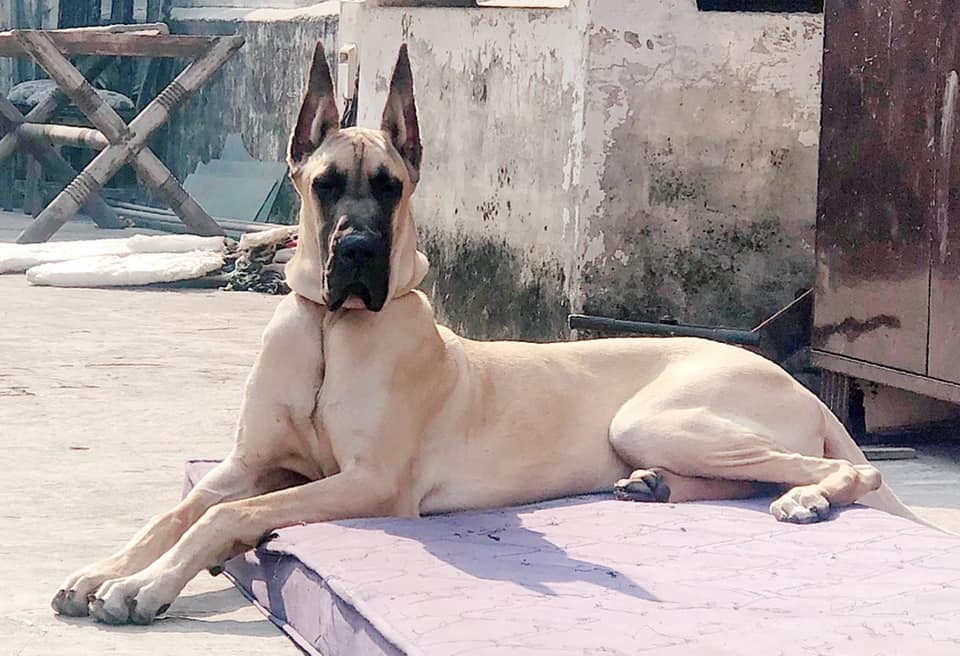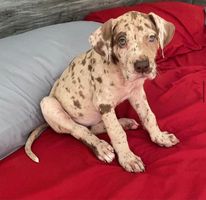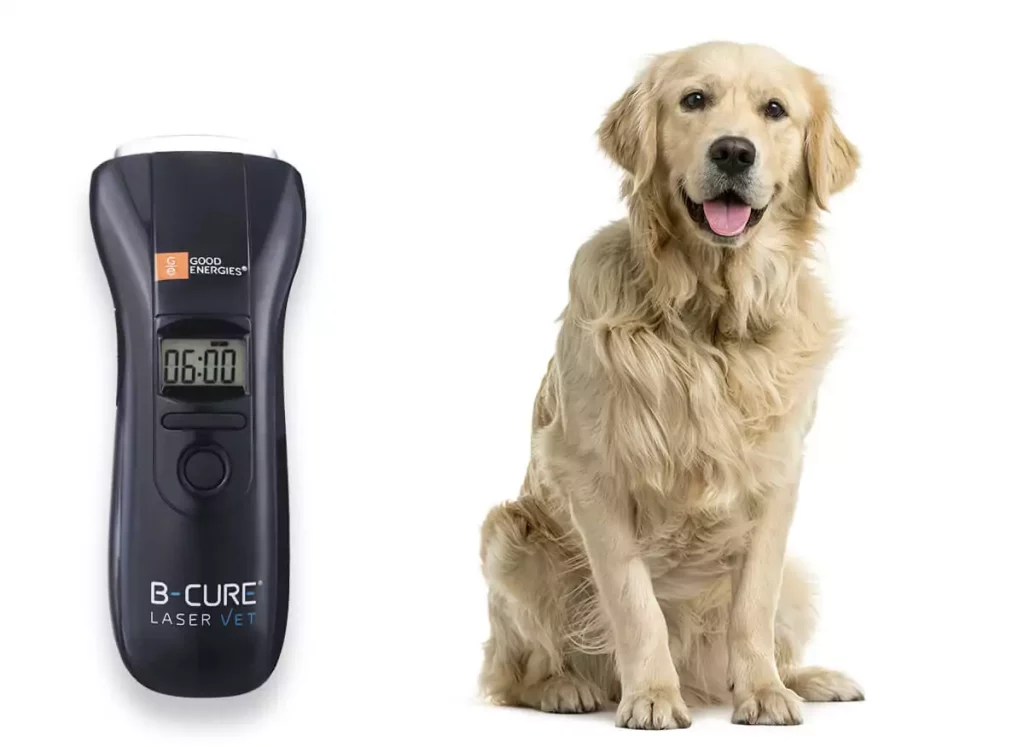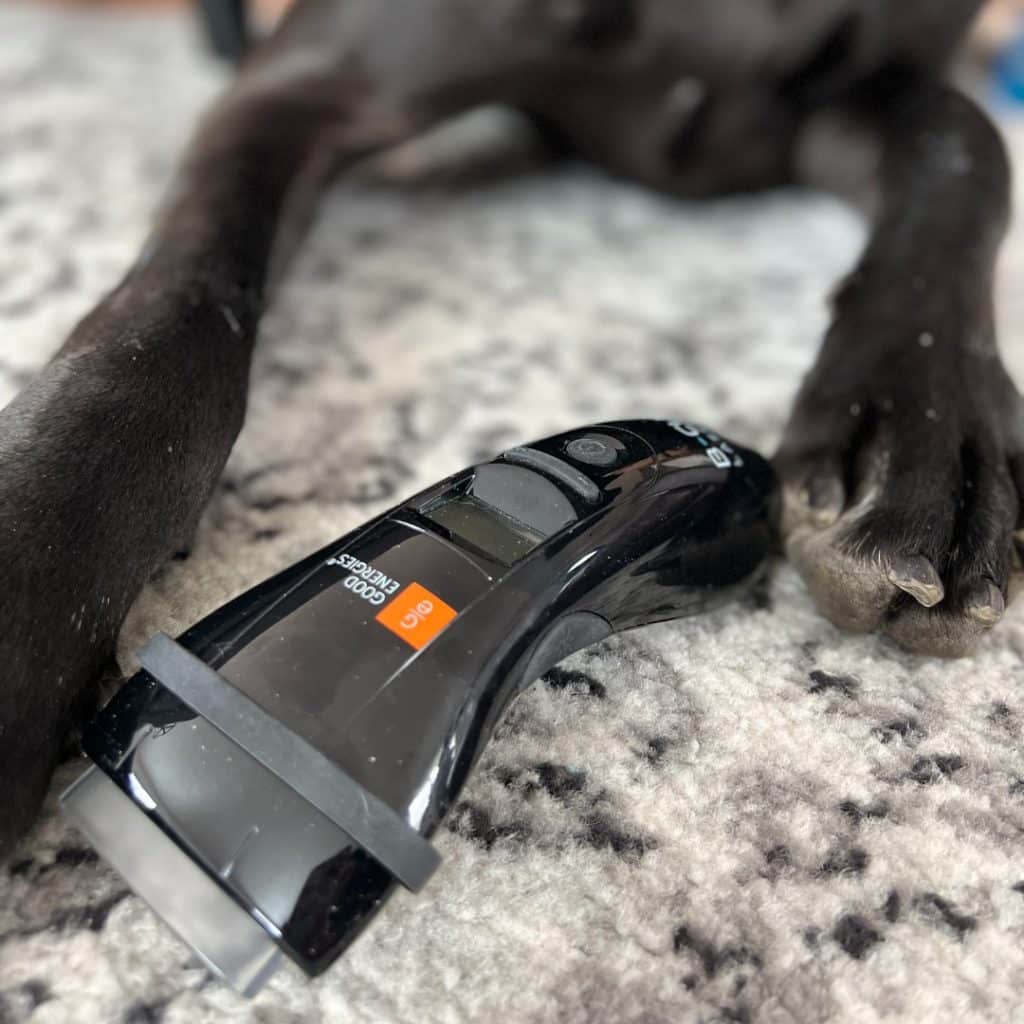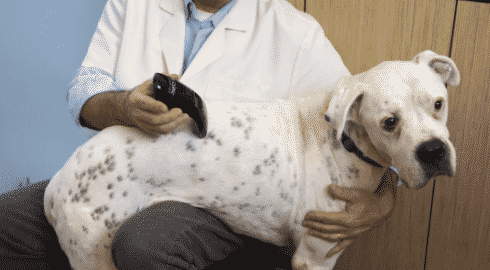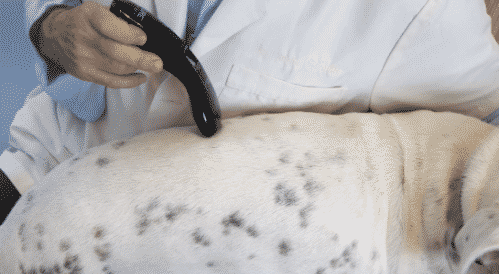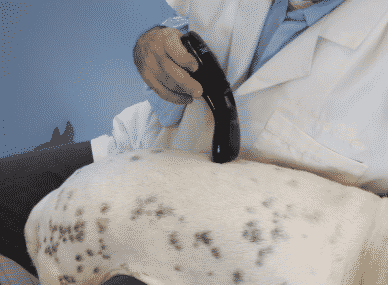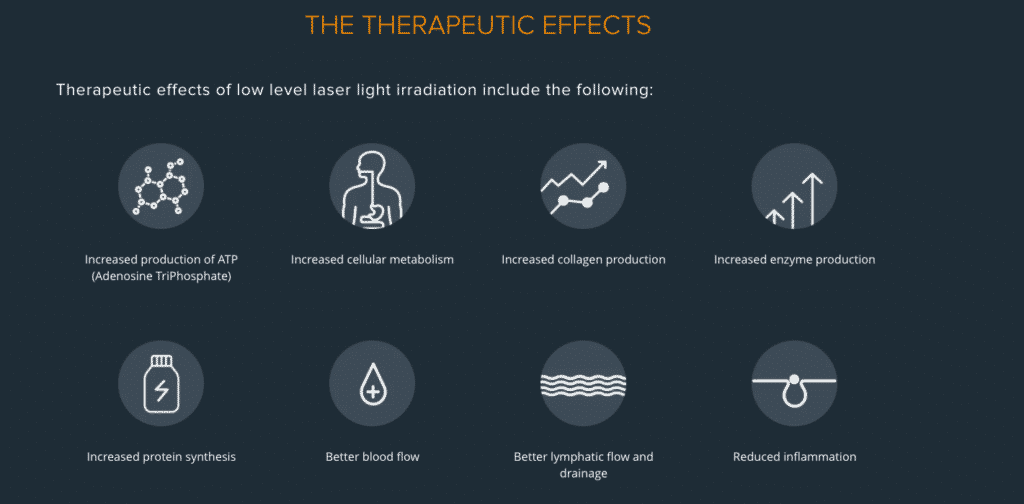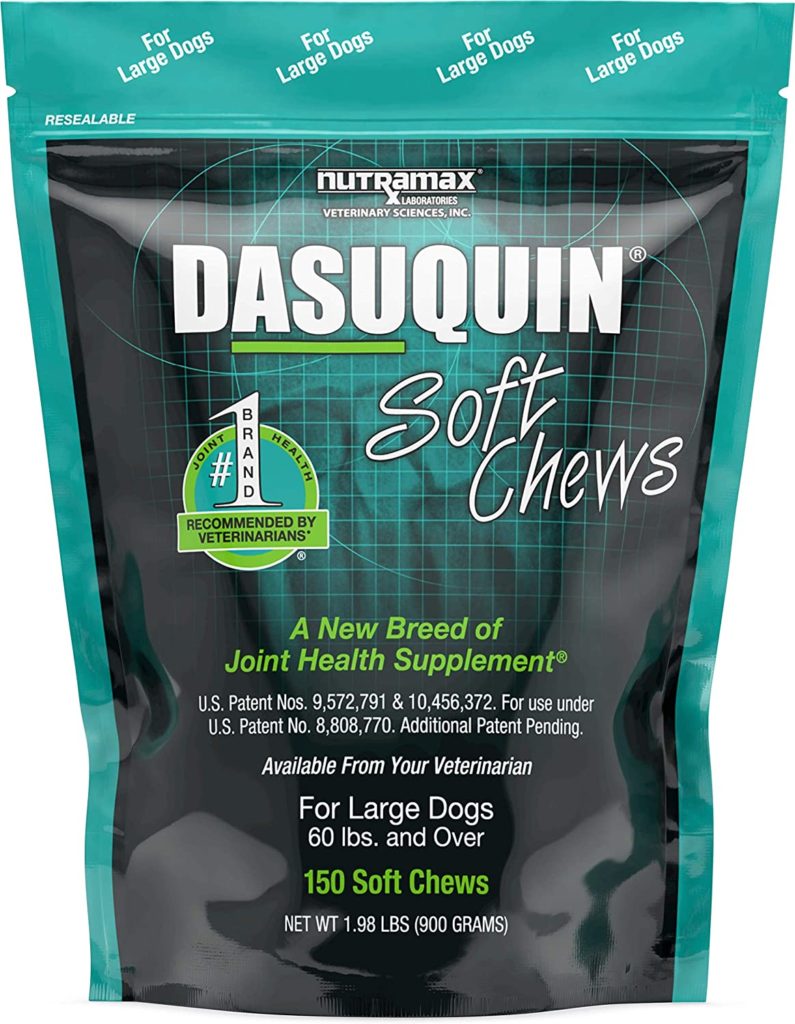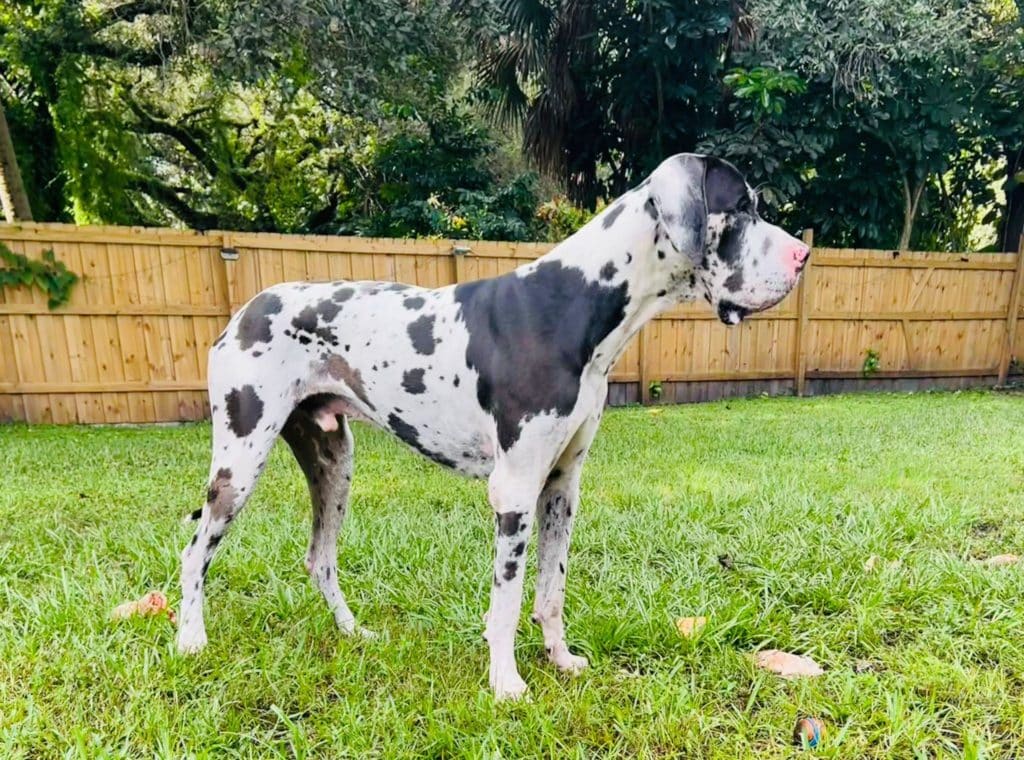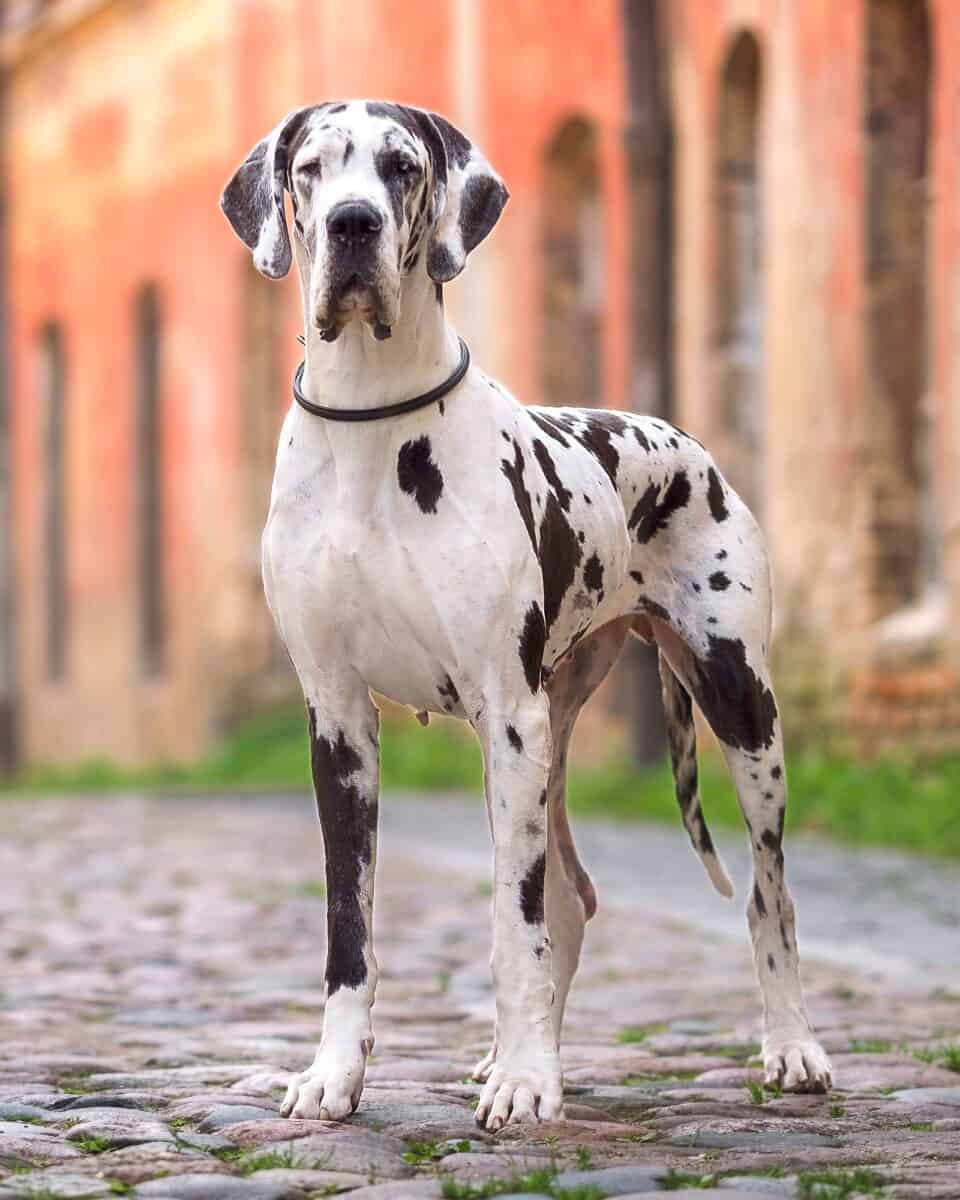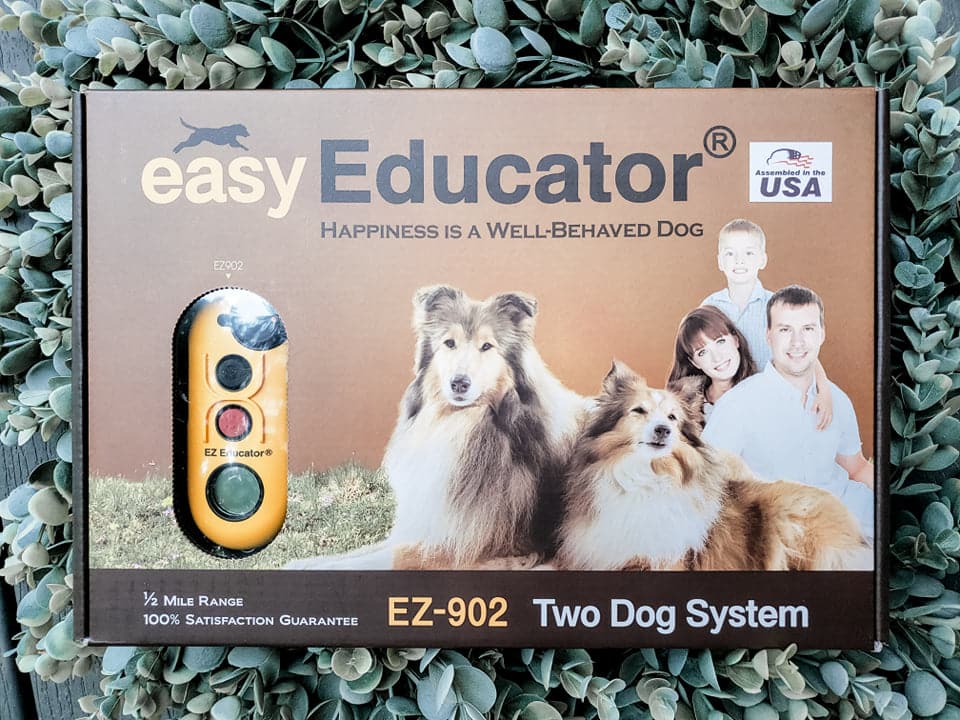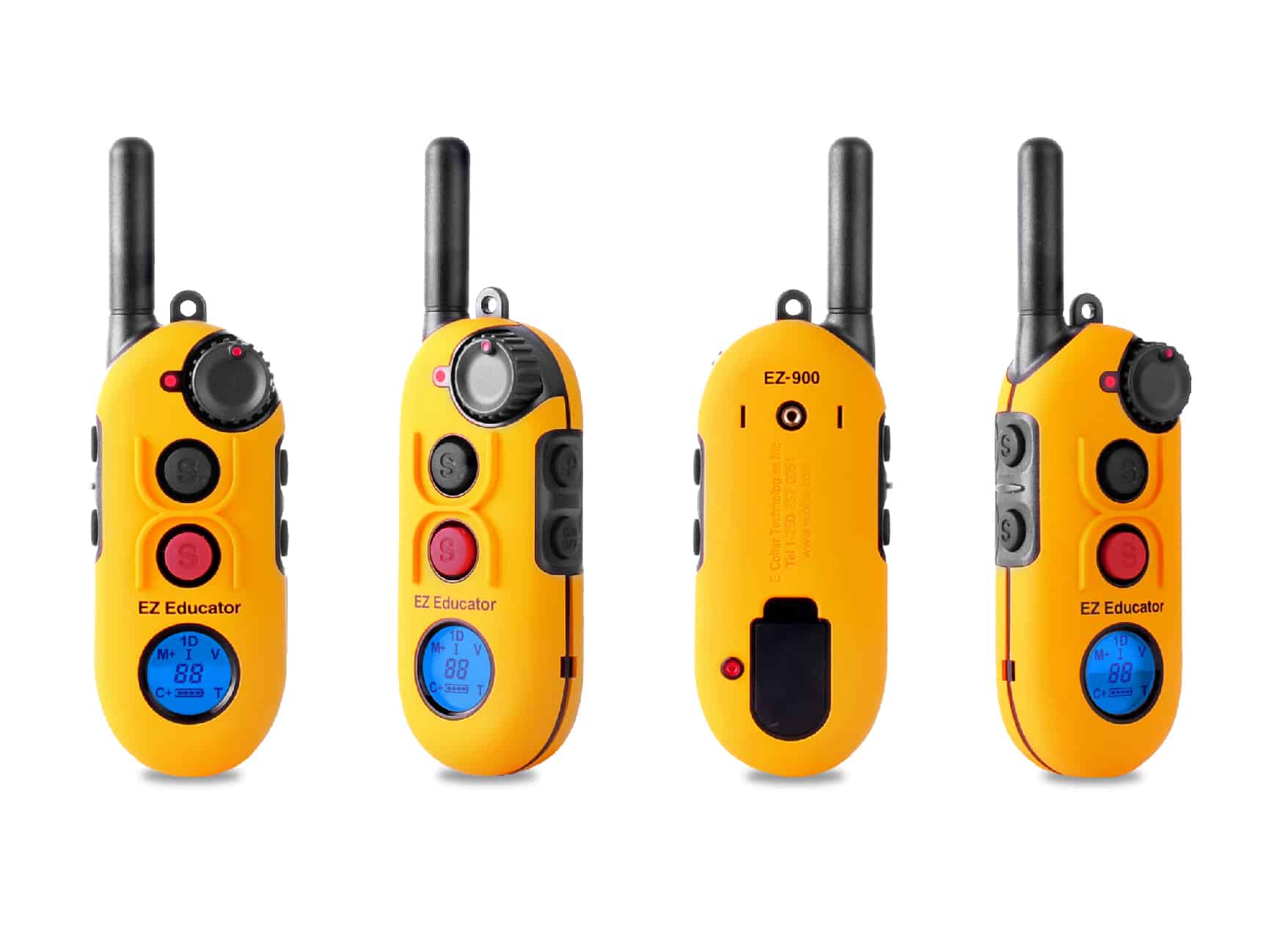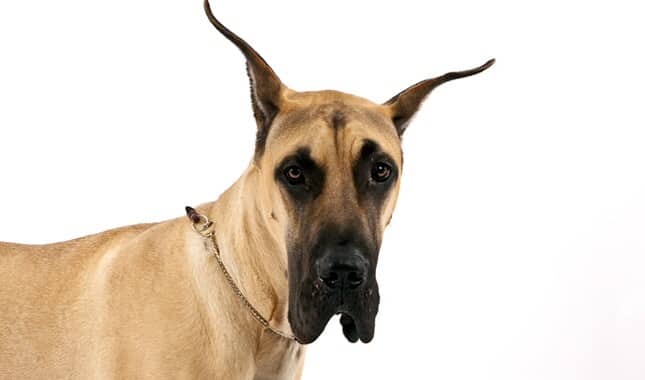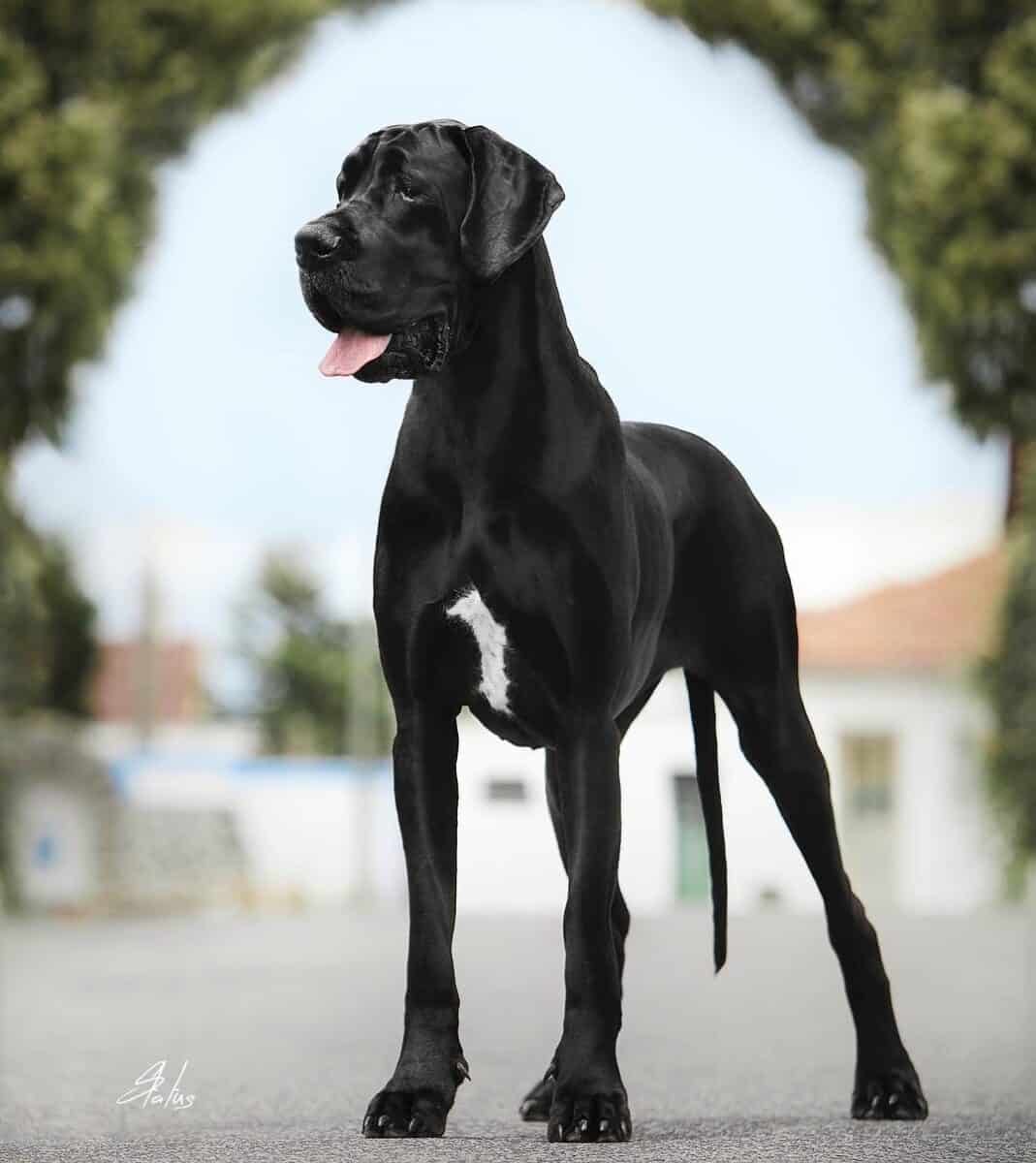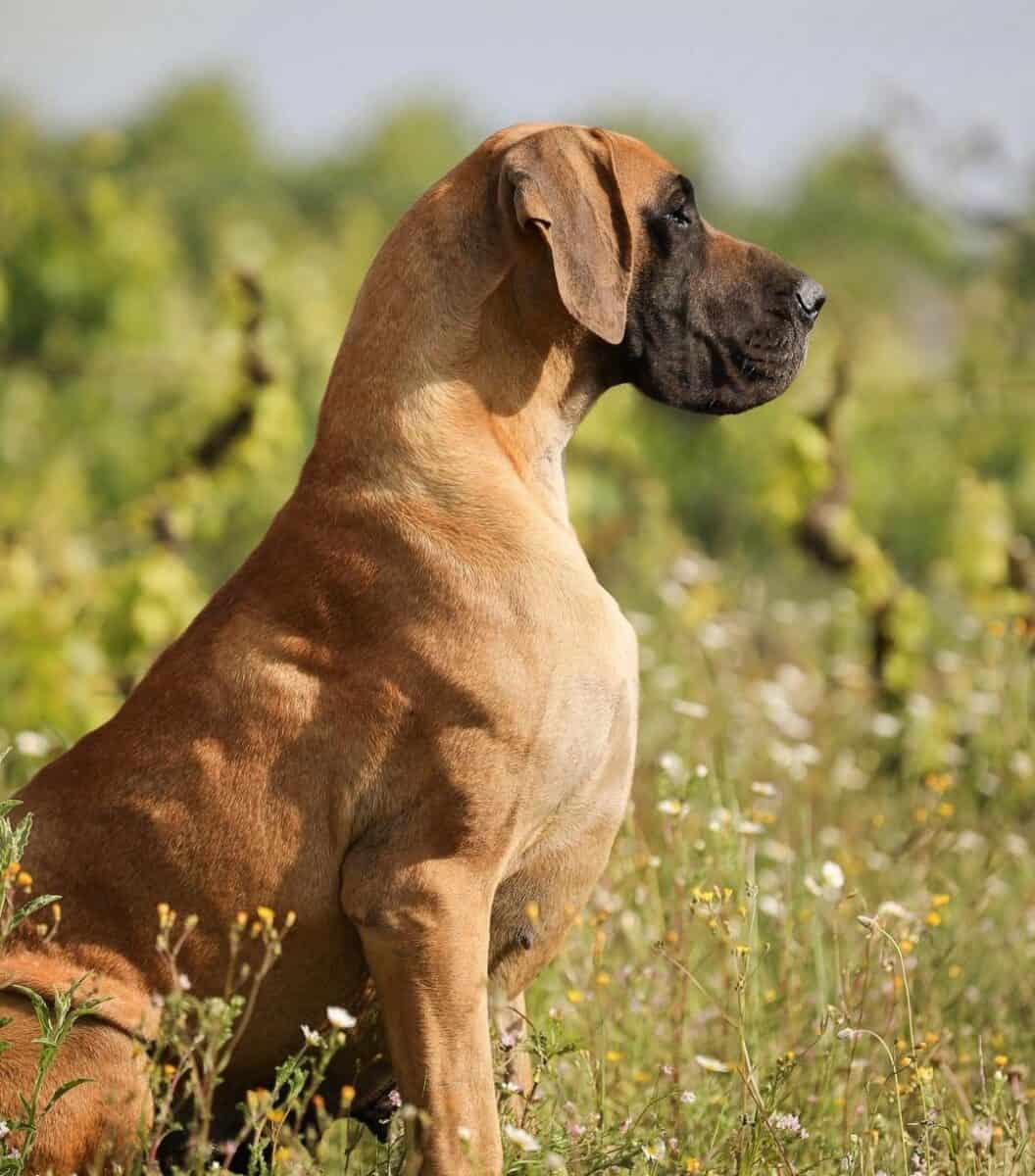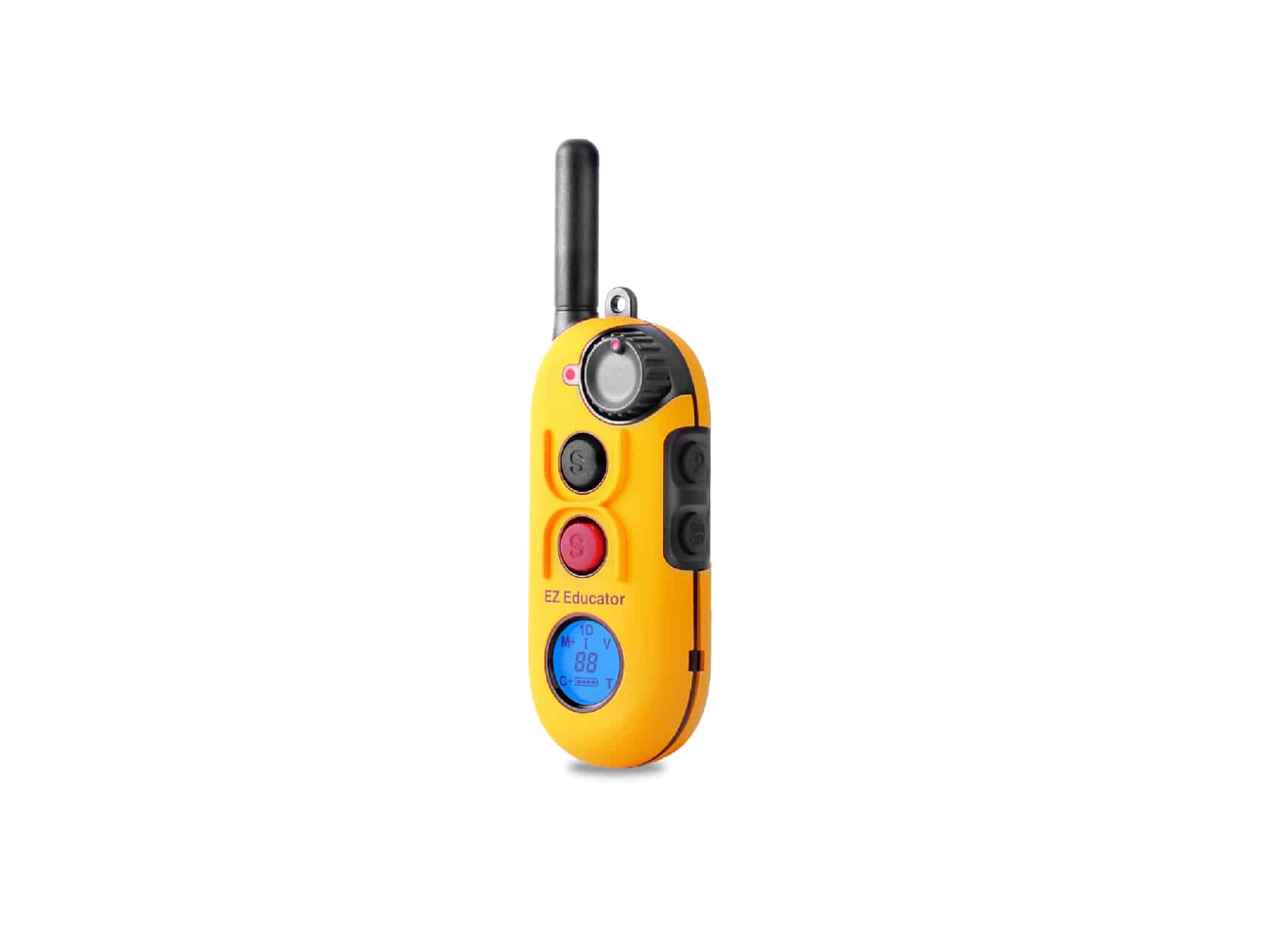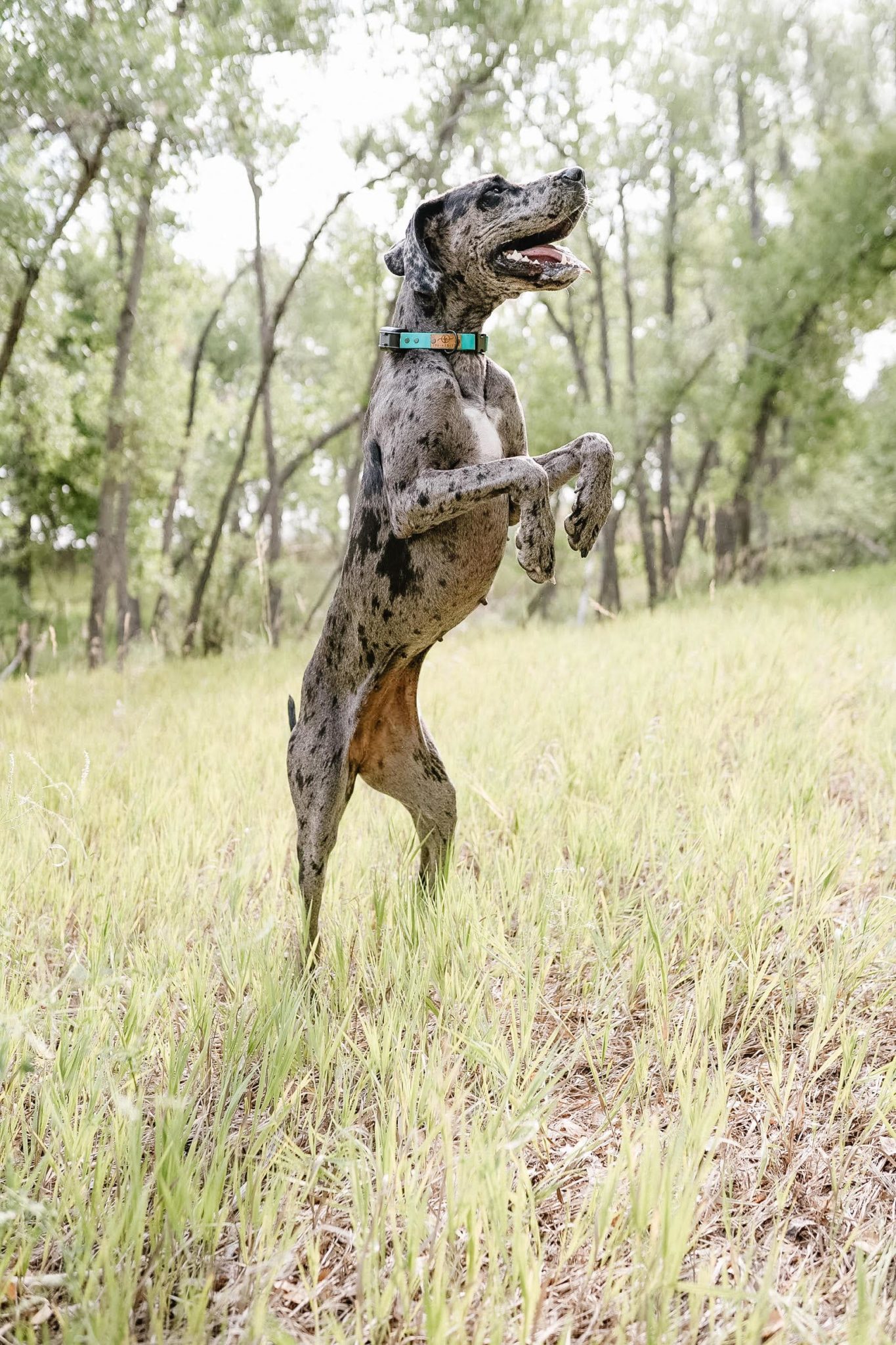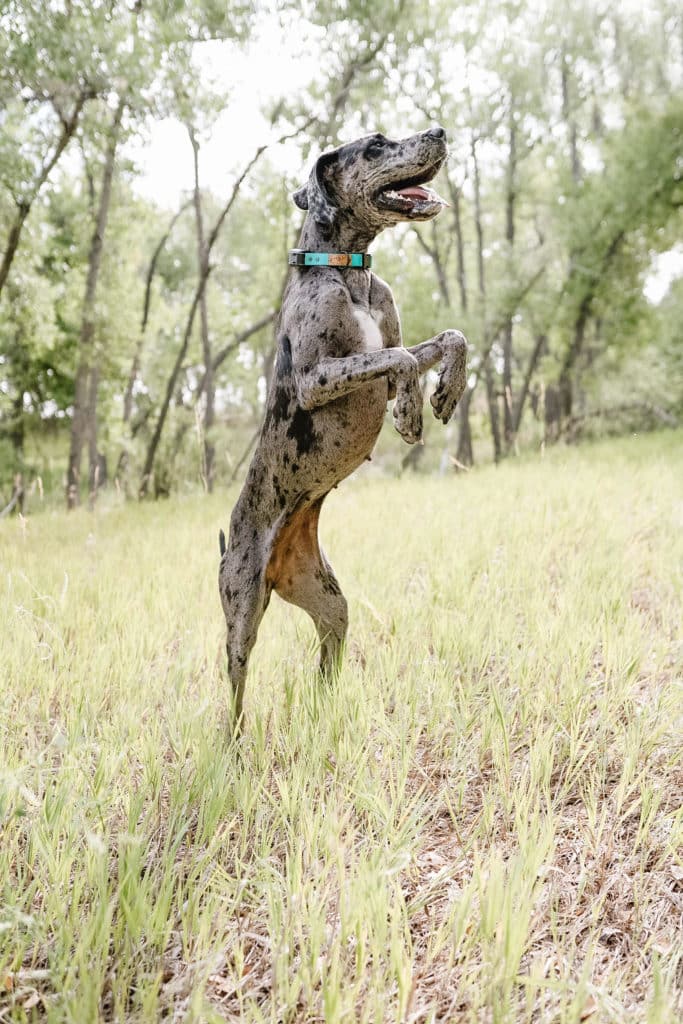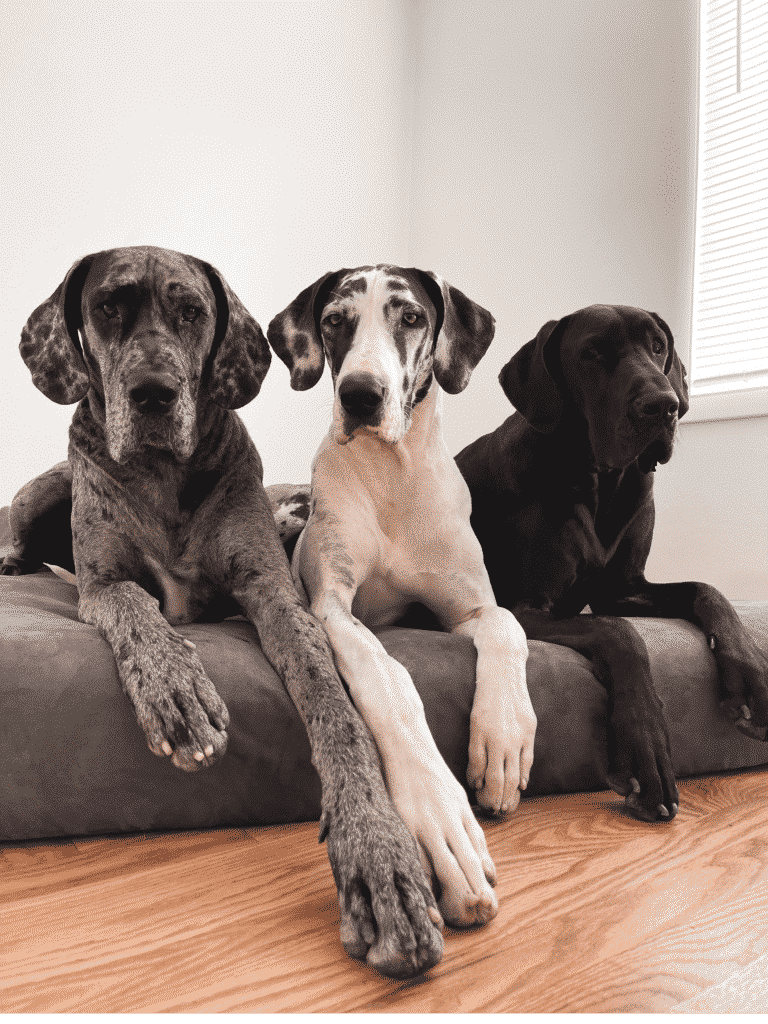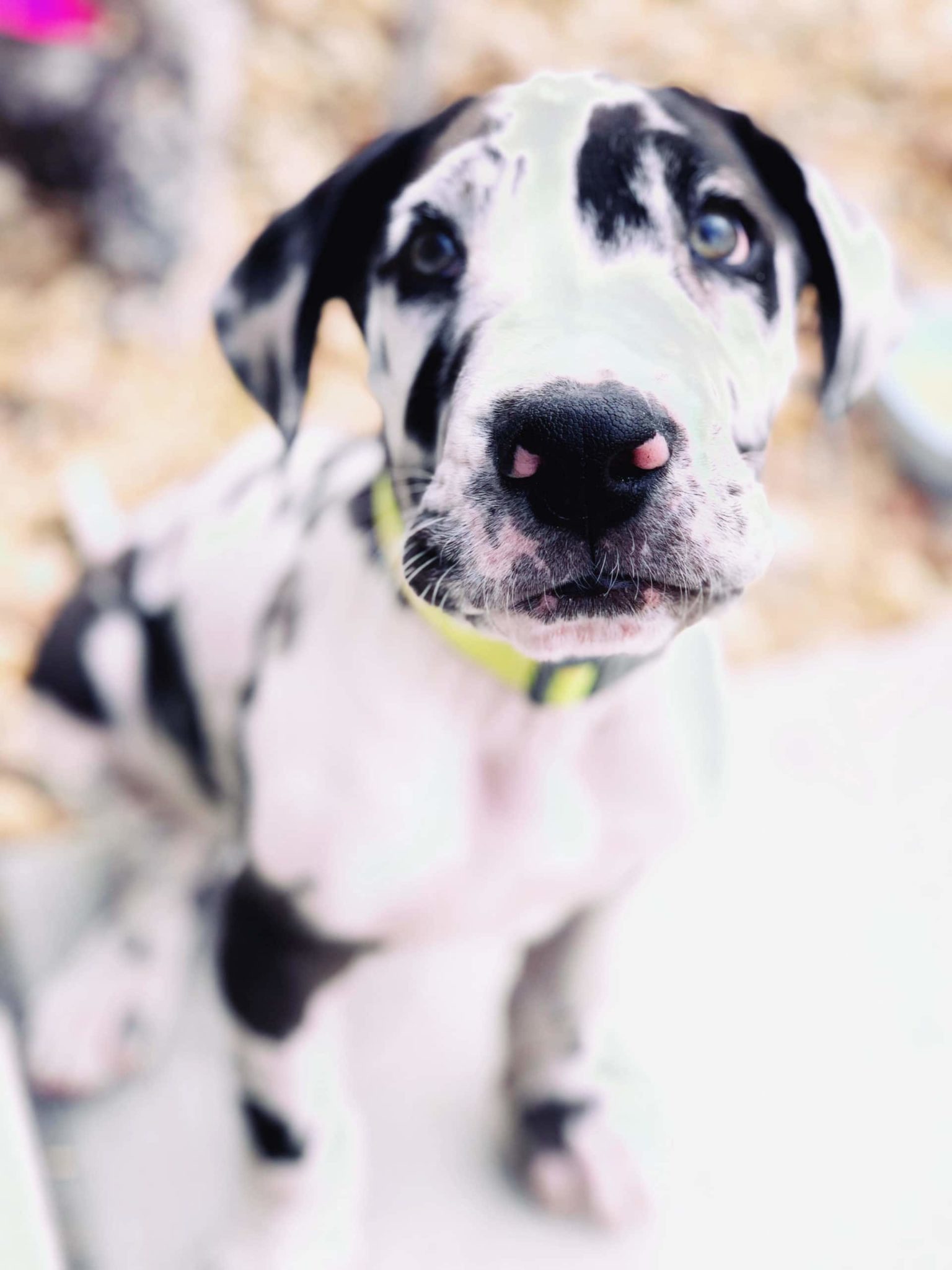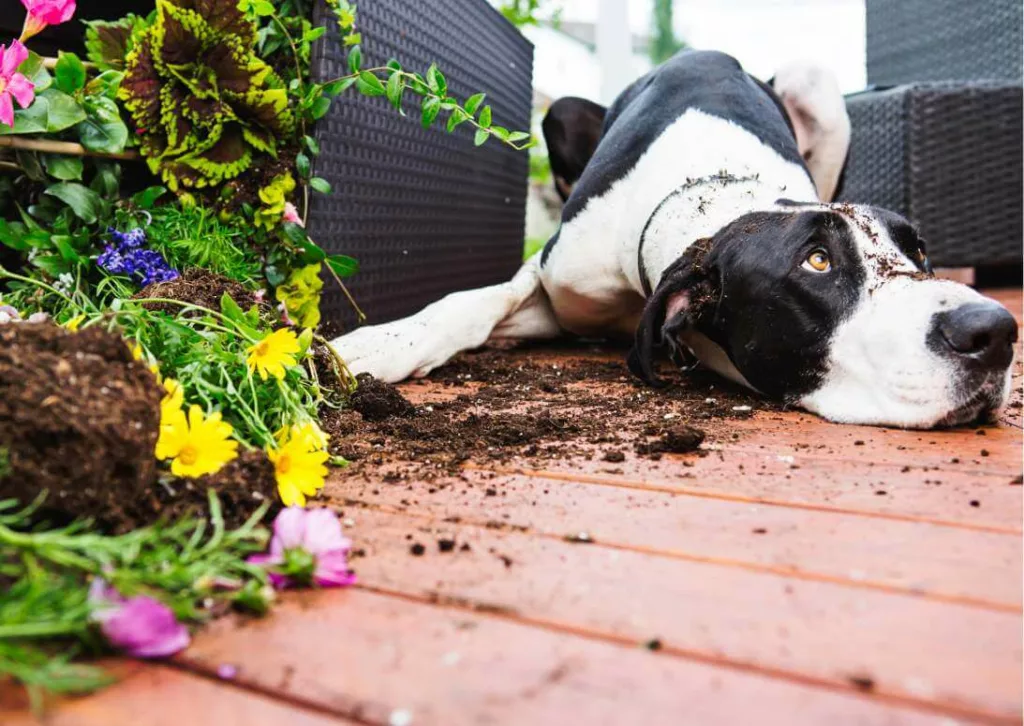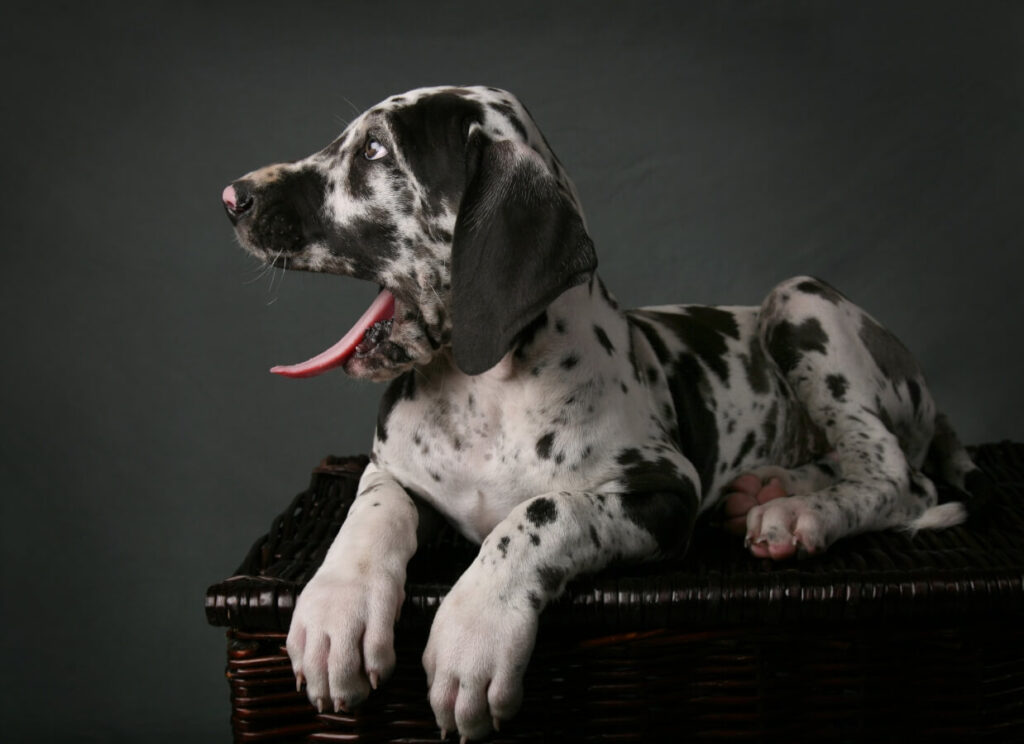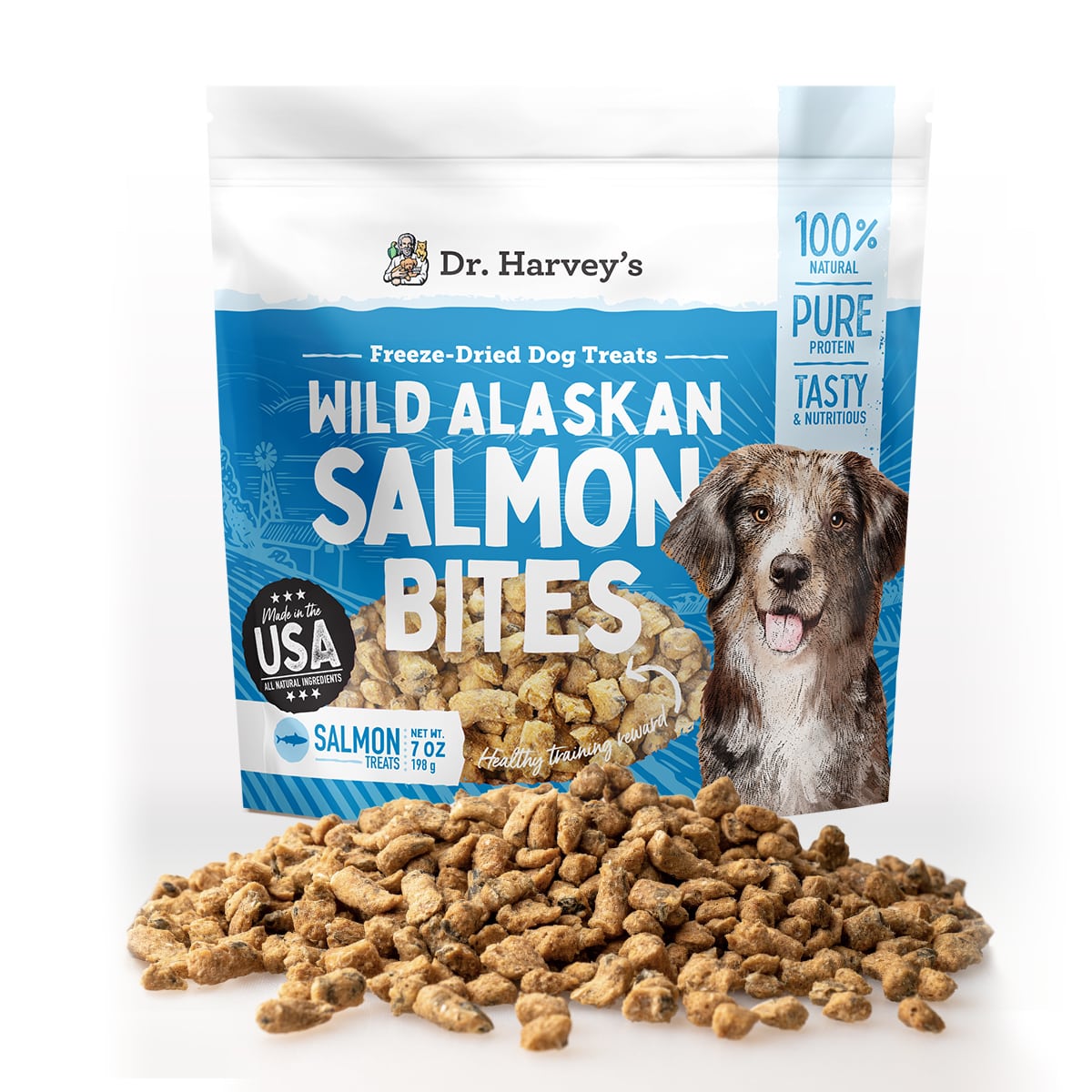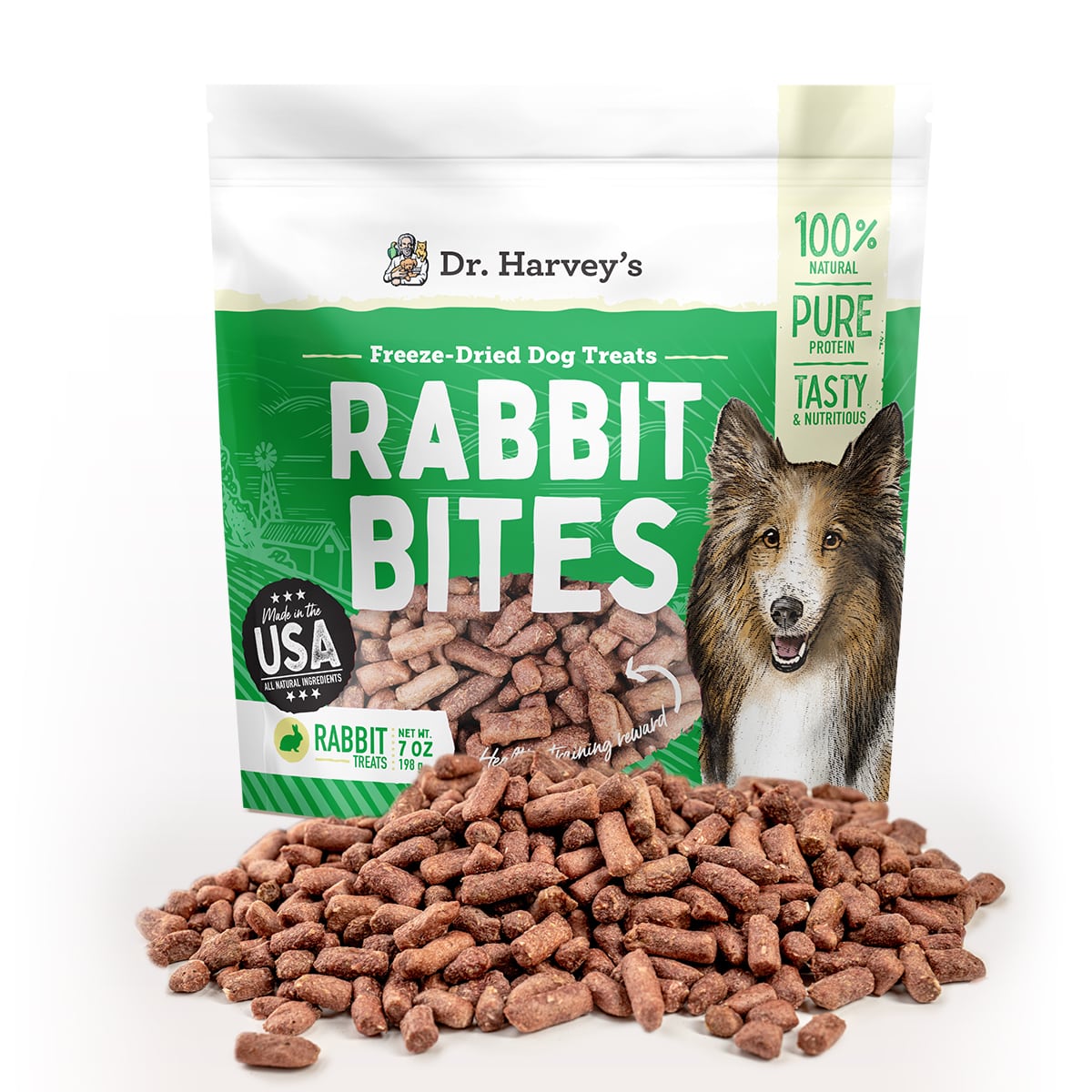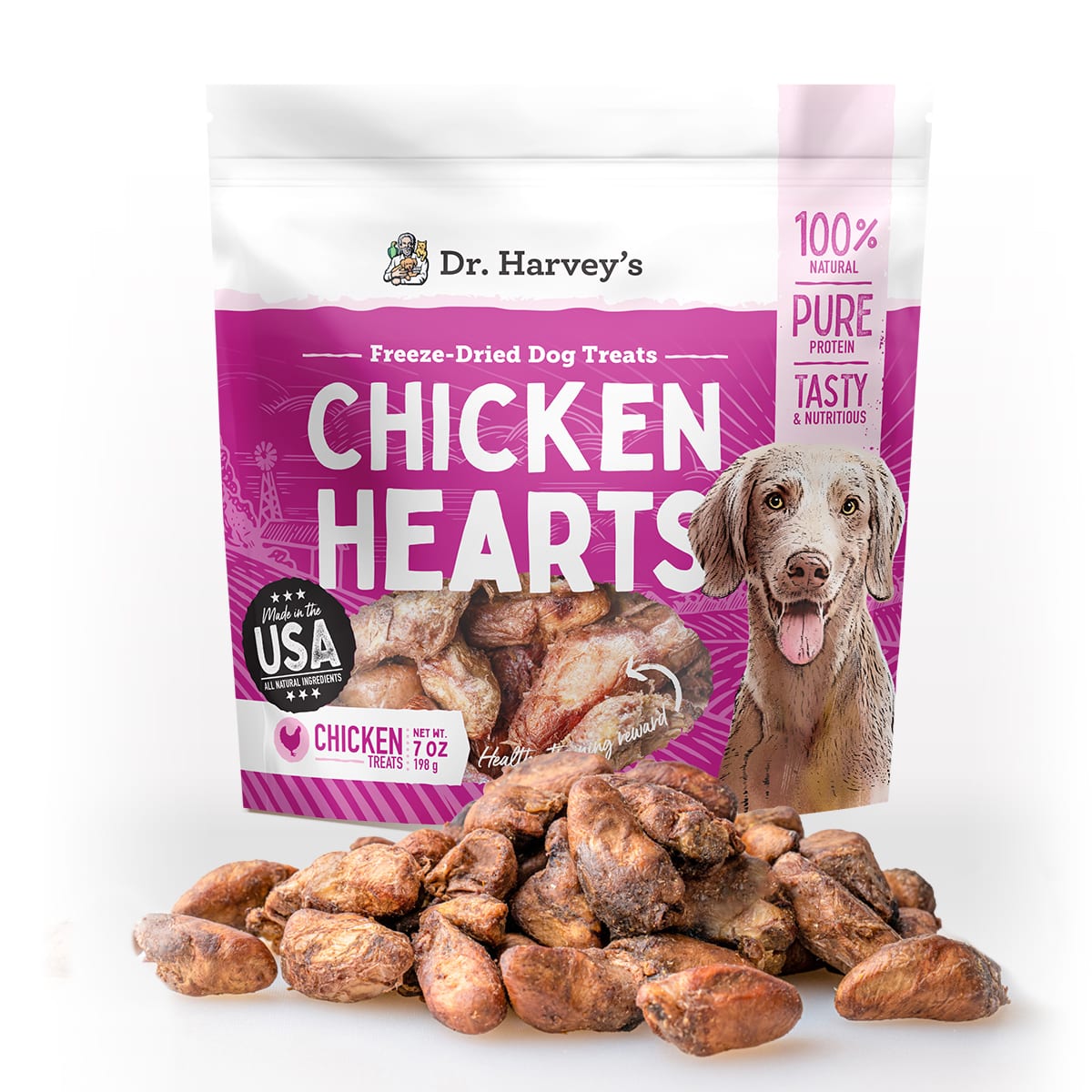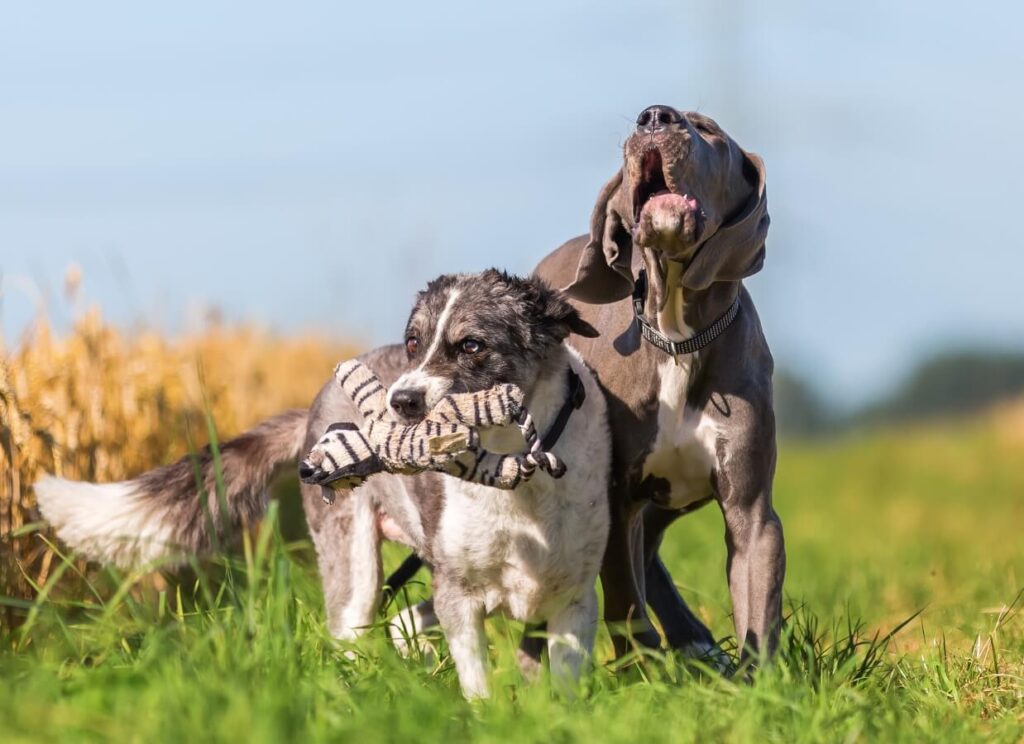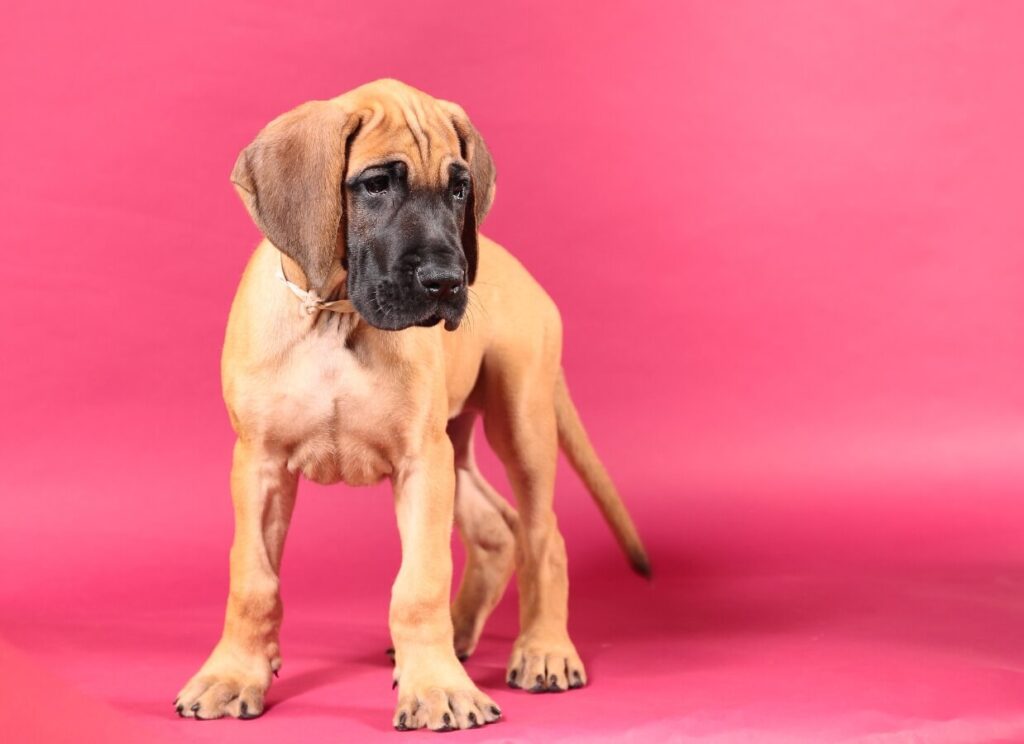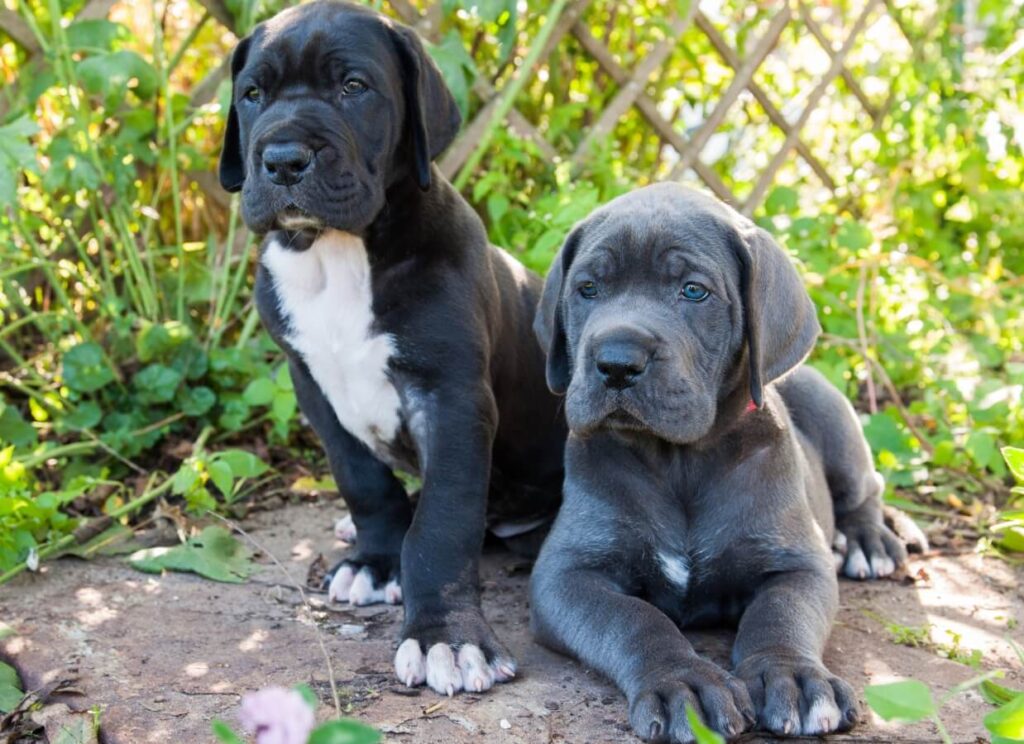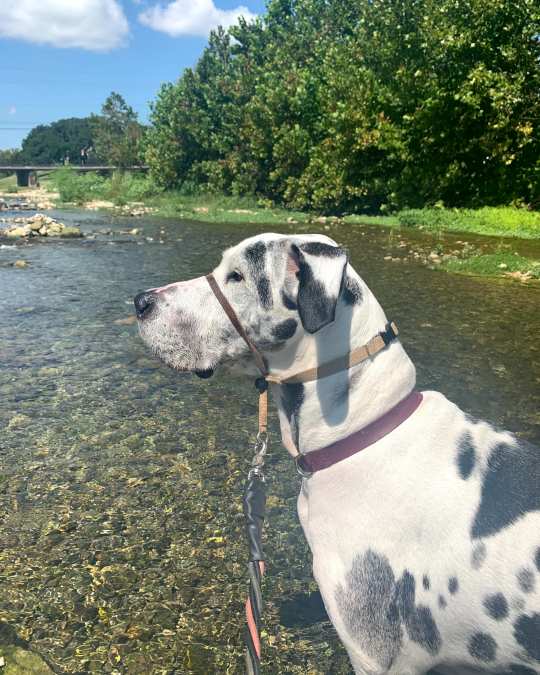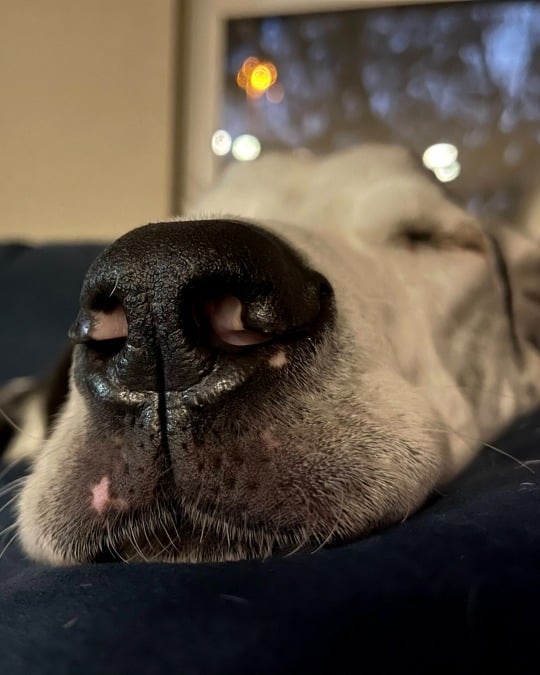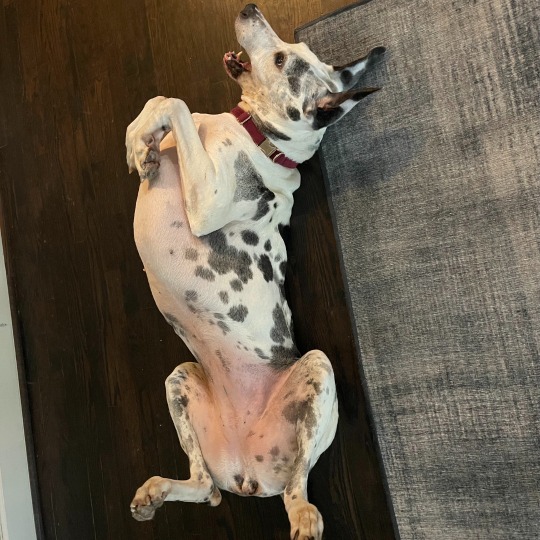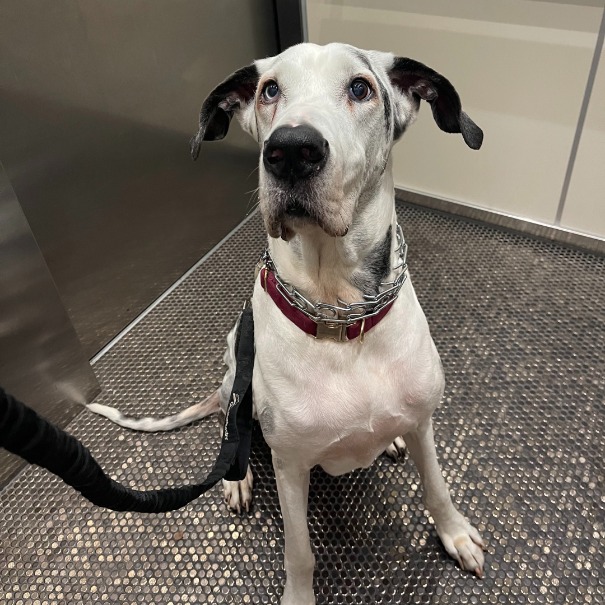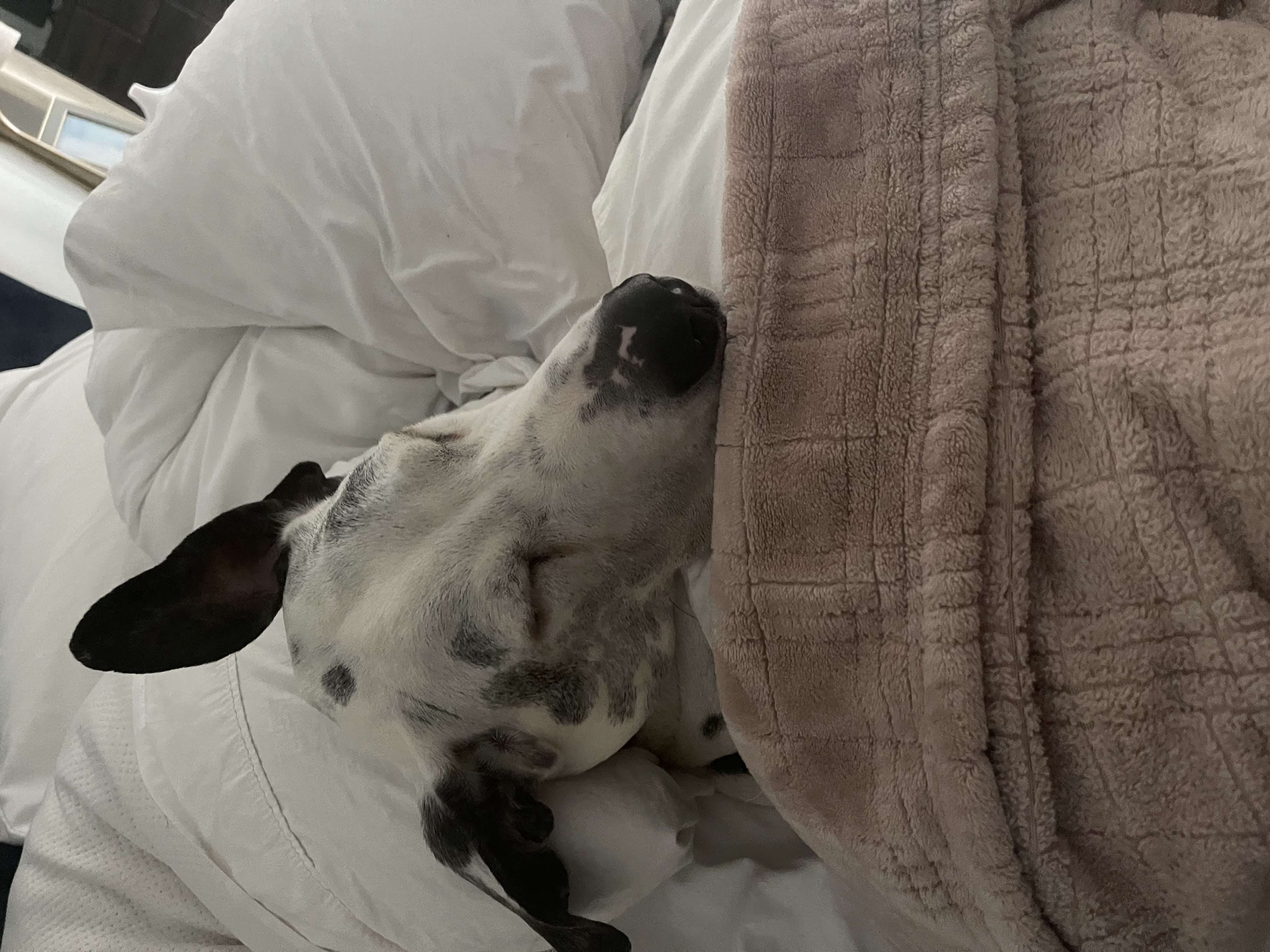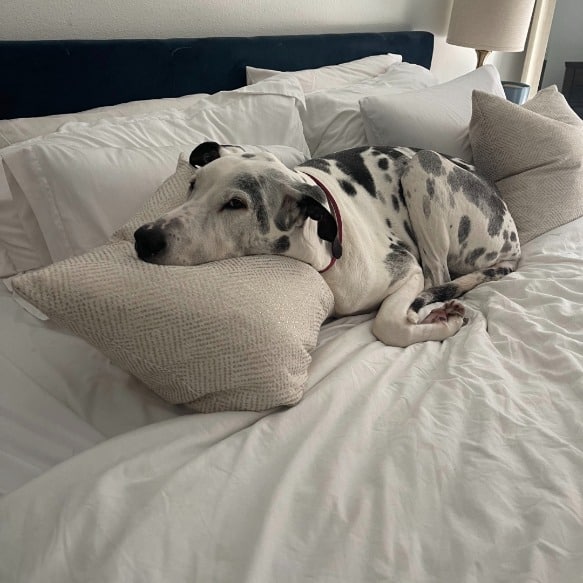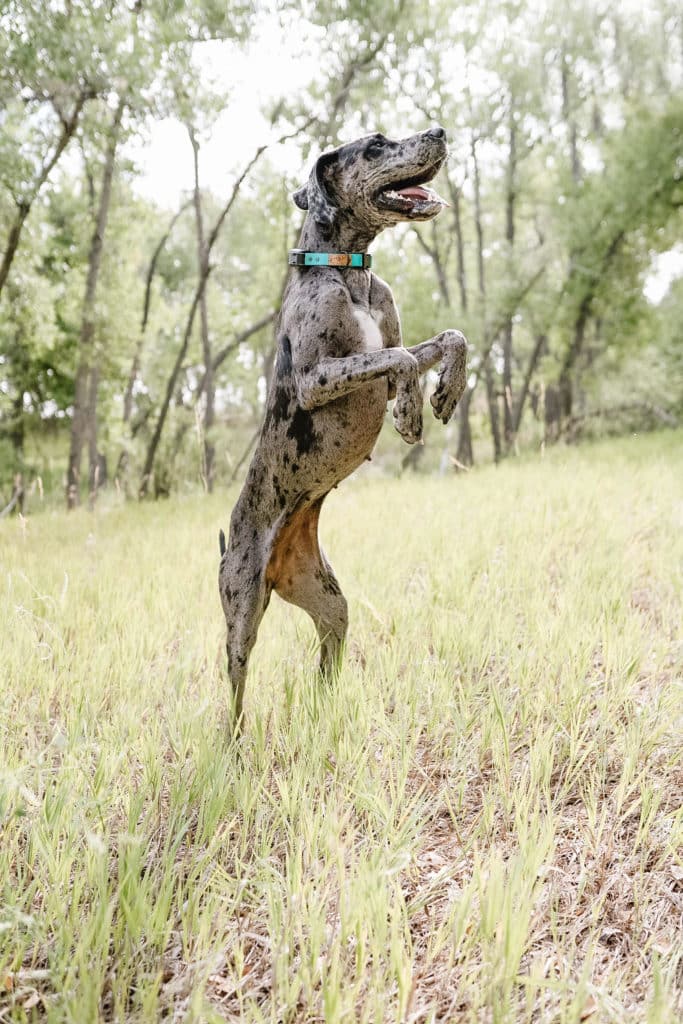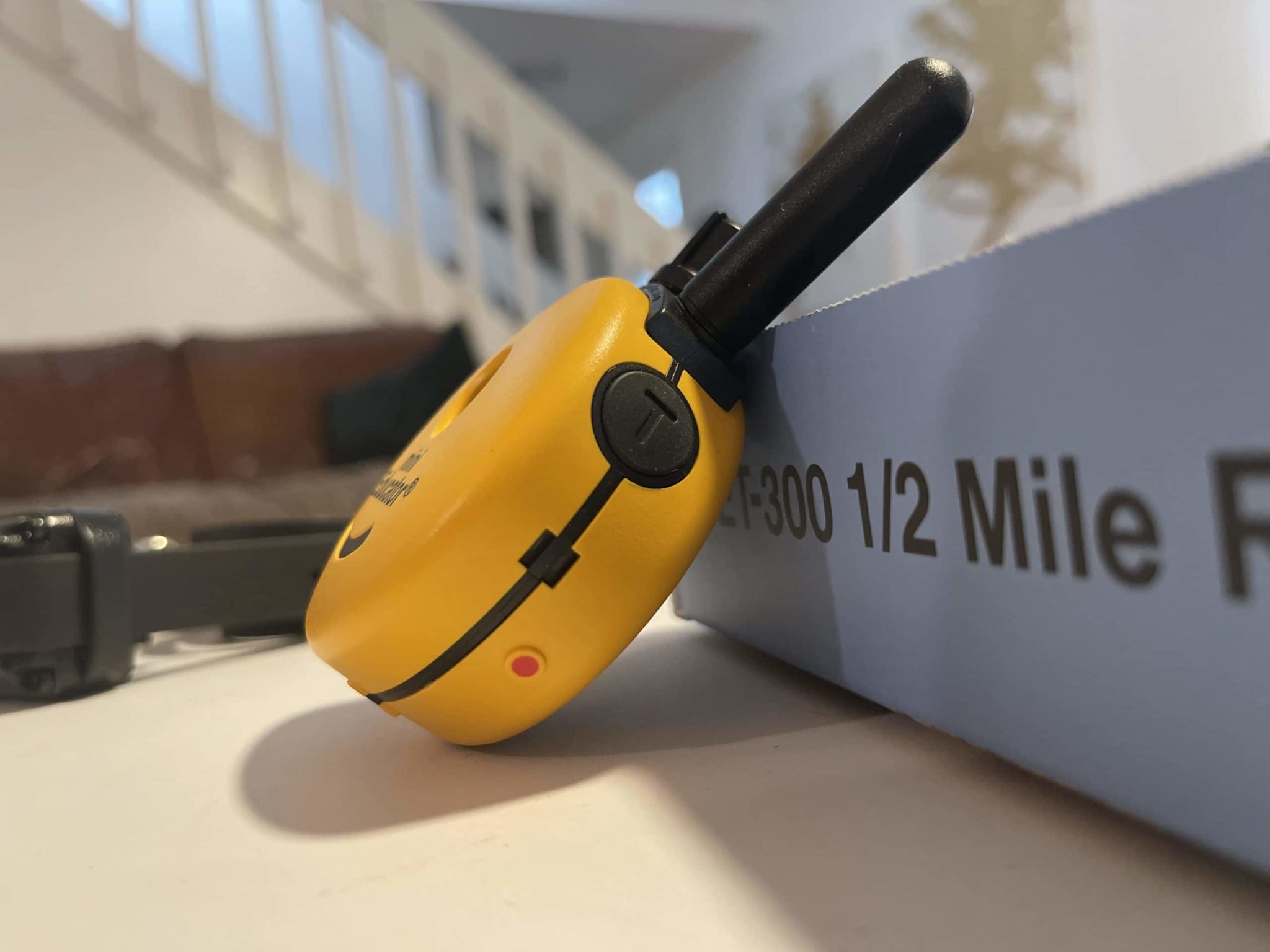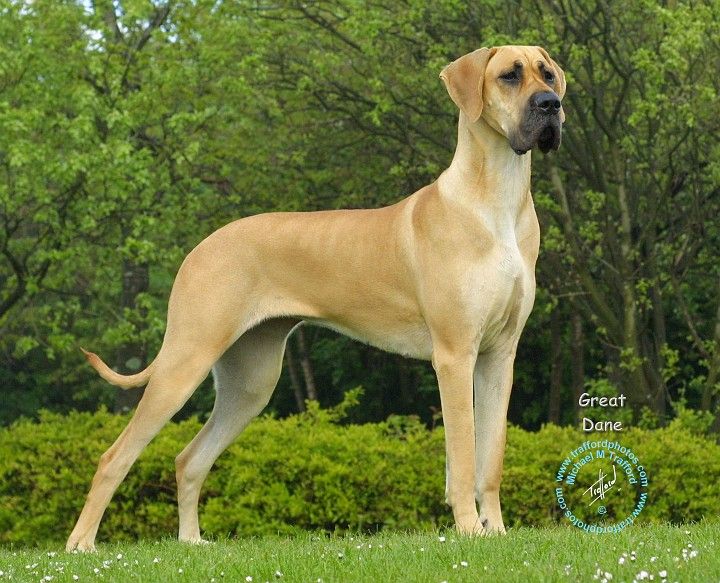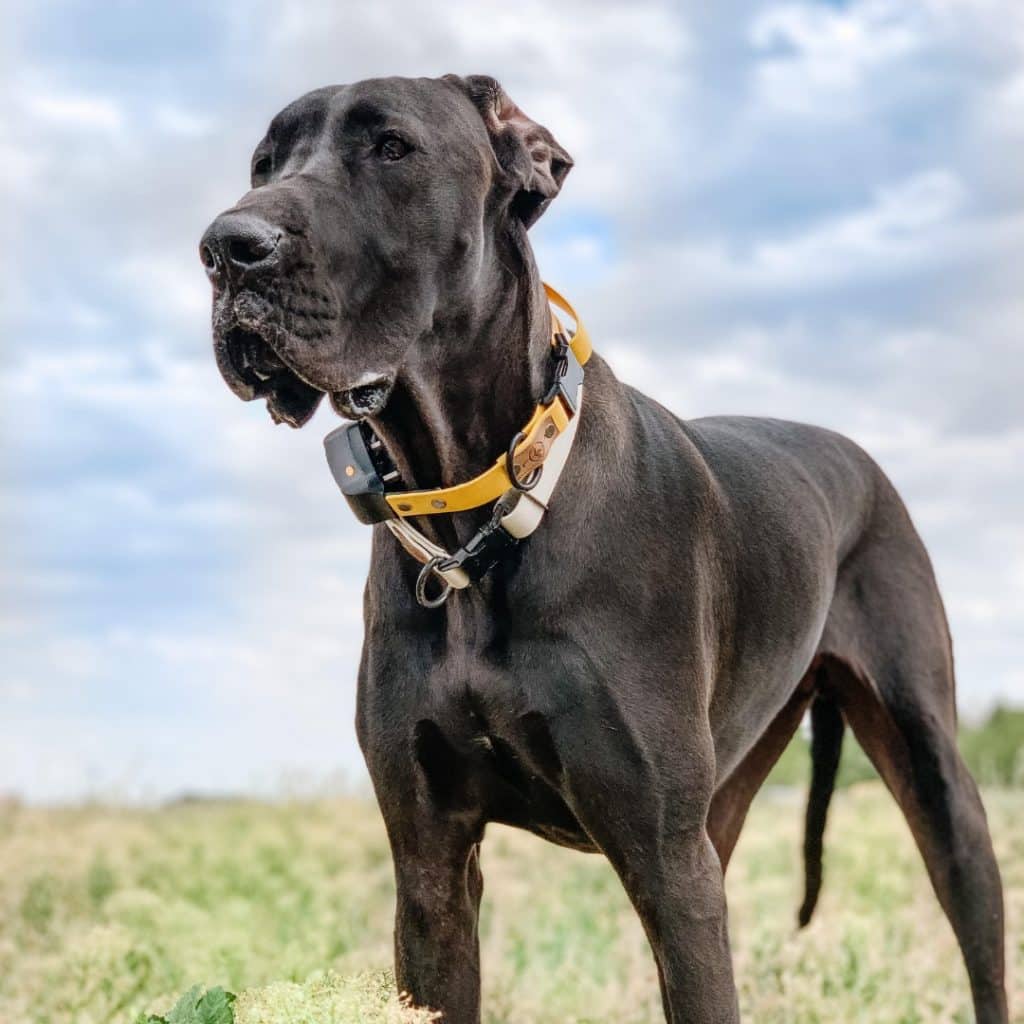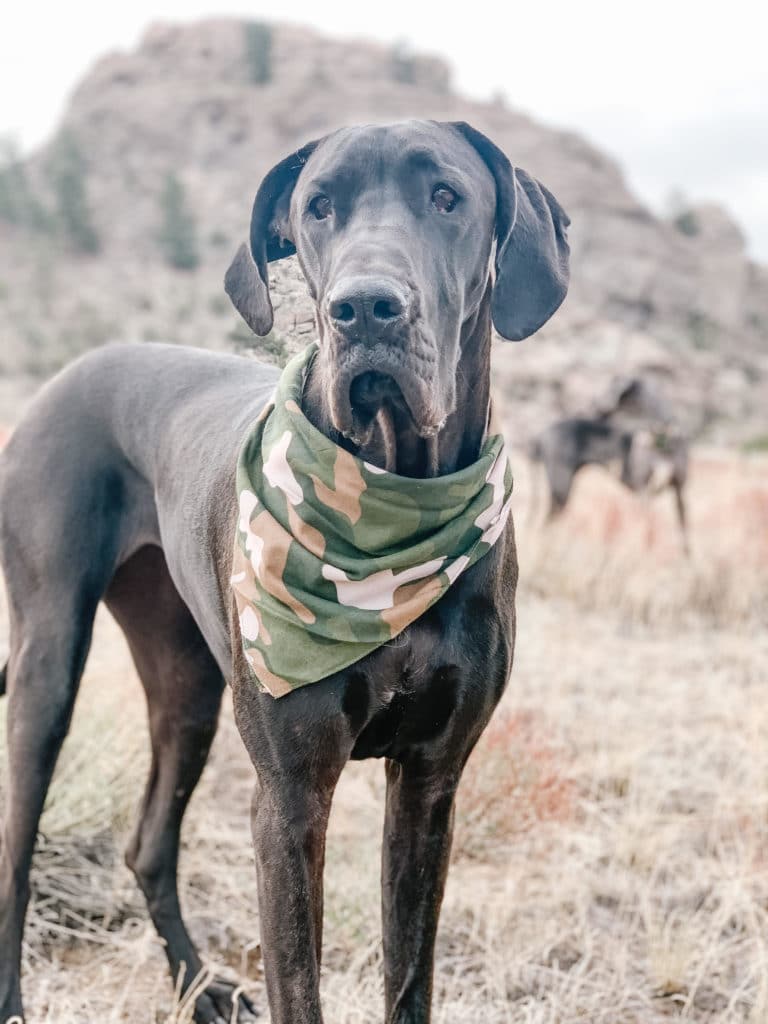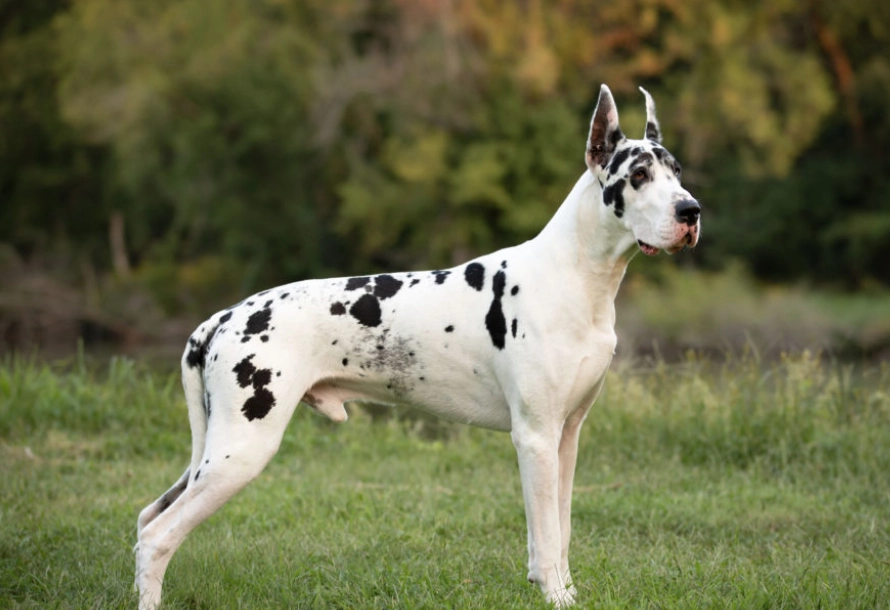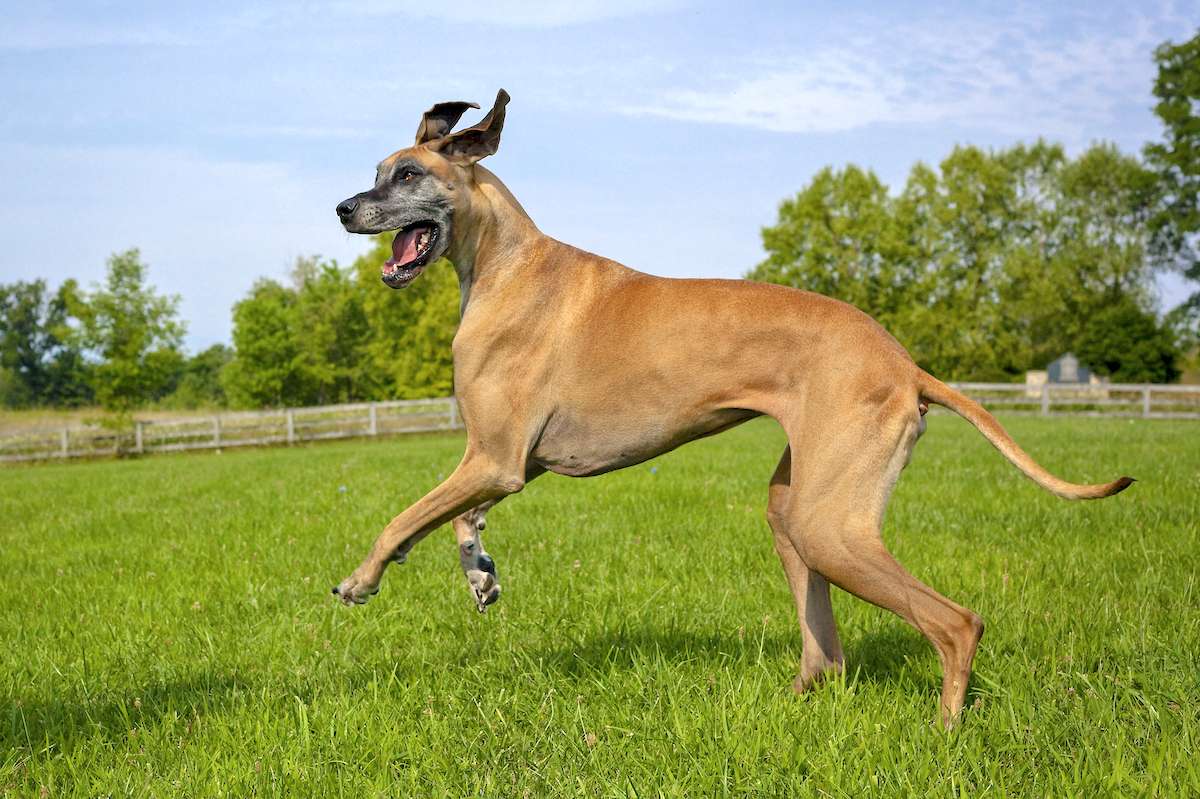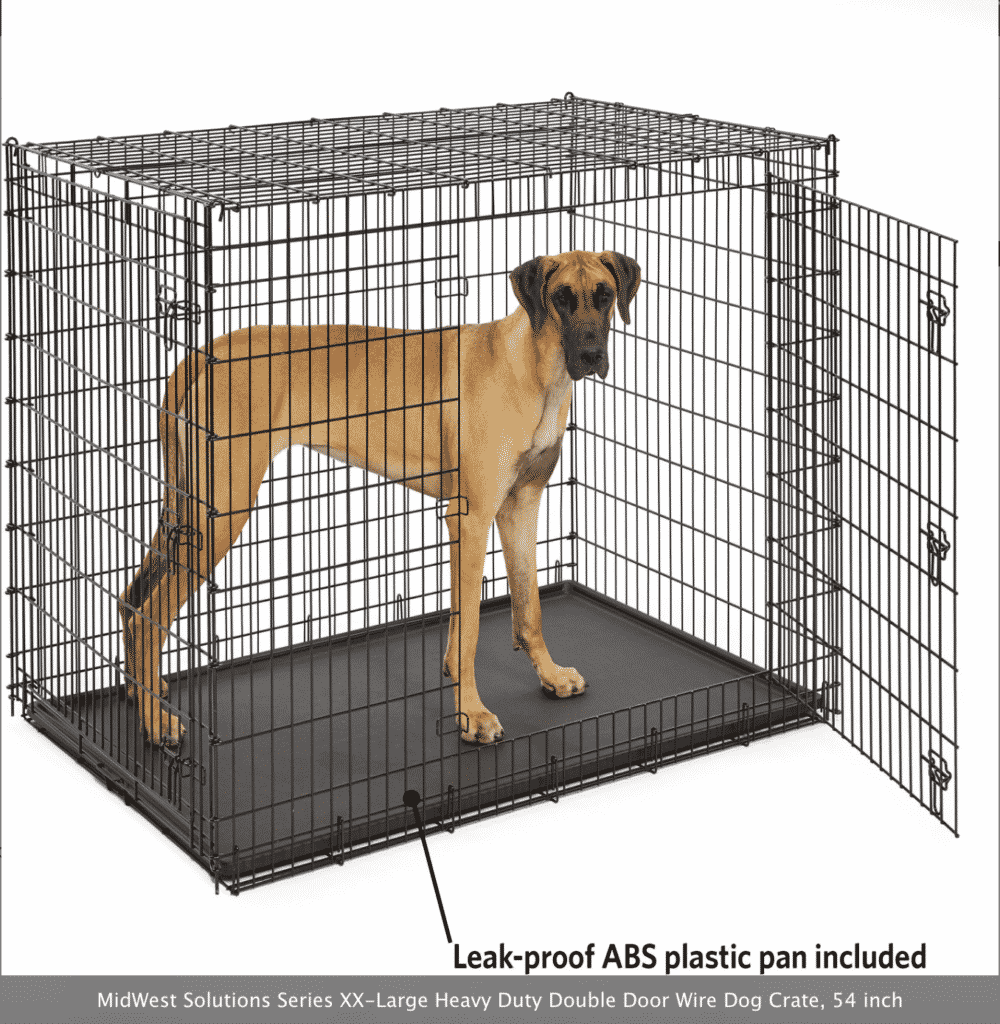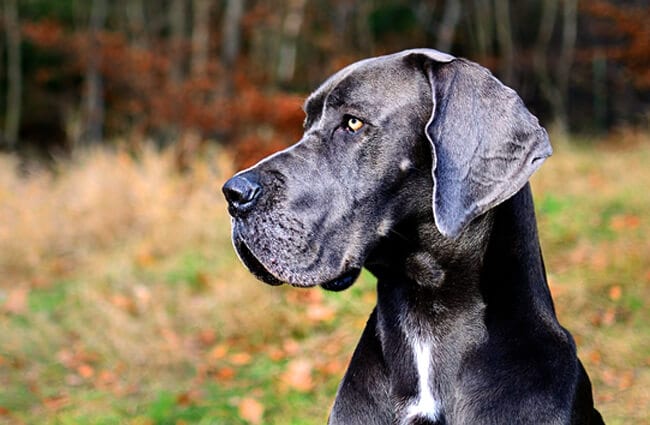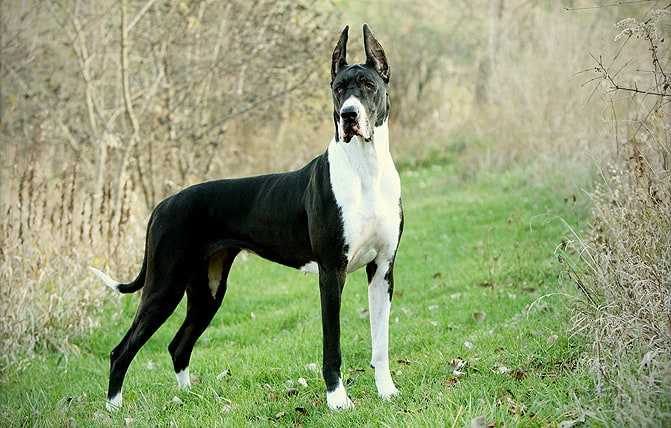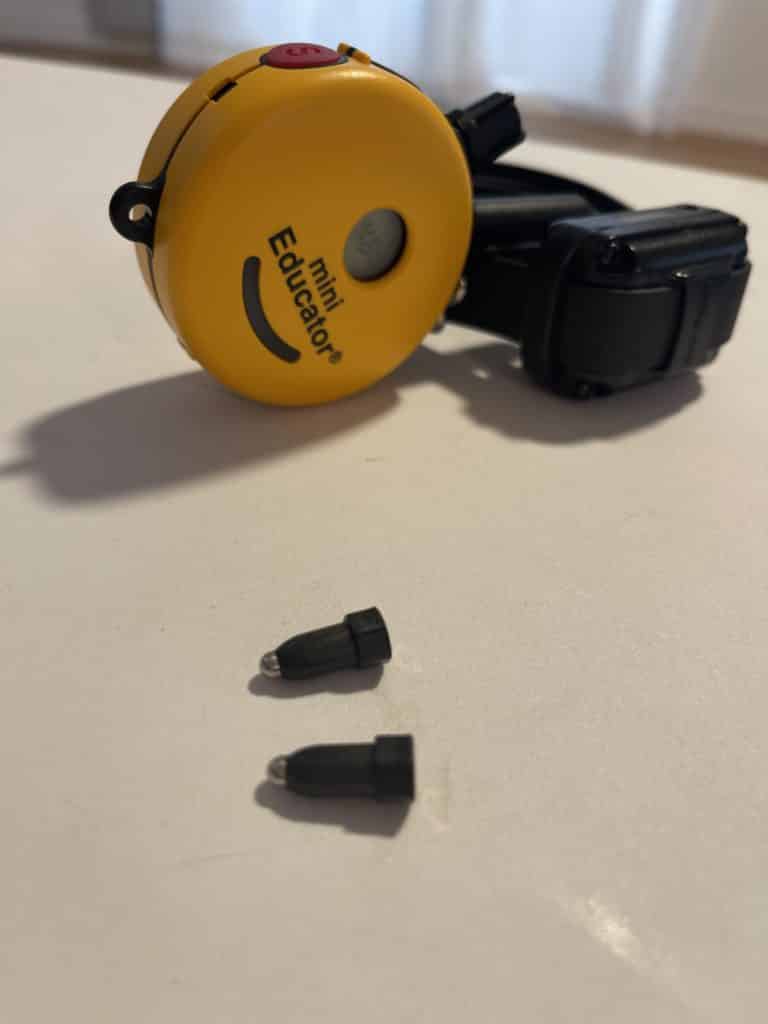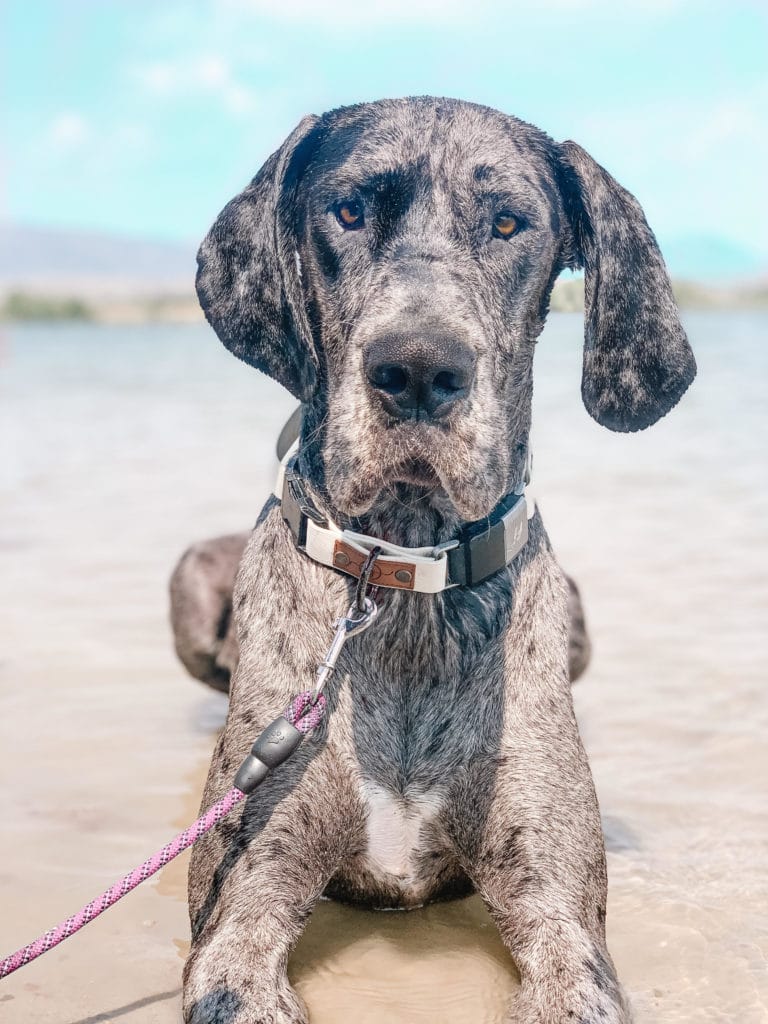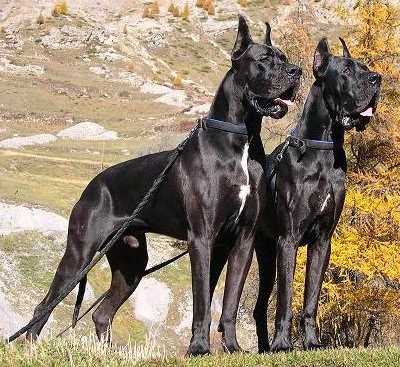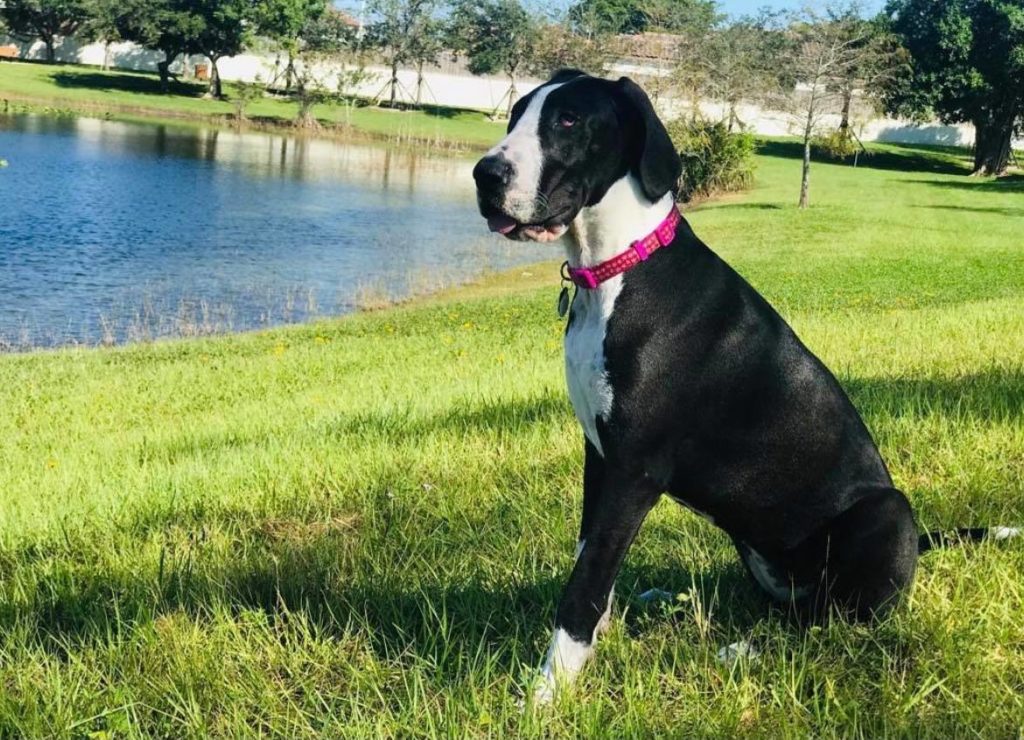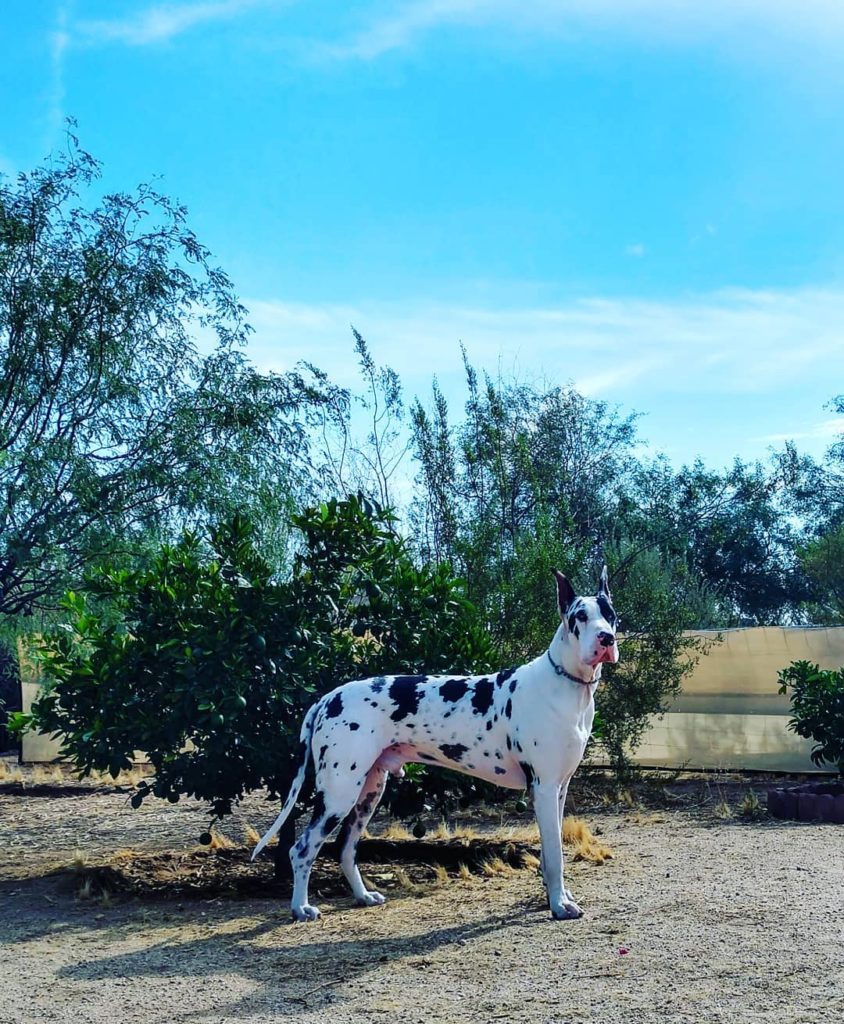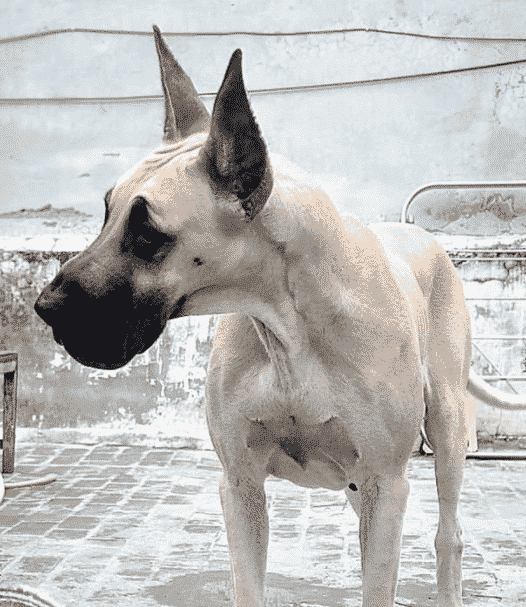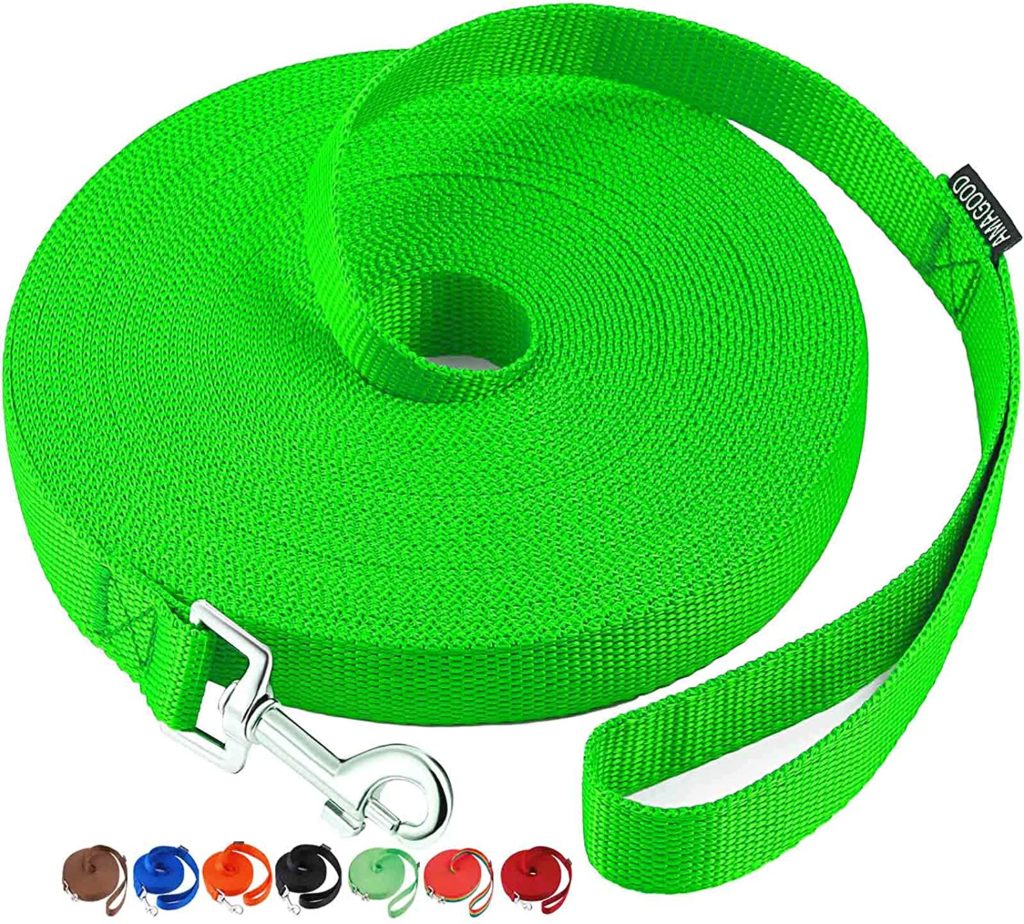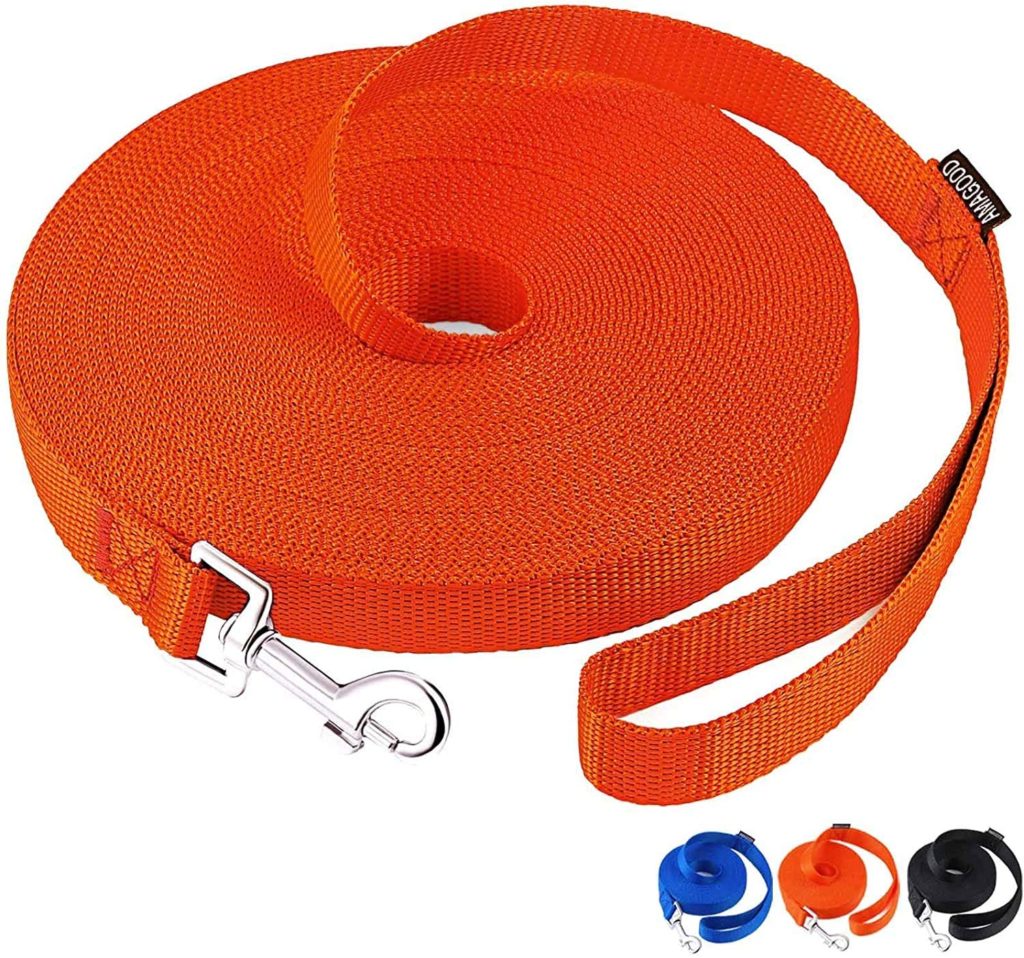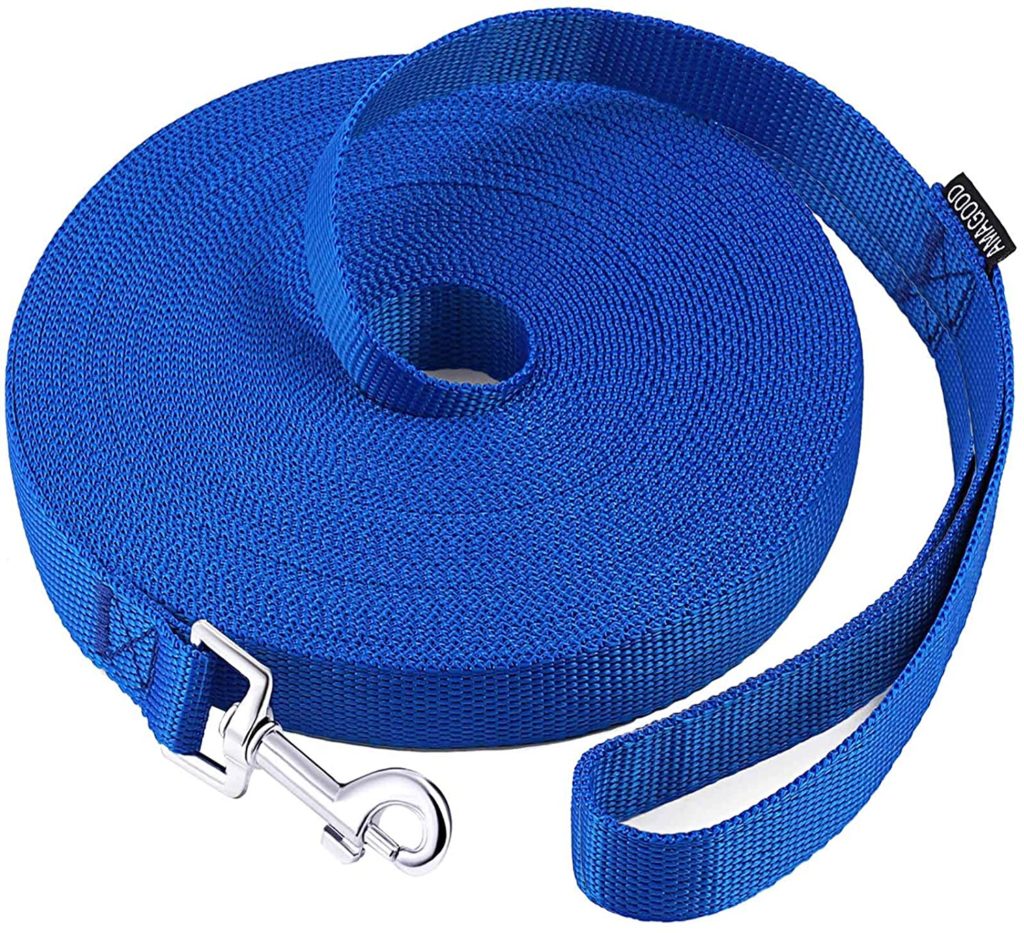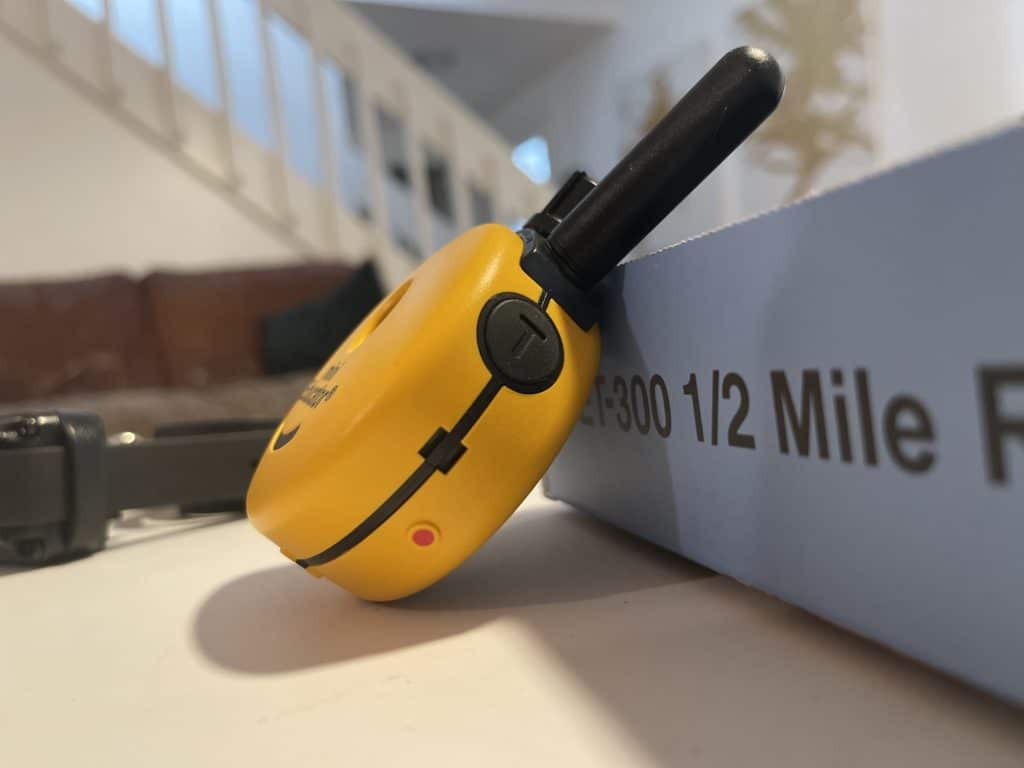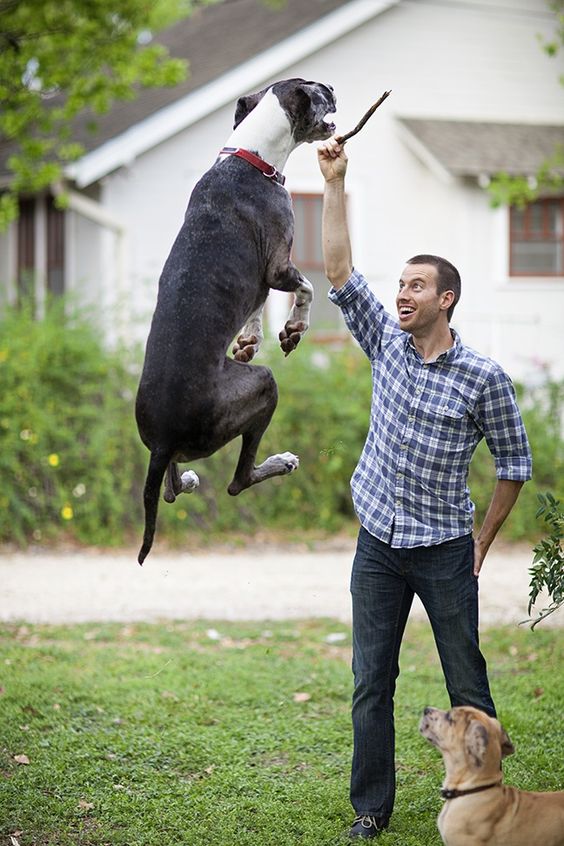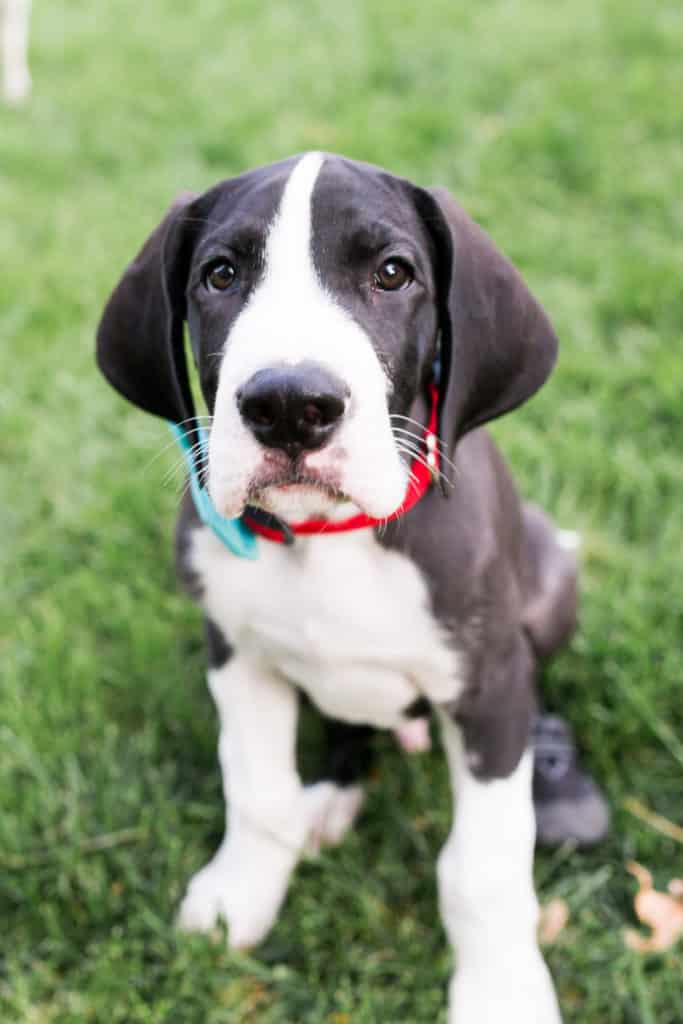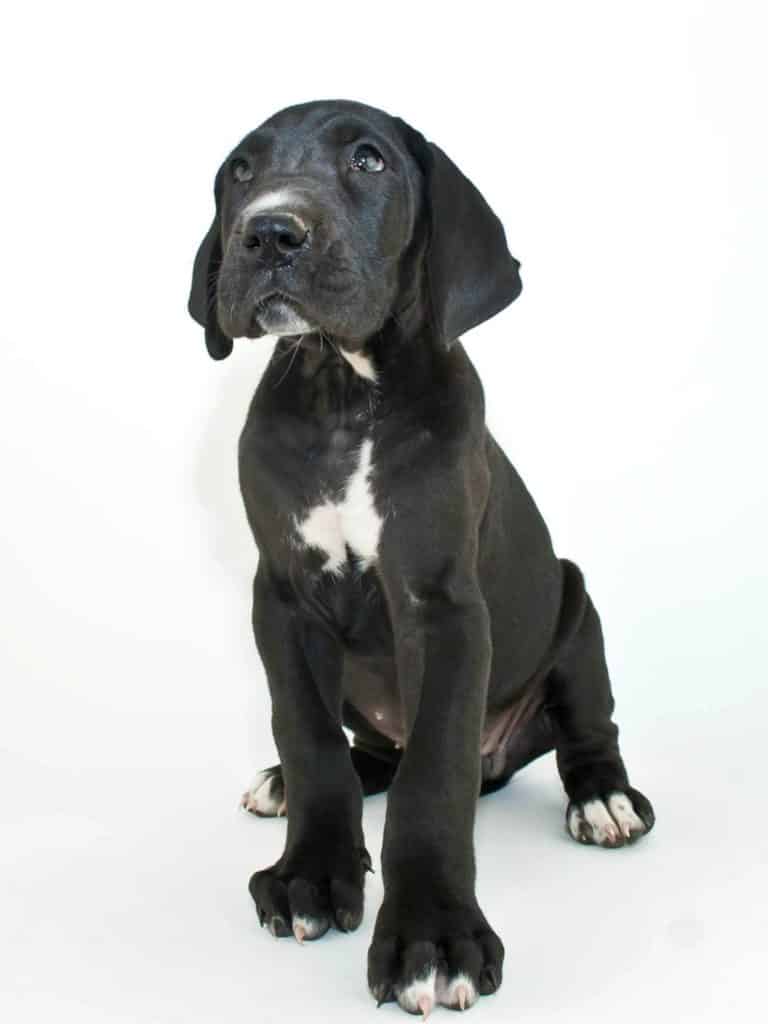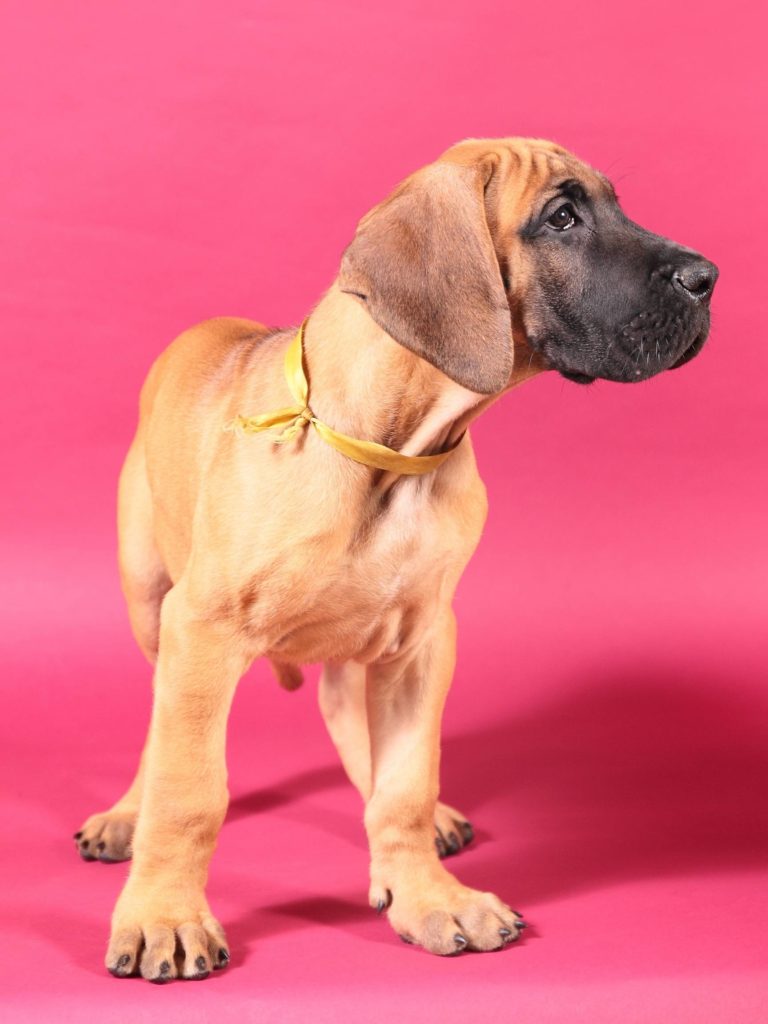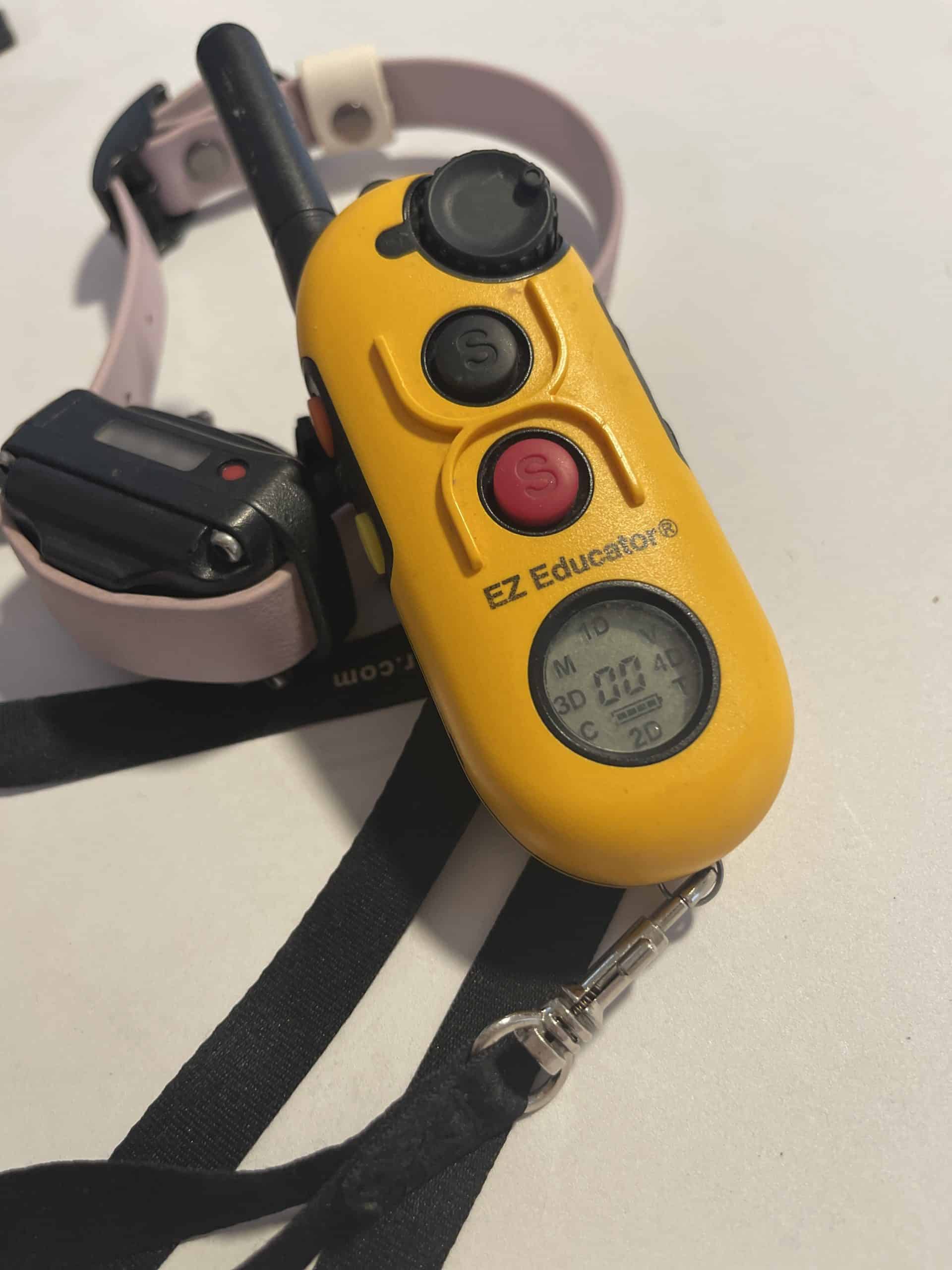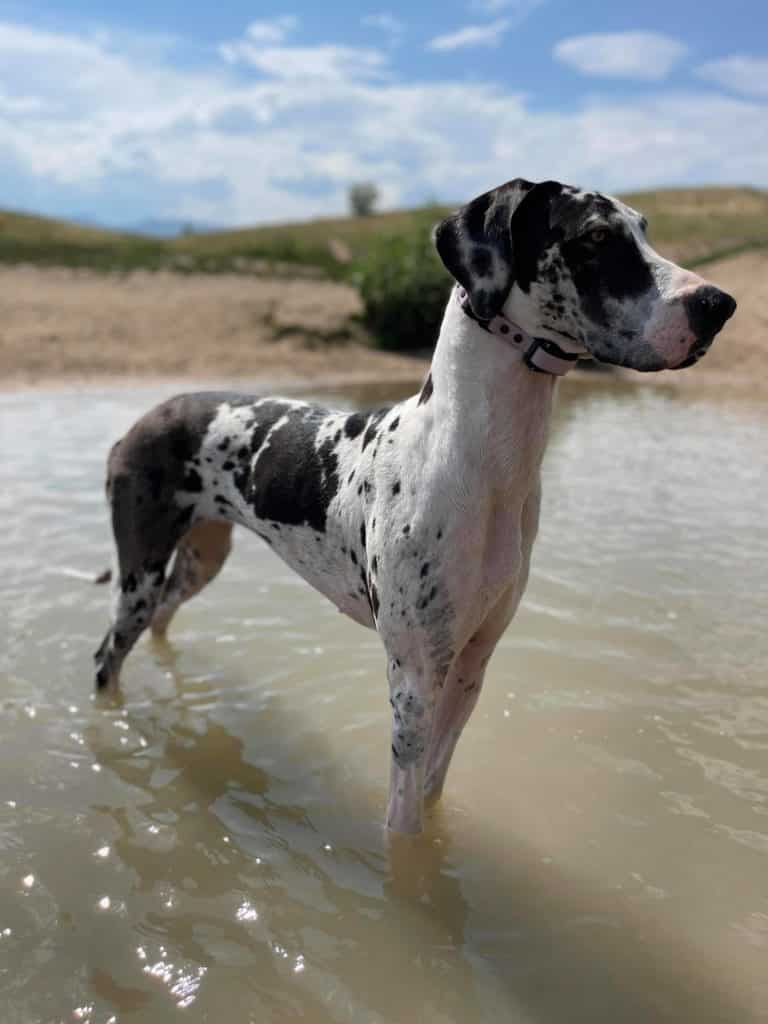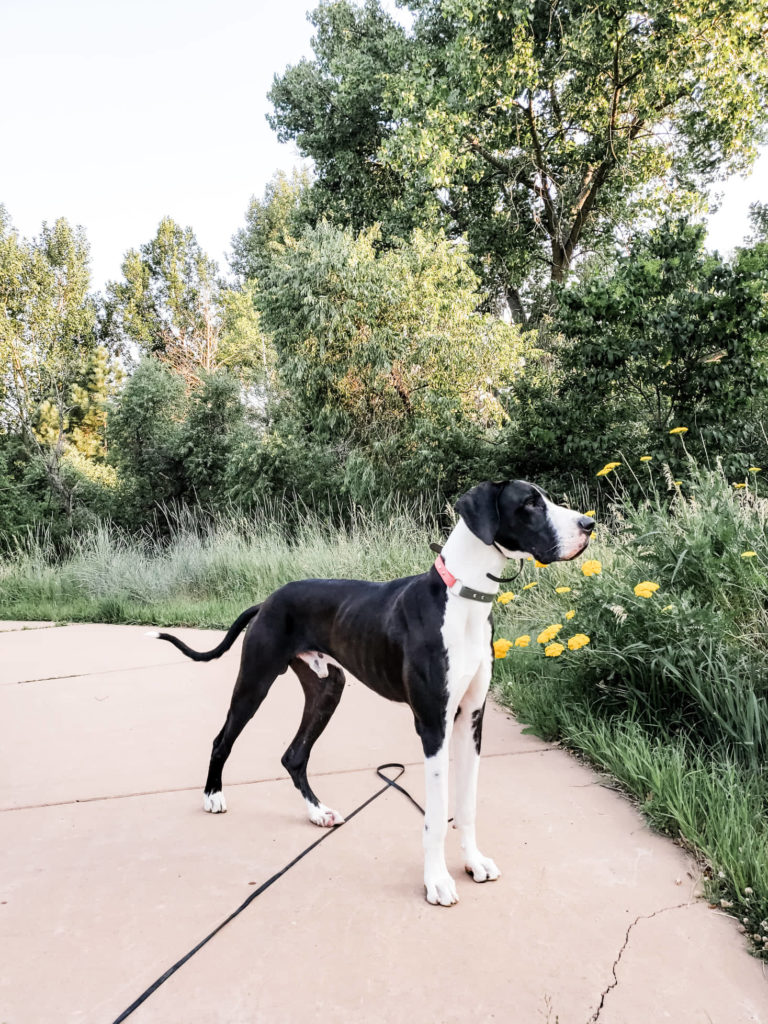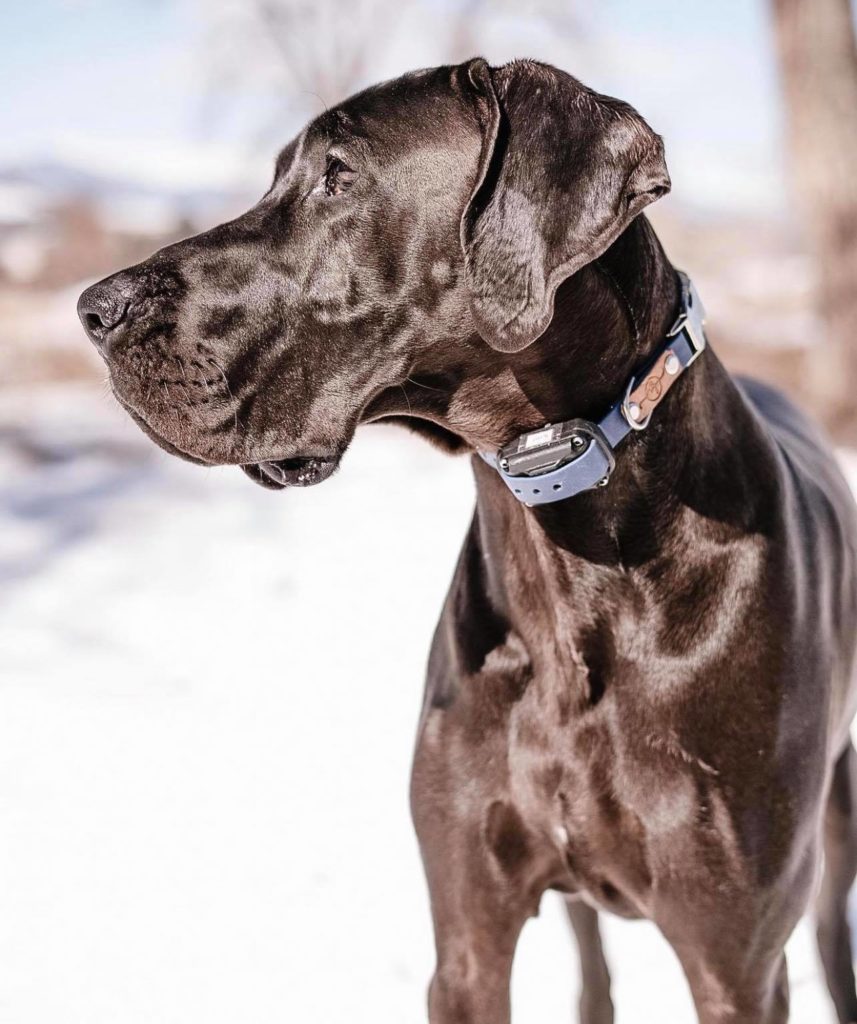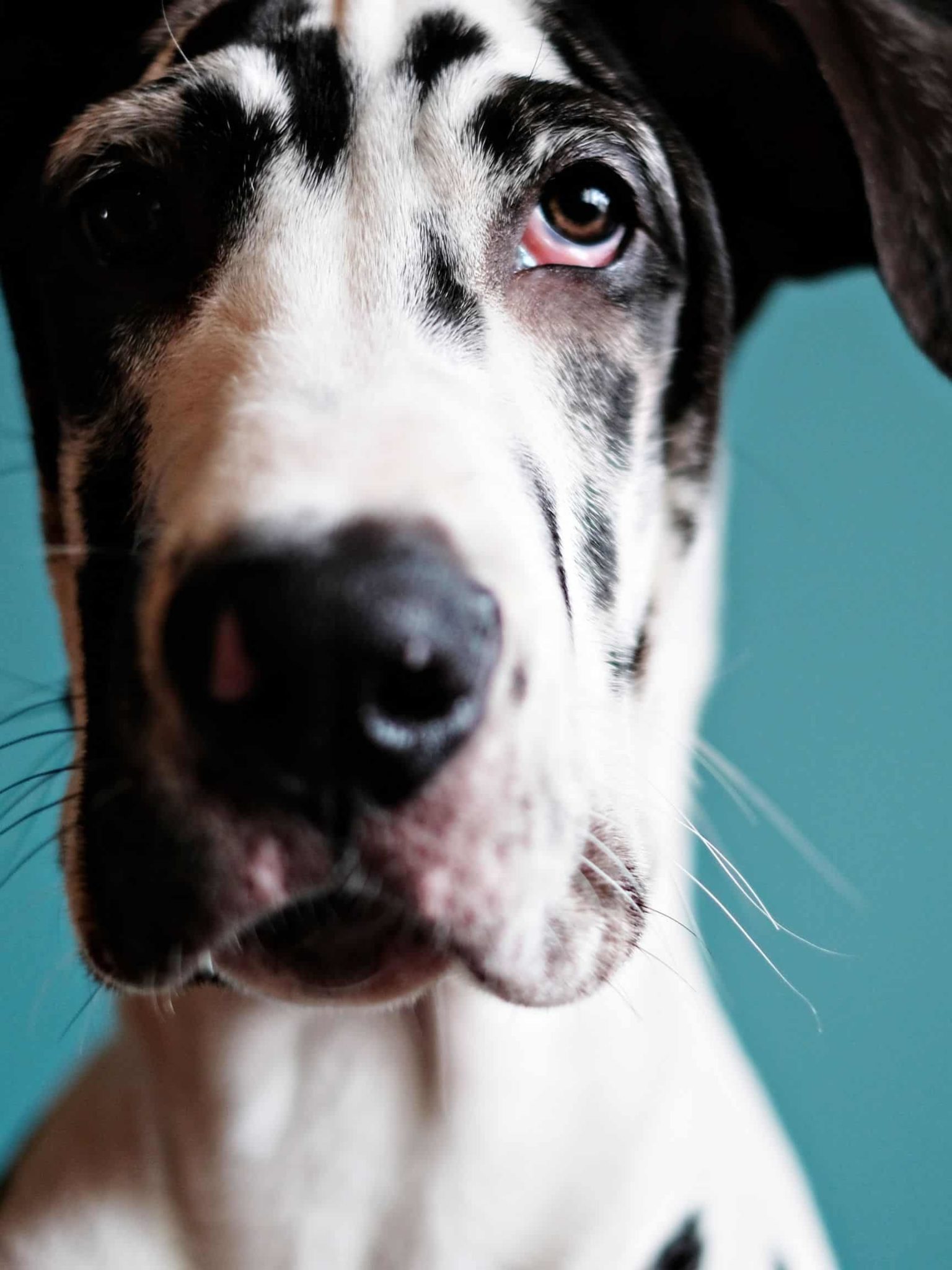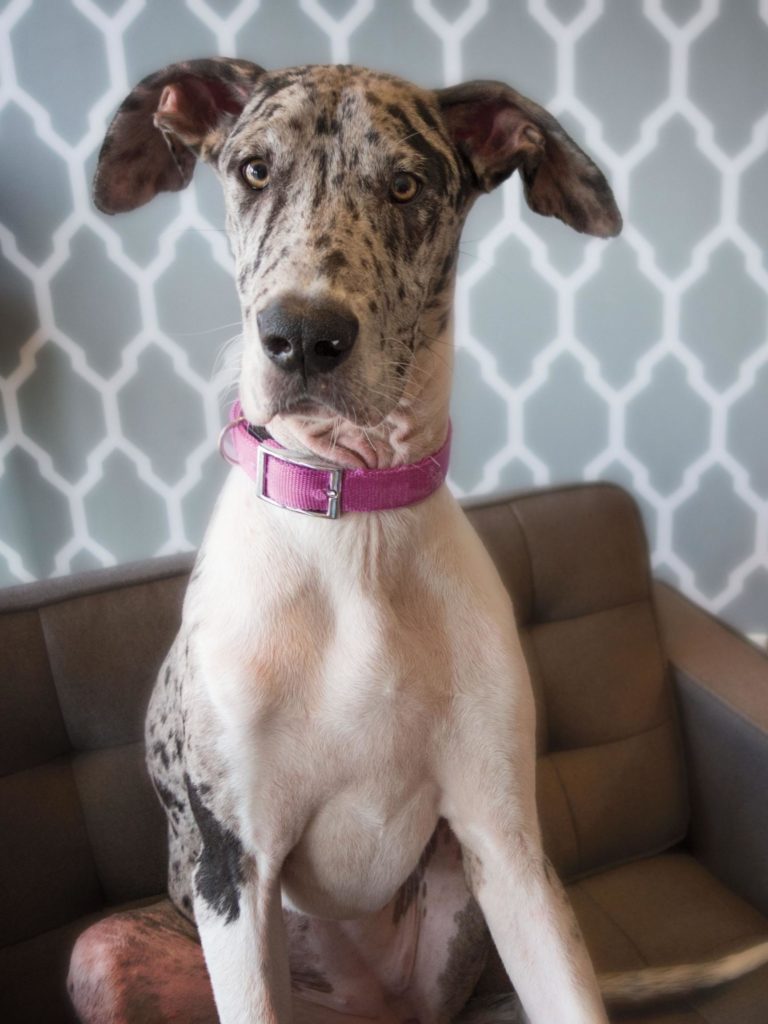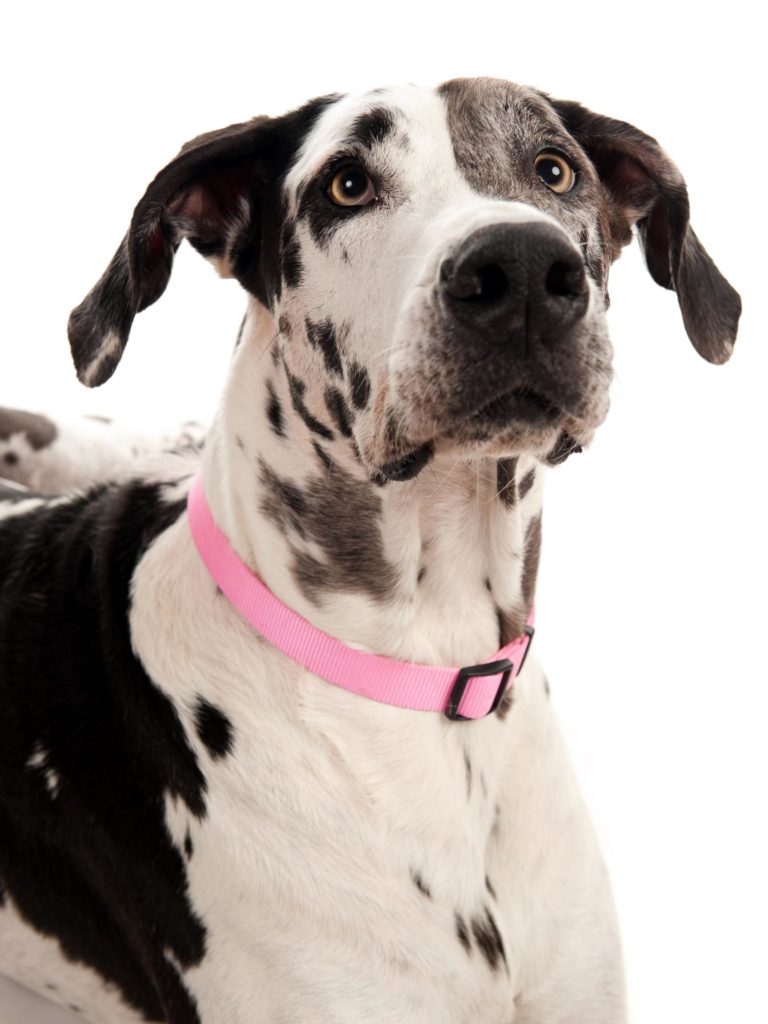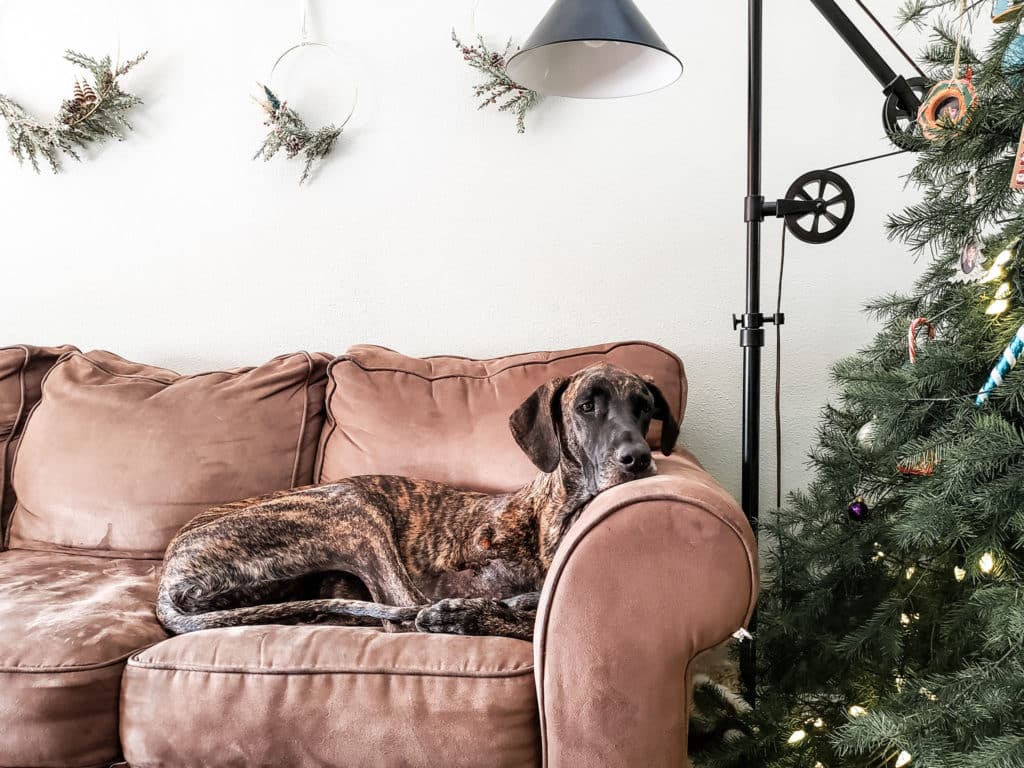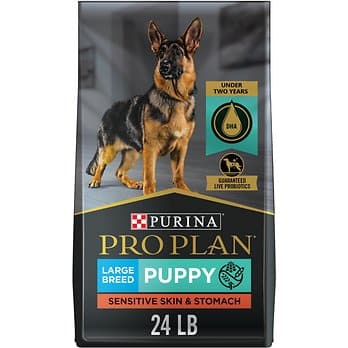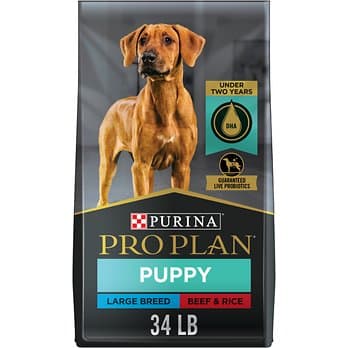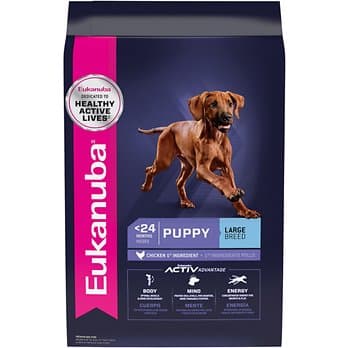If you are considering adding a Great Dane puppy to your family, there are a few things you should know. Great Danes are gentle giants and make wonderful pets, but they do require a lot of exercise and room to run.
In this blog post, we will discuss the temperament of Great Dane puppies as well as what you can expect in terms of care. We will also provide tips on how to train and socialize your Great Dane Puppies and discuss just how big your puppy might get.
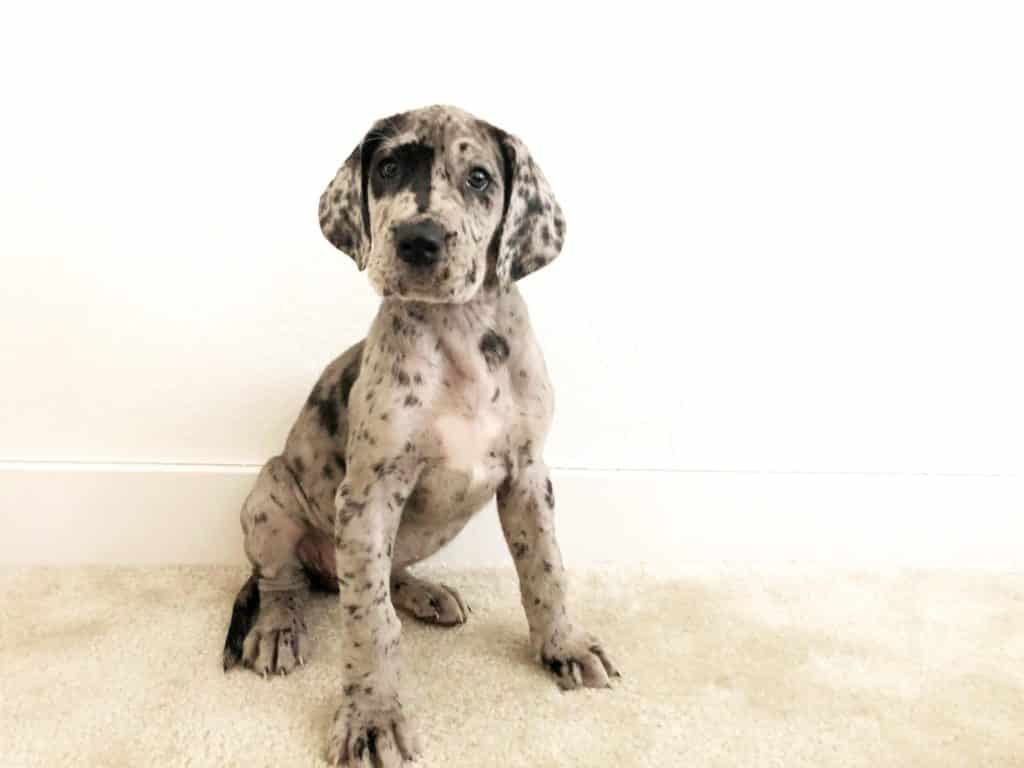
Bringing Home Great Dane Puppies
Congratulations on your new Great Dane puppy! Great Dane puppies make wonderful pets, but they also require special care and training. Here are a few things to keep in mind as you welcome your new pup into the family.
1. Great Dane Puppies Need the Right Food and Exercise
First, remember that your puppy is still growing and will need plenty of food and exercise. Great Dane puppies are notorious eaters, so be sure to provide a high-quality diet and plenty of fresh water.
Most dogs also need a lot of exercise for the first two years so prepare for daily walks or play sessions. However, it’s important not to overdo it – too much activity can damage growing joints and bones.
Great Dane puppies require special care for their joints: don’t let them jump too much off of high surfaces like the couch. Also, it’s crucial to make sure Great Dane puppies do not run or play on slippery surfaces.
2. Socialization for Great Dane Puppies
Second, socialization is key. From an early age, expose your Great Dane puppy to as many new people, animals, and experiences as possible.
Puppy Socialization
Puppy Culture: A Way to Socialize from the Start
Puppy Socialization Guide
Puppy Training: 5 Mistakes in Training
Canine Good Citizen Training for Great Danes
Your Puppy is Bored
This will help them grow into confident, well-rounded adults. Attend puppy classes, visit different public settings, and take your pup on fun outings. Taking Great Dane puppies to dog parks early on is not the only (or best) way to socialize them.
You want to teach your pup to be surrounded by chaos, but not apart of it. For this reason, we love to see pet parents taking their Great Dane puppies to places like parking lots where they can sit back and people watch.
3. How to Train Great Dane Puppies
Finally, training is essential for any dog, but especially for a large breed like the Great Dane puppy. Start with basic obedience commands such as sit, stay, come, and down. Manners are also important, so be sure to teach your puppy not to jump up on people or beg for food. With patience and consistency, you’ll have a well-behaved dog in no time.
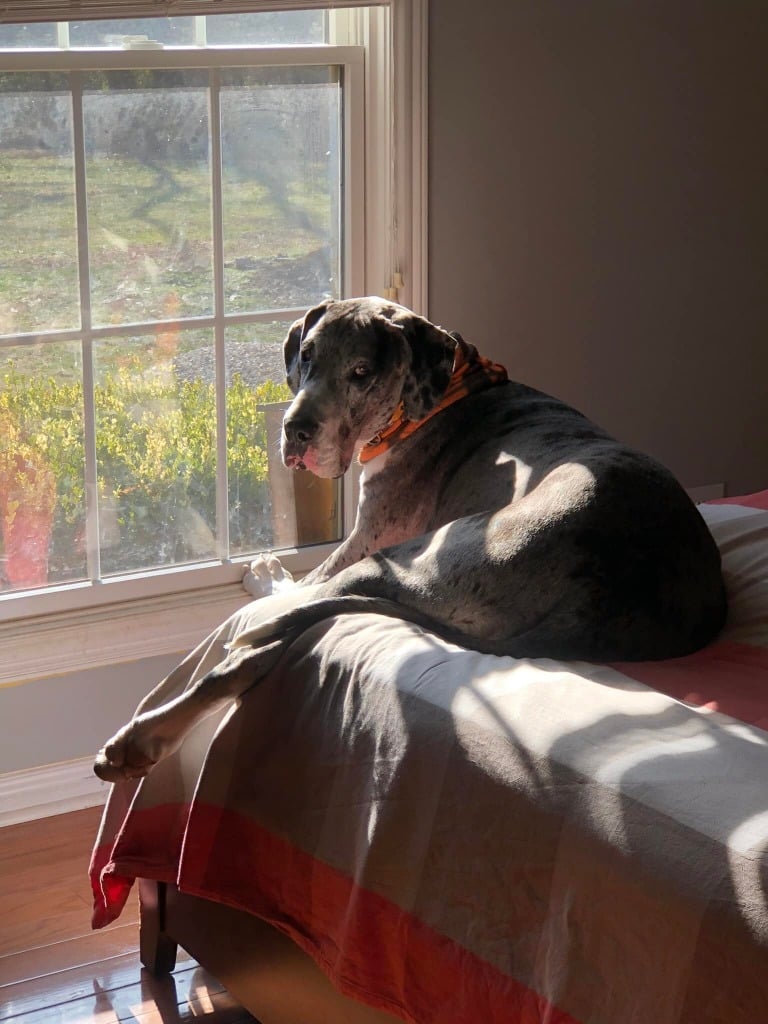
Let’s dive in to some essential topics of what to expect with a Great Dane Puppy.
4. The First Week with Great Dane Puppies: Weekly Schedule
Bringing home a new puppy is always an exciting time, but it’s important to remember that puppies require a lot of care and attention. When you first bring your Great Dane puppy home, take some time to introduce them to their new surroundings. Show them where their bed is, where they can and can’t go in the house, and start to establish some basic rules.
It’s also important to begin socializing your puppy early on. Introduce them to other family members, including any pets you might have. The more exposure they have to different people and animals, the better.
Finally, one of the most important things you can do for your puppy is to develop a routine. Set regular mealtimes, potty breaks and playtimes, and stick to them as much as possible. This will help your puppy feel comfortable and secure in their new home.
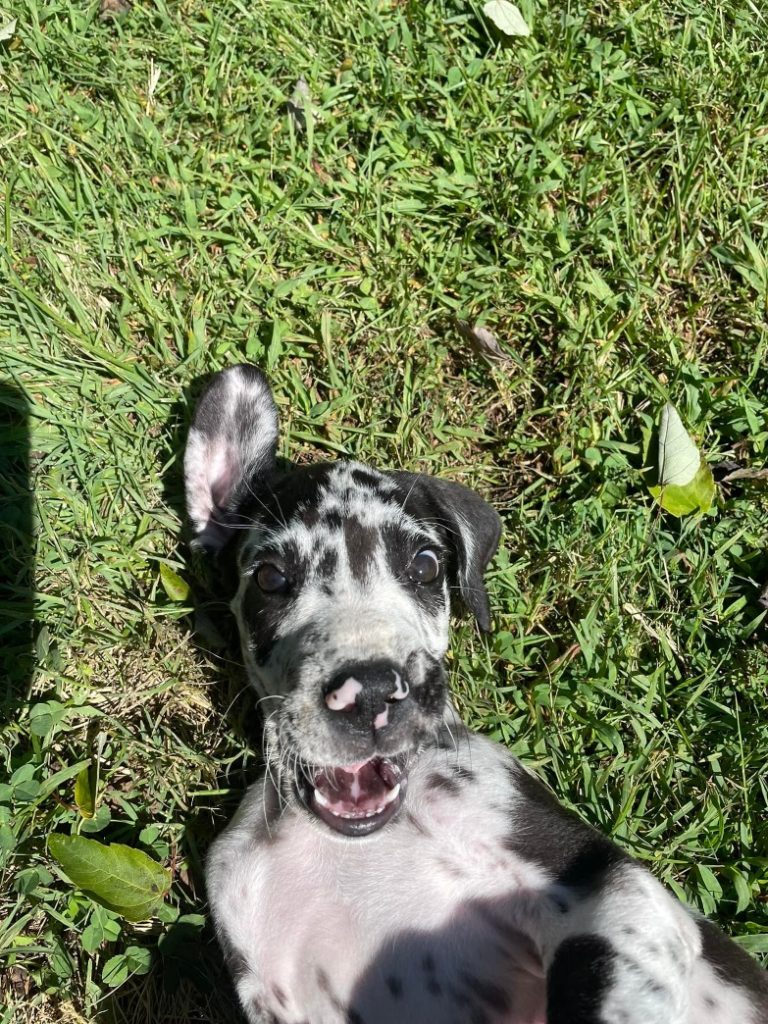
- Day 1: Day 1 with your new Great Dane puppy is sure to be full of surprises. For one thing, it is amazing how big they are! Great Danes are one of the largest breeds of dogs, and your puppy will likely weigh over 100 pounds when fully grown. He’ll also probably be very active, full of energy and ready to explore his new home. Be prepared for lots of chewing. Gentle giants love to chew on anything they can get their teeth on! – and provide plenty of chew toys to help redirect his chewing urges. You’ll also need to start socializing your puppy right away, introducing him to as many different people and animals as possible.
- Day 2-4: On days 2-4 you will want to get your Great Dane puppy in to have a general check-up with their veterinarian. In order to get an appointment for your Great Dane puppy, you need to understand the expectations and find a reputable veterinarian. A great way to start is by asking around for referrals from dog-owners who have had great experiences with their own veterinarian. Once you have a list of potential vets, take the time to read online reviews. This will give you a better idea of what other pet-owners think of the vet and their staff. Once you have narrowed down your choices, call each vet to ask about their experience with Great Danes, but Great Dane puppies specifically. Find out what vaccination schedule they recommend and if they offer any discounts for new clients. Once you have found a vet that you are comfortable with, go ahead and schedule your puppy’s first appointment within the first 2-4 days of coming home.
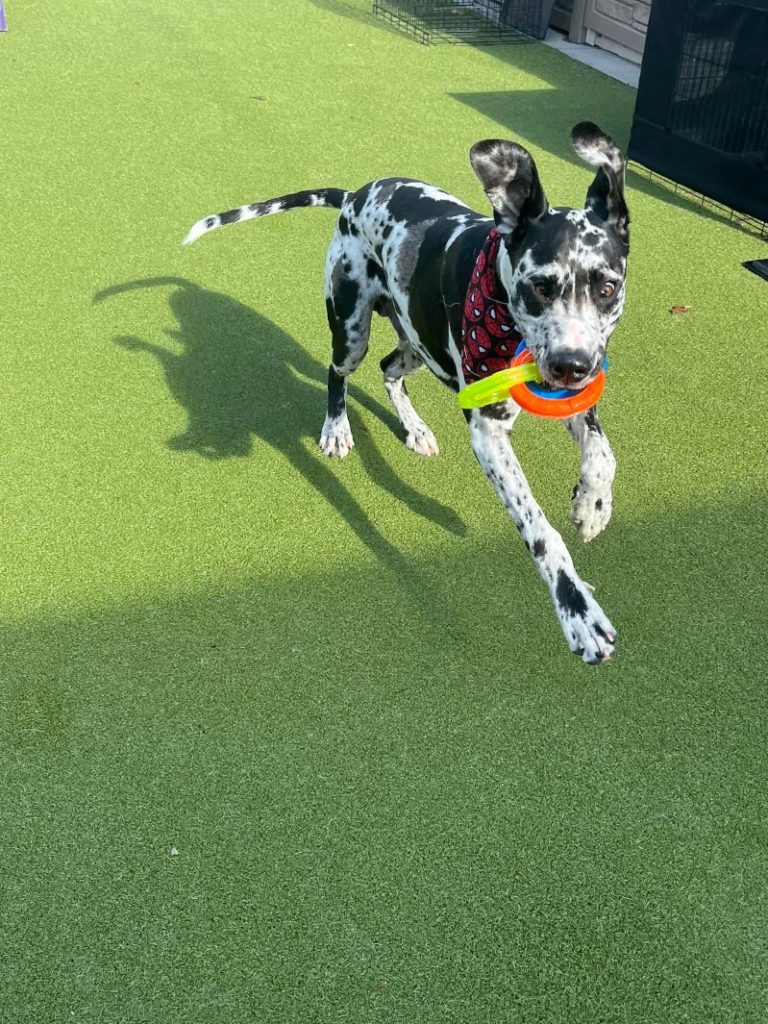
- Day 5-6: Pet Insurance is an absolute must for Great Dane puppies. As any dog owner knows, our furry friends come with a lot of responsibility- and a fair amount of expense. From food and toys to vaccinations and routine check-ups, there’s no shortage of ways to spend money on your pet. And for those who have chosen a Great Dane puppy, the costs can be even higher.
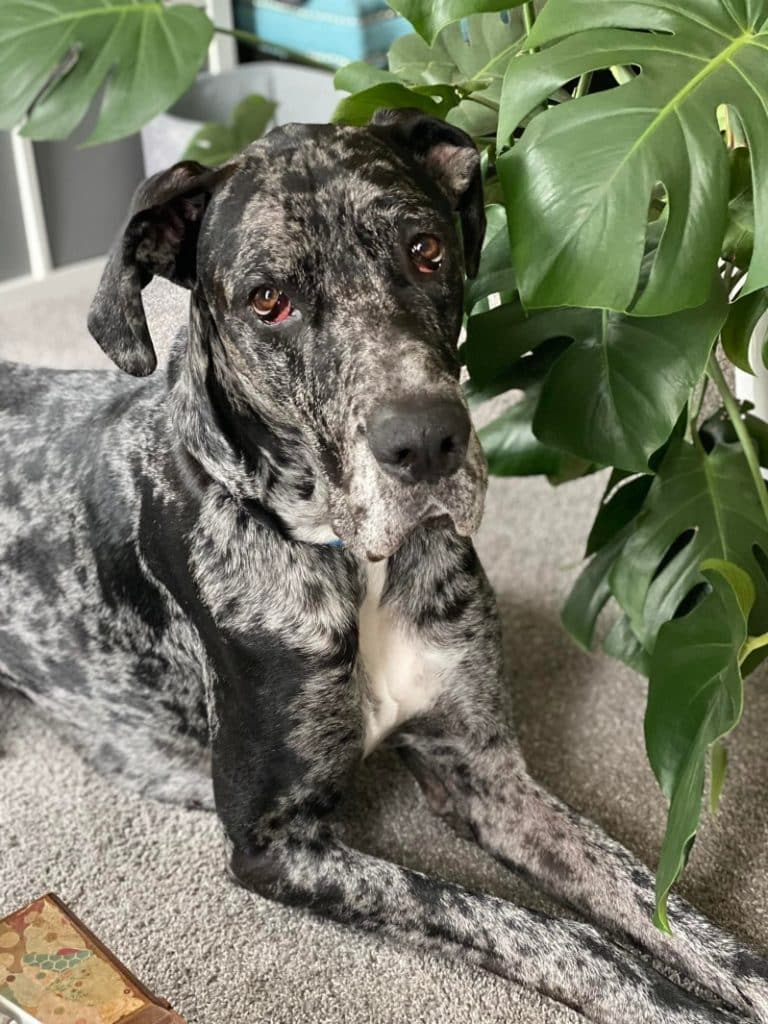
Great Danes Puppies are a popular breed, known for their large size and gentle nature. However, they are also prone to certain health problems, which can be expensive to treat. That’s why pet insurance is such an important consideration for anyone who is thinking of adding a Great Dane puppy to their family. By investing in a good policy, you can ensure that your dog will always have the care they need, no matter what.


- Day 7: Congratulate yourself and your puppy on finishing your first 7 days home together. Getting a new puppy is often a lot of work. Your puppy is in a new environment, you have overcome the big day of bringing them to into your house, and you are on your way to providing them with a safe place to feel loved and welcomed. Have you fell in love with Great Dane puppies yet?
5. Training and Socialization: Basic Information for Great Dane Puppies


Even the most docile dog can benefit from training and socialization. The earlier these things are started, the better, as it will help your Great Dane puppy to grow into a well-adjusted adult.
Training helps your pup understand what the expectation is. It also provides them with essential obedience skills. Socialization, on the other hand, helps your Great Dane puppy to interact positively with other dogs and people. Be patient- Great Dane puppies take time to learn!
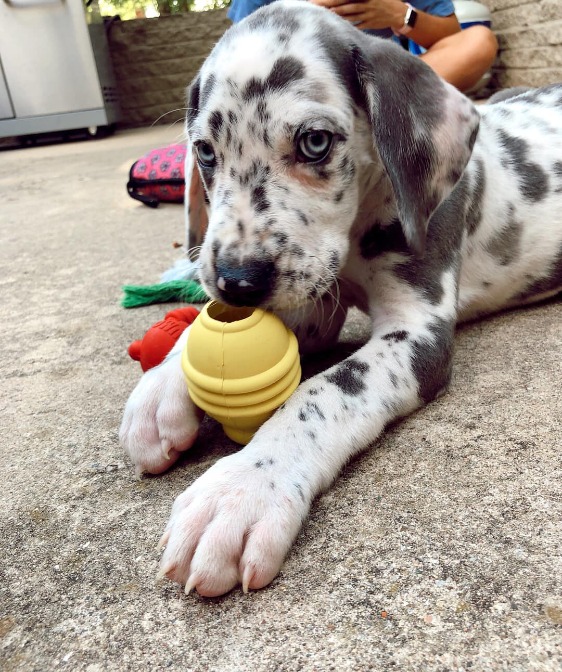
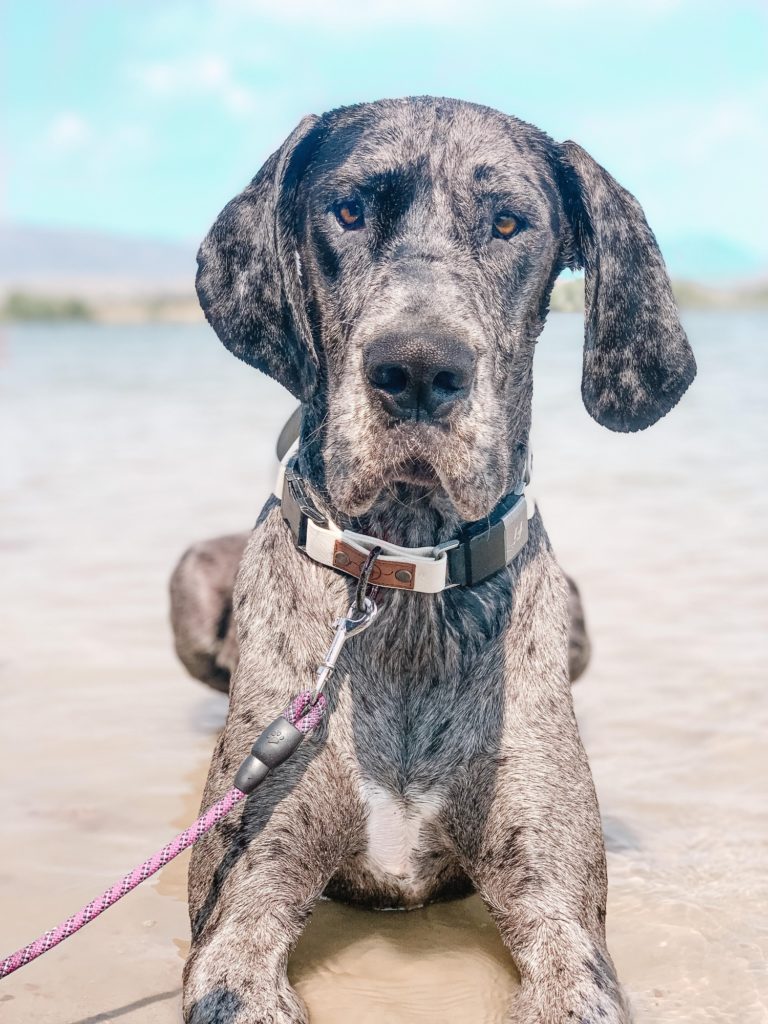
This is especially important for Great Dane puppies, as their size can sometimes be intimidating. By providing your pup with plenty of opportunities for positive experiences with other dogs and people, you can help them to develop into a confident and social adult.
Is My Great Dane Too Small?
Great Dane Puppy Growth Chart
Puppy Socialization Guide
Is My Great Dane Puppy Knuckling?
How to Prevent Knuckling in Great Dane Puppies
While entering a new world, Great Danes need positive reinforcement in order to learn obedience commands and good behavior. With proper training, they are well-behaved dogs that are a joy to have around. Praise and treats are great ways to reward a Dane for good behavior, and will help them to understand what you expect from them. Be consistent with your commands, and remain patient while training your puppy.
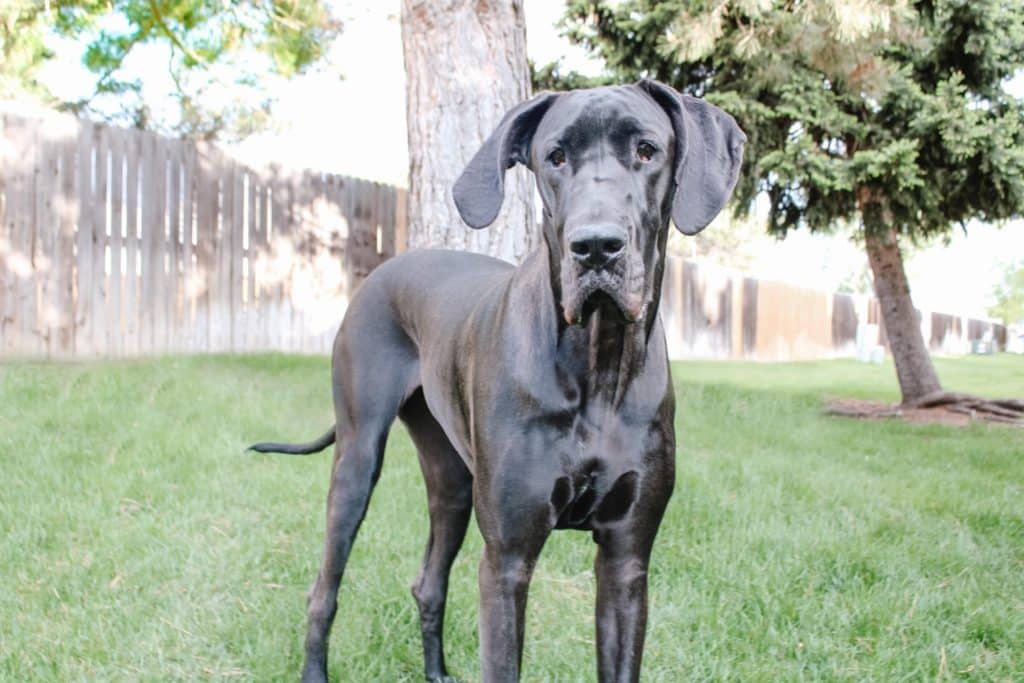
6. Items to Buy for Great Dane Puppies
Plan ahead with your puppy to spend time on the leash, allow them time to play, and provide them with general obedience training. Prepare to invest in a dog trainer if this is your first Dane, as at times Great Danes do require much training.
Your pup will likely need a large crate to sleep in, and you will need to puppy proof your living area. It is also a good idea to create a routine that involves feeding time. You can utilize baby gates for eating time, or have them eat in their crate. Use lots of treats for them when they go potty and walk well on their leash! As you know, a Great Dane typically loves eating.
With time and patience, you will have a well-behaved pet that is a loyal companion.
7. The Best Dog Toys for Your Giant Breed Pup
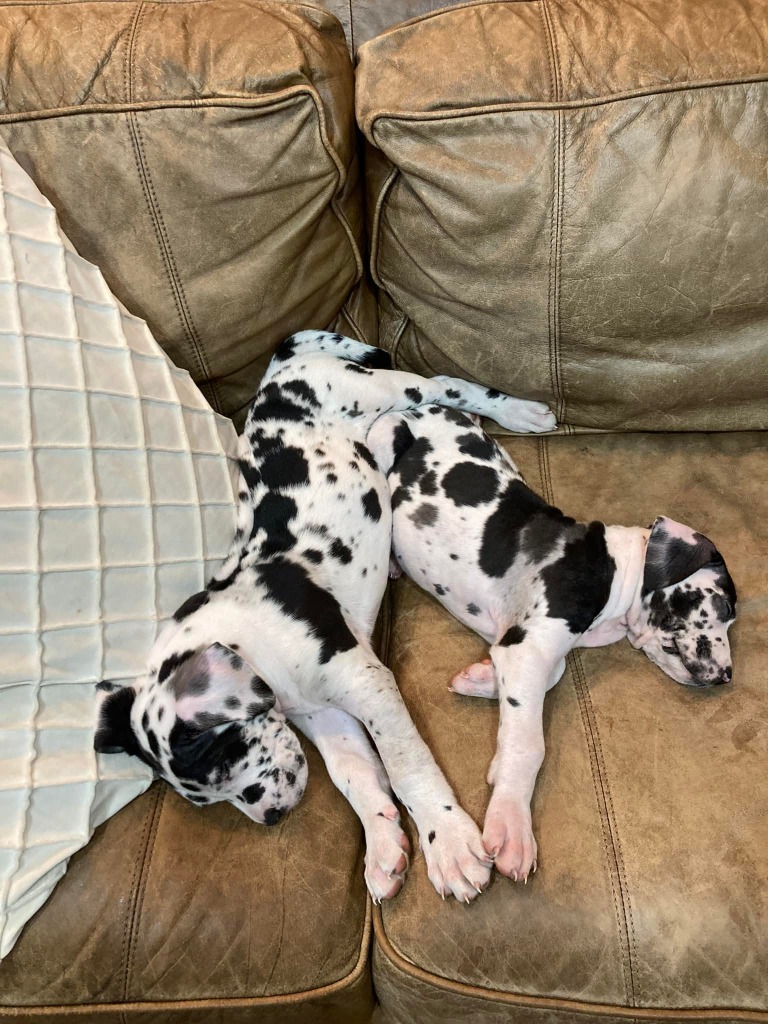
As any Dane puppy owner’s knows, finding the right toy for your Great Dane can be a challenge. Not only do you want a toy that will keep your dog entertained, but you also want one that is safe and durable. If you’re in the market for a new toy for your Great Dane puppy, there are a few things to keep in mind.
First, choose a toy that is the appropriate size for your Great Dane puppy. A toy that is too small can pose a choking hazard, while a toy that is too large can be difficult for your puppy to manipulate.
Second, consider the material of the toy. Some materials, such as latex, may not be safe for puppies to chew on. Finally, use a toy designed specifically for Great Dane puppies.
Here are some of our favorites for your Great Dane:
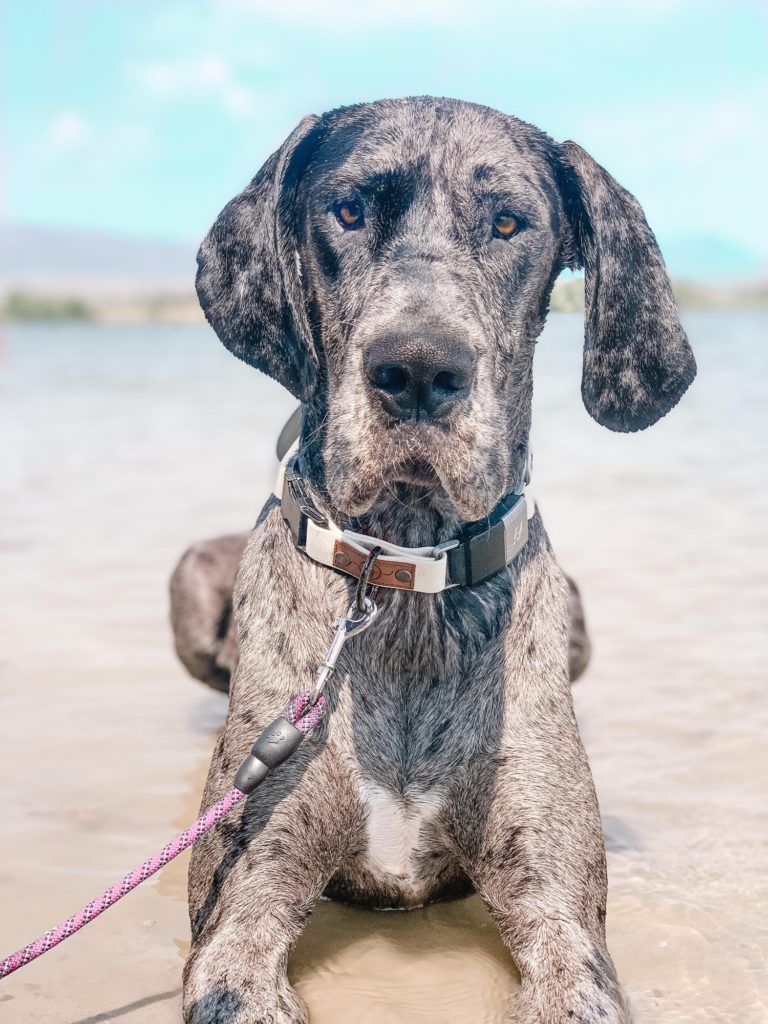
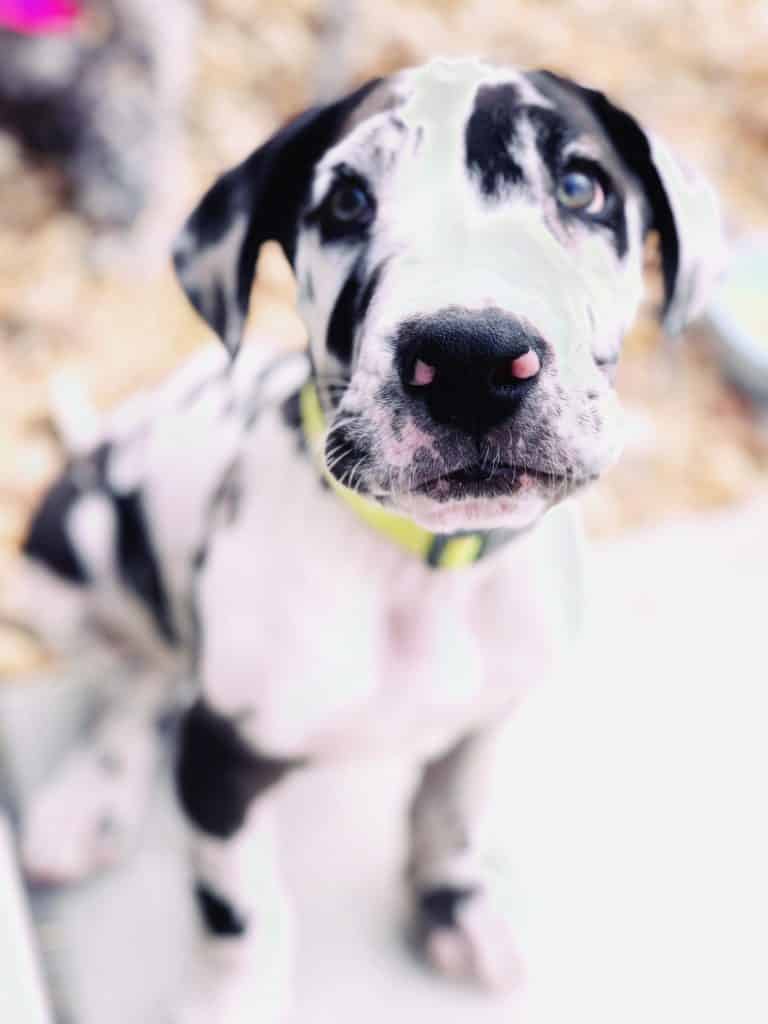
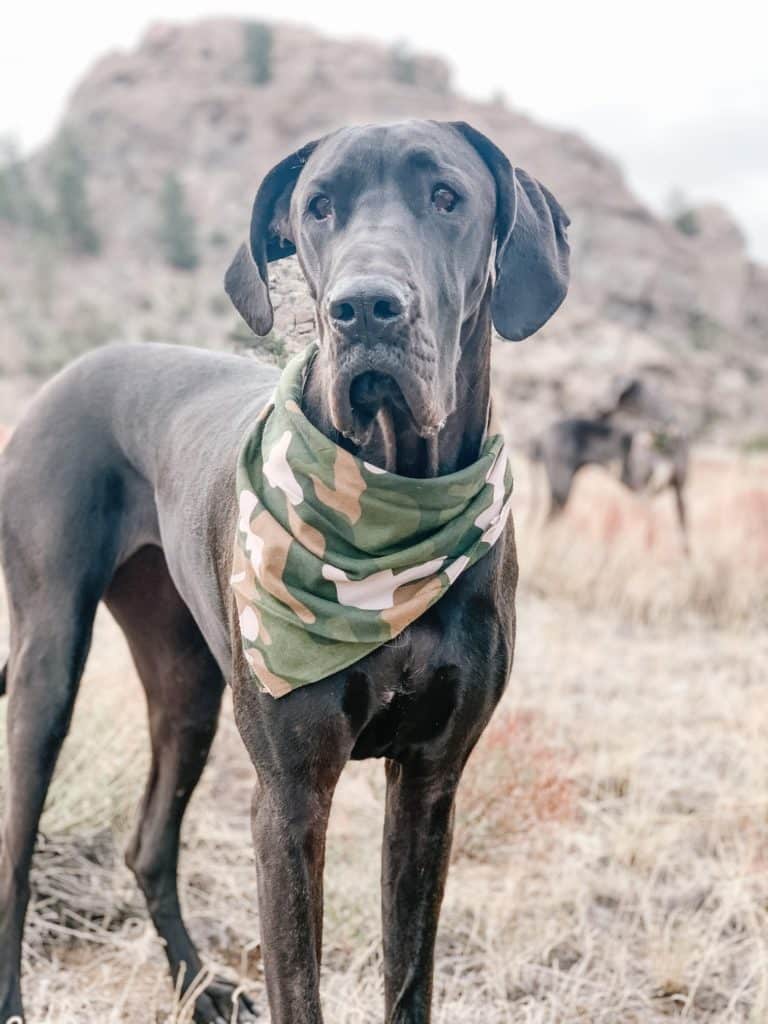
Kongs:
If you’re looking for a durable, tough, and long-lasting dog toy, Kong is a great option. Kongs are made of durable rubber that stand up to even the most powerful chewers. They’re also bouncy and fun for dogs to play with, making them a great option for interactive playtime. In addition, Kong dog toys are used as training tools because they are able to be filled with treats. This encourages Great Danes to keep playing with the toy even when there’s no one around to play with them. As a result, Kong toys can provide both mental and physical stimulation for your Great Dane Puppy.
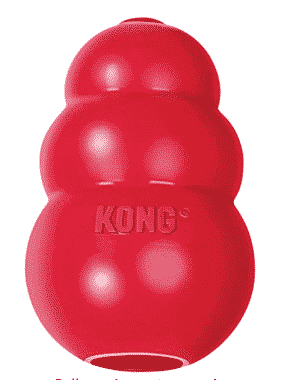
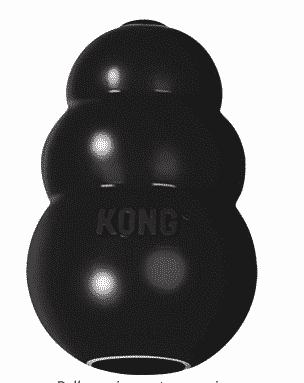
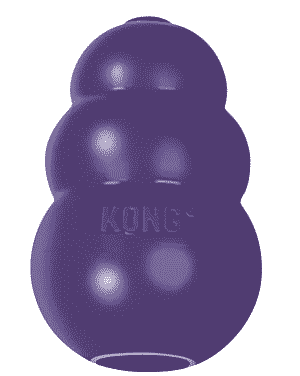
Chew Proof:
For many dog owners, finding the right chew toy can be a real challenge – especially if you have a big dog with a hearty appetite. Great Danes are enthusiastic about chewing, and their powerful jaws can easily destroy most standard toys. Find a toy that is great for heavy chewers. There are a few things to look for in a good chew toy for Great Dane puppies. First, the toy should be made of durable materials that can withstand some serious chewing. Second, it should be large enough to keep your puppy occupied, but not so large that it becomes a choking hazard.
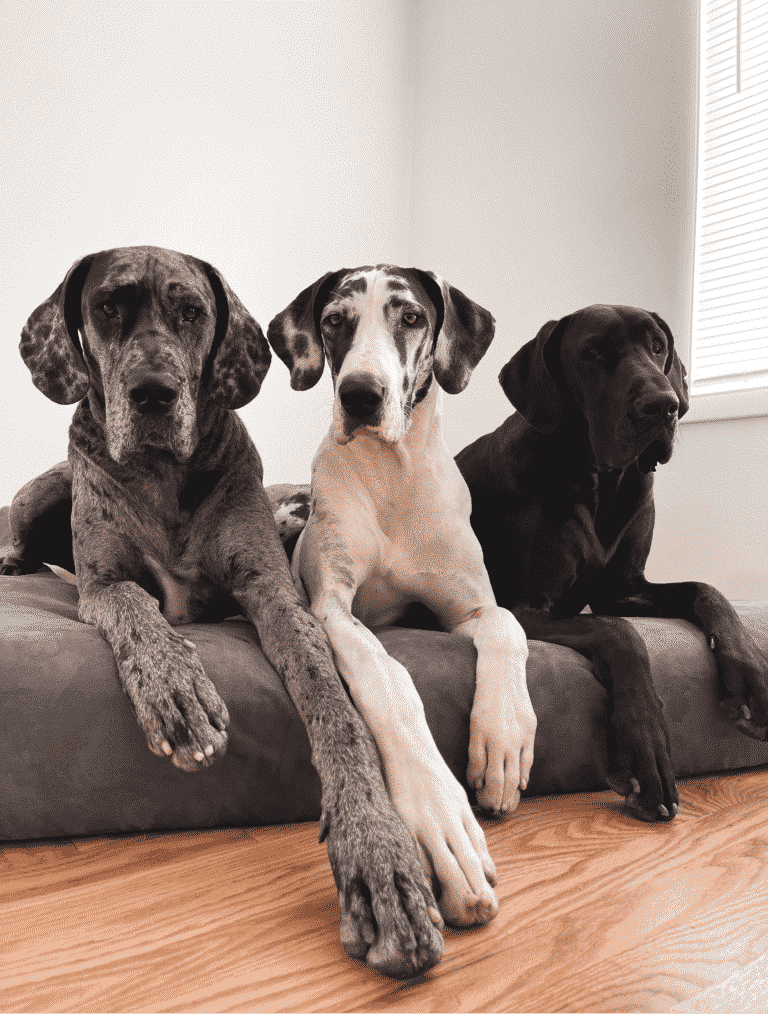
Snuggle Puppy:
If you’re looking for a toy that will make your Great Dane feel loved, a Snuggle Puppy might be just the thing. They are soft, cuddly toys that come with a “heartbeat” module that simulates the warmth and rhythmic breathing of a real dog. Great Danes are social creatures, and many owners find that their dog forms a strong bond with their Snuggle Puppy. The toy provides comfort and security, especially when your dog is left alone or in a new environment. Because they’re made from high-quality materials. These stuffed animals are built to last – which means you’ll get to enjoy watching your dog snuggle up to his new best friend for years to come.
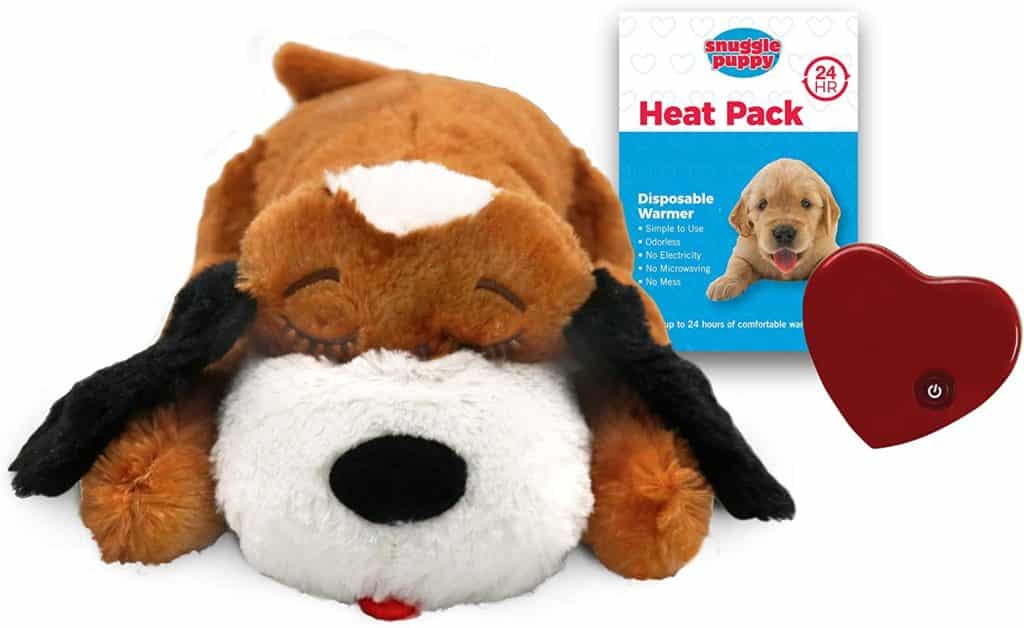
Outward Hound Engagement Puzzles:
If you have a Great Dane puppy, you know that they are one of the most gentle giants around. However, despite their large size, they are often very loving and loyal companions. But because of their size, they can also be quite destructive if left unattended. That’s where Outward Hound engagement puzzles come in handy. These puzzles will keep your dog occupied and engaged. They help to prevent boredom and destructive behaviors. One of the most popular options is the Outward Hound Fire Biterz squeaker toy, which is made from durable fire hose material and has a built-in squeaker to keep your dog entertained. Other great options include the Outward Hound Nina Ottosson Puzzle Plush Dog Toy.
8. Collars for Great Dane Puppies
Great Danes also require some special care, particularly when it comes to choosing a collar. Because of their large size, Great Danes can easily pull a standard-sized collar off, so it’s important to choose one that is properly sized and securely fastened. Additionally, because Great Danes have such long necks, a traditional one can often cut into their skin, causing irritation.
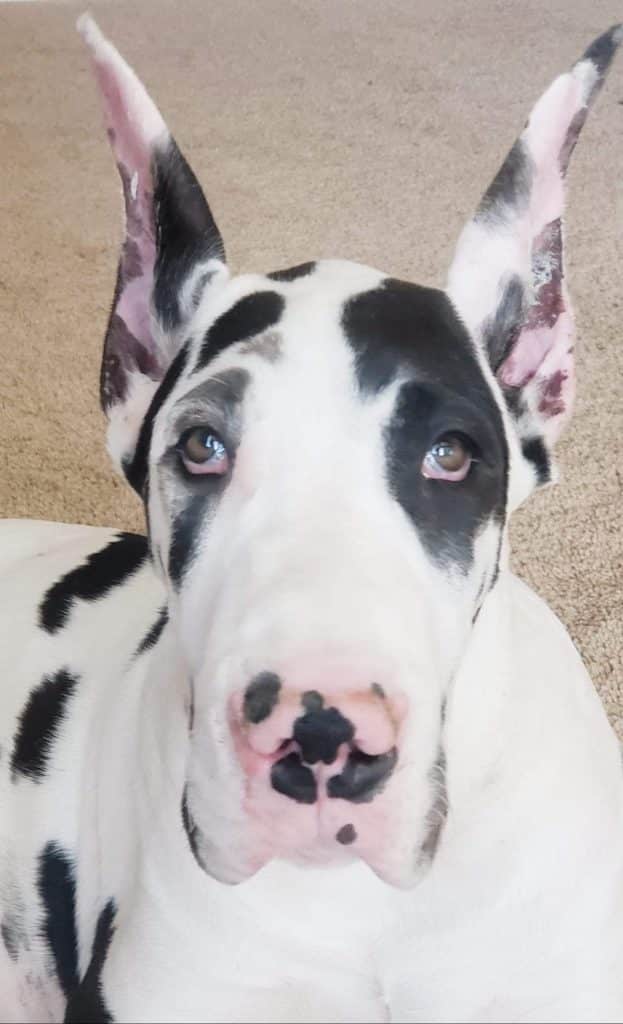
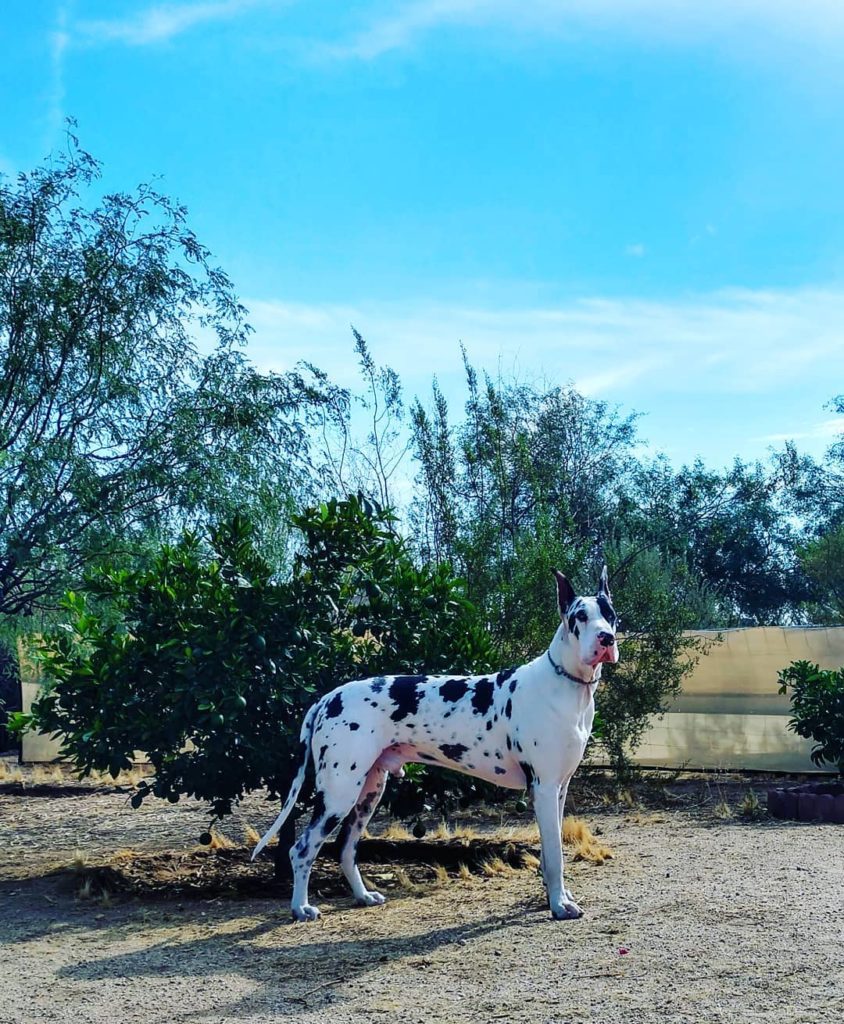
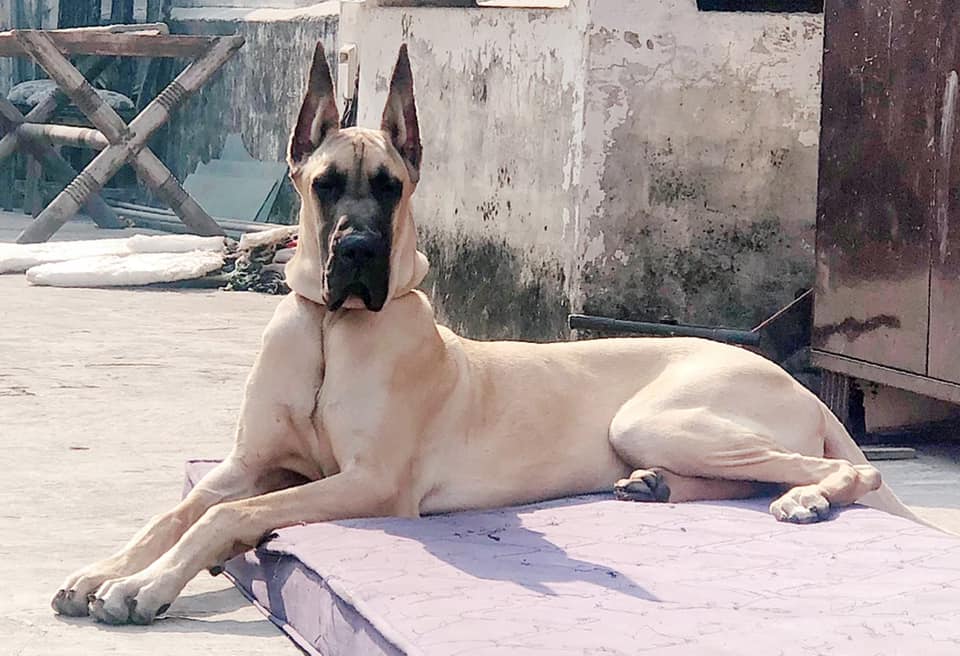
Some of our favorites for Great Danes and other Giant Breed Dogs are:
- Country Brook Design – Vibrant 26 Color Selection – Premium Nylo with Metal Buckle: At just $13 you can’t go wrong since your Great Dane puppy is quickly going to grow into an adult great dane.
- E-collars: E-collars are a great way to combat behavioral problems with your Great Dane in the long run. Be prepared to spend a lot of time training your Great Dane on basic skills prior to introducing them to their e-collar. We have an abundance of information on this training mechanism on our site for your Great Dane, when you are ready.
- A martingale is one great option for Great Danes as it is adjustable and designed to prevent slipping.
- Quick Release: Using a quick release like this one is essential. Your Great Dane can get caught up in another pet’s neck if you choose the wrong style, and a quick release helps by creating safety.
Note: never leave your dog’s collar on them when they are unattended or in the house or crate by themselves. When training or with an accompanied adult, they can be worn safely.
9. Water Bowls that you Need for Great Dane Puppies
Any dog owner knows that providing their pet with fresh water is essential to their health.
But for large breeds like Great Danes, there are a few things to keep in mind when choosing a water bowl.
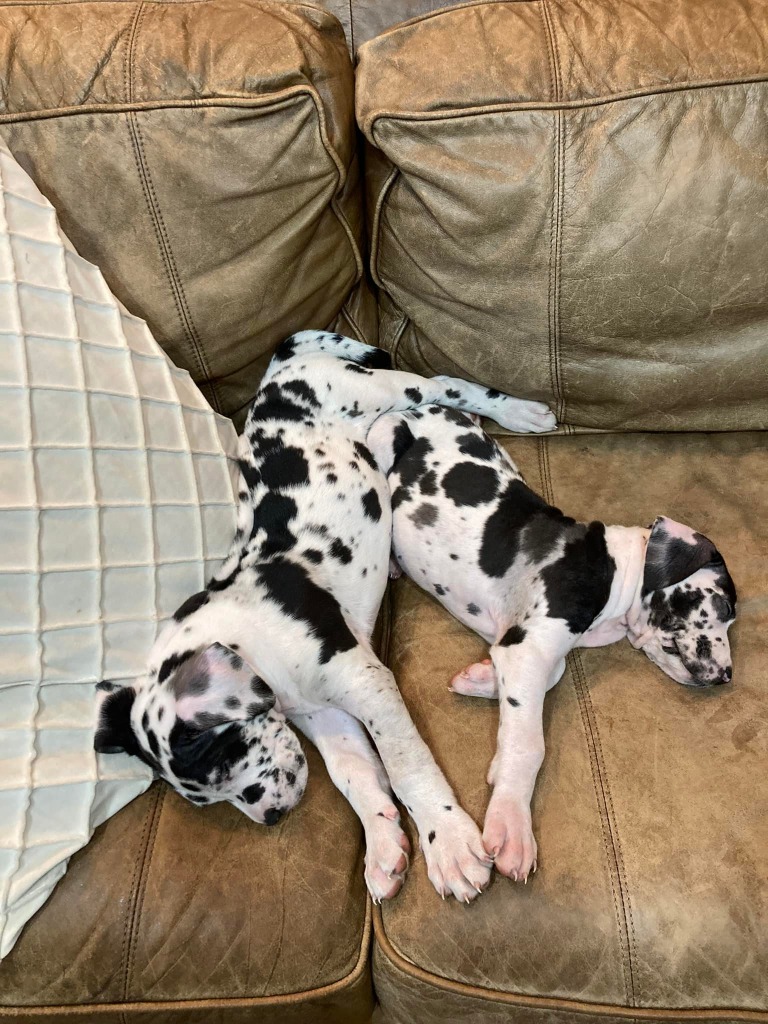
RAISED BOWLS ARE A RISK
Firstly, raised dog bowls can cause bloat, a serious condition in which the stomach fills with gas and twists. This can be deadly, so it’s best to choose a bowl that is at ground level. Please speak with your veterinarian and do your research before making any decisions for your Great Dane puppy. Read more here:
What is Bloat?
Can You Prevent Bloat?
Stomach Tacking: Pros and Cons
Bloat and Gut Health
The Scary Bloat Timeline
Secondly, Great Danes need a lot of water, so choose a bowl that is large enough to accommodate their needs. And finally, remember to clean the bowl regularly to prevent the build-up of bacteria.
WATER BOWLS CAN CONTAIN BACTERIA
Here are a few ideas of the type of bowl you should use to feed and water your new pet. Remember: you chose the giant breed life!!
- Stainless Steel Large Dog Bowl, 176oz High Capacity Dog Food Bowls for Large Dogs (2 Pack)
- Prepare for a mess in your house! These spill proof mats are essential for collecting water, food and drool from your dane, especially if they are not eating and drinking in their crate.
- Outward Hound Fun Feeder Slo Bowl – Slow Feeder Dog Bowl: Slow feeders can help your Great Dane puppy eat it’s dog food nice and slow. Food should be eaten slowly. Incorporate training to feed them at a slow pace so that you can best prevent bloat.
By following these simple tips, you can help ensure that your Great Dane stays healthy and hydrated.
9. Useful Items for Cleaning up after Great Dane Puppies
- Our favorite cleaning supply for dogs is the Rocco & Roxie Stain & Odor Eliminator for Strong Odor. This company provides an abundance of useful information about how to keep your home and life clean without introducing toxins and poisonous ingredients to your dog’s life. They even have a really nice shampoo that smells great, as well as a large bottle of stain and odor eliminator to keep your dog’s bed, crate and life clean.
- Hard Wood Floors require different cleaning supplies. Be sure to keep all food and urine off of your wood floors. Here is a great item to help.
- Crates can get nasty fast. With a large breed puppy comes a lot of pee, poop and other messes. Training your puppy to potty outside will help. However, you are going to need to prepare some cleaning supplies to help keep the crate clean in the meantime. Here is a great one.
- Waste bags: You chose a breed that eats a lot of dog food and produces a lot of pee and poop. Get the waste bags that are bulk produced– you will need them!
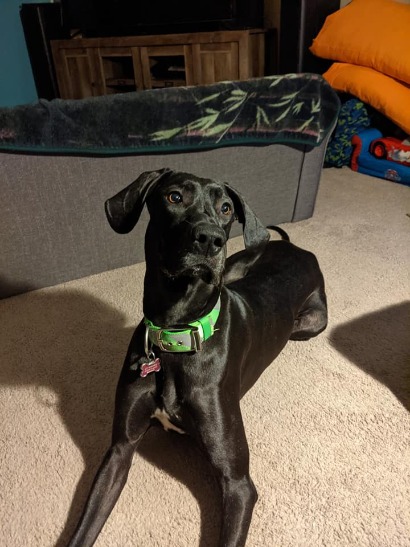
10. Genetic Predispositions to Prepare for with Great Danes:
Before you bring a Great Dane home, it’s important to be aware of the potential health problems that can afflict them.
BLOAT
One of the most common is gastric dilatation-volvulus (GDV), also known as bloat. This condition occurs when the stomach twists on itself, preventing food and gas from escaping. GDV can be fatal if not treated immediately, so it’s important to be aware of the signs, which include restlessness, drooling, and pacing.
LEARN ABOUT BLOAT HERE
IS BLOAT PREVENTABLE?
GASTROPEXY SURGERY- STOMACH TACKING
DOES GUT HEALTH RELATE TO BLOAT?
HOW FAST DOES BLOAT HAPPEN?
JOINT DISEASE
Great Dane’s are prone to hip dysplasia and other joint diseases. It is crucial to protect their joints from an early age. Make sure their current food supports their growth and keep them off of hard surfaces in order to avoid joint diseases.
Arthritis in Great Danes
Laser Therapy for Joint Pain
How to Help a Dog with a Broken Leg
Using CBD for My Dog’s Pain
Canine Hip Dysplasia
CARDIOVASCULAR ISSUES
Some Great Dane puppies and adults are prone to cardiomyopathy, a type of heart disease.
WOBBLERS
Great Danes can be prone to Wobblers disease, which is a genetic and inherited disease that causes lameness and inability to walk. Speak with your breeder and discuss whether there are genes in the Great Dane’s lineage that may make you need to prepare for Wobblers.
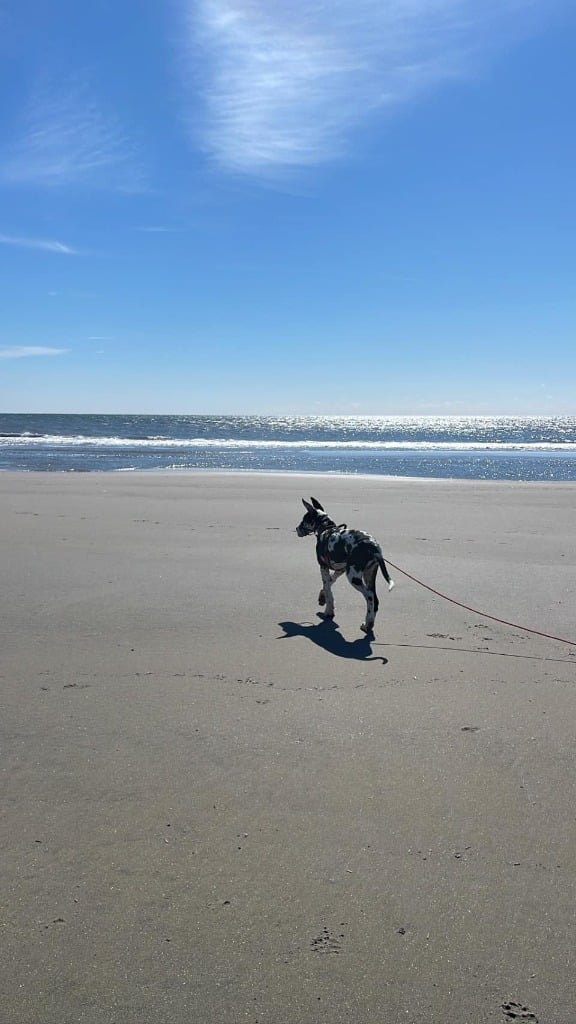
11. Potty Training your Great Dane Puppies:
Just like human babies, your Great Dane puppy needs to be potty trained. It’s important to start early, as puppies have very small bladders and need to go often. The best way to potty train a puppy is with positive reinforcement.
12 Potty Training Tips for a Great Dane Puppy
Potty Training in an Apartment
Best Training Treats for Great Dane Puppies
Whenever they go in the right spot, give them lots of praise and a treat. If they have an accident, just clean it up without making a fuss.
Baby Danes are also more likely to toilet in the same spot if it’s easy for them to get to.
Incorporate training daily to make sure their designated potty area is easily accessible and that there are no obstacles in their way.
If you have other dogs in your house, your new puppy may pick up on potty training quicker as Great Danes love to live a ‘pack life’. Additionally, it is possible that your breeder helped them with their potty training before you brought them home!
Potty Training Tips
How to Potty Train a Great Dane Puppy
Using Treats for Potty Training
Practicing potty training takes a lot of patience, but you both will get there eventually.
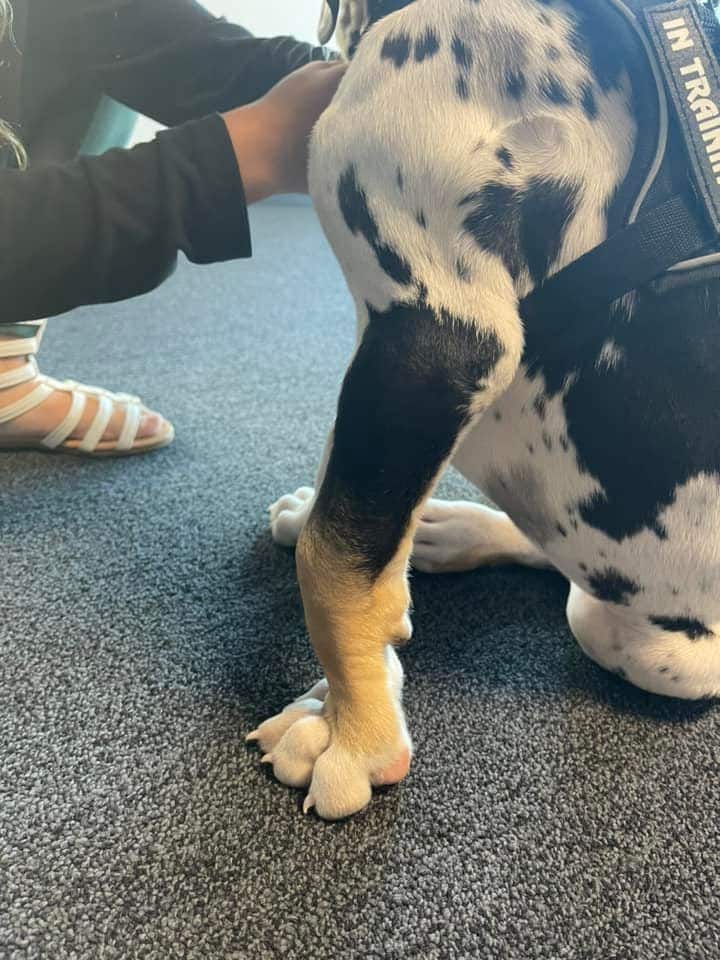
12. The Best Kibble for Great Dane Puppies
Puppies are growing at an accelerated rate and need different amounts of nutrients than adult. Their diet must contain the right balance of proteins, fats, vitamins, and minerals to promote healthy development. Most importantly, it must be the correct ratio of calcium and phosphorus.
Many commercial, regular puppy kibble is not formulated to meet these nutritional needs. Not all brands are created equal.
For more information about what food to choose, make sure to read our Food Blog.
For example, some brands use lower quality ingredients that might not be as easily digestible. Others add fillers or artificial ingredients that can cause digestive upset or other problems.
When choosing a kibble for your Great Dane pup, look for a high-quality product that uses quality ingredients. Avoid products with fillers or artificial ingredients, and opt for a formula that is easy to digest. You may also want to consult with your veterinarian to find the best food for your Great Dane puppy.
Regular Puppy Food
Regular puppy kibble is not suitable for growing large breeds. Large and giant breed puppies grow at an accelerated rate and need a different ratio of calcium to phosphorus. If the ratio is too high, it can cause joint problems later in life.
How Much Do Great Danes Eat?
Puppy Food
8 Must Know’s for Great Dane Nutrition
Additionally, large breeds need more calories than small breeds. Puppy kibble typically contains more calories than adult food. Find a food that’s specifically for large breeds.
There is a common debate nowadays on whether to feed ‘Adult’ or ‘Puppy’ kibble. The truth is, it does not matter which one you go with, as long as it is correctly formulated. Many Large Breed Puppy kibbles are correctly made for growth, as are large breed adult plans.
Adult Great Dane Large Breed Food
The best foods for Large Breeds are formulated specifically to meet their nutritional needs and maintain healthy growth. We recommend feeding a kibble that has meat or meal as the first ingredient, which can help reduce risk of bloat!
Dane puppies have special needs when it comes to their food. Some adult formulas will work, and some will not.
You can see the full list of foods we recommend for your pup. However if you notice any signs your pup isn’t thriving like loose stools or gas (which can both mean there might be an issue with digestion), consult your vet immediately!
Great Dane: Puppy vs. Adult Food
What Foods Help a Dog’s Upset Stomach?
A Tasty Top: The Top 11 Foods to Feed a Great Dane
Should I Feed Grain Free?
Adding CBD Into Your Great Dane’s Diet
Esther Buffered Esther C to Prevent HOD and Knuckling
Many people automatically assume that their dogs are healthy when in reality, they may be suffering from something like knuckling or HOD.
This is due to lack of vitamin C which can lead to other issues such as anxiety-inducing situations becoming more stressful and painful for the dog! If you want your pup’s quality life preserved then give them an Ester C supplement ASAP – we recommend starting with 1000mg daily intake before increasing amounts until desired result.

We have an additional blog post with more information about Ester C supplements here.
13. Tips for Successfully Adding a Great Dane Puppy to Your Family
As you can see, puppies are a lot of work but they are also incredibly rewarding pets. They need plenty of exercise and room to run, so make sure to play in a big yard or take your pup on long walks. In addition, be sure to start training and socializing your puppy as early as possible. This will help him grow into a well-adjusted adult dog. If you have any questions about caring for a Great Dane puppy, please feel free to contact us. We would be happy to help!
READ MORE:
